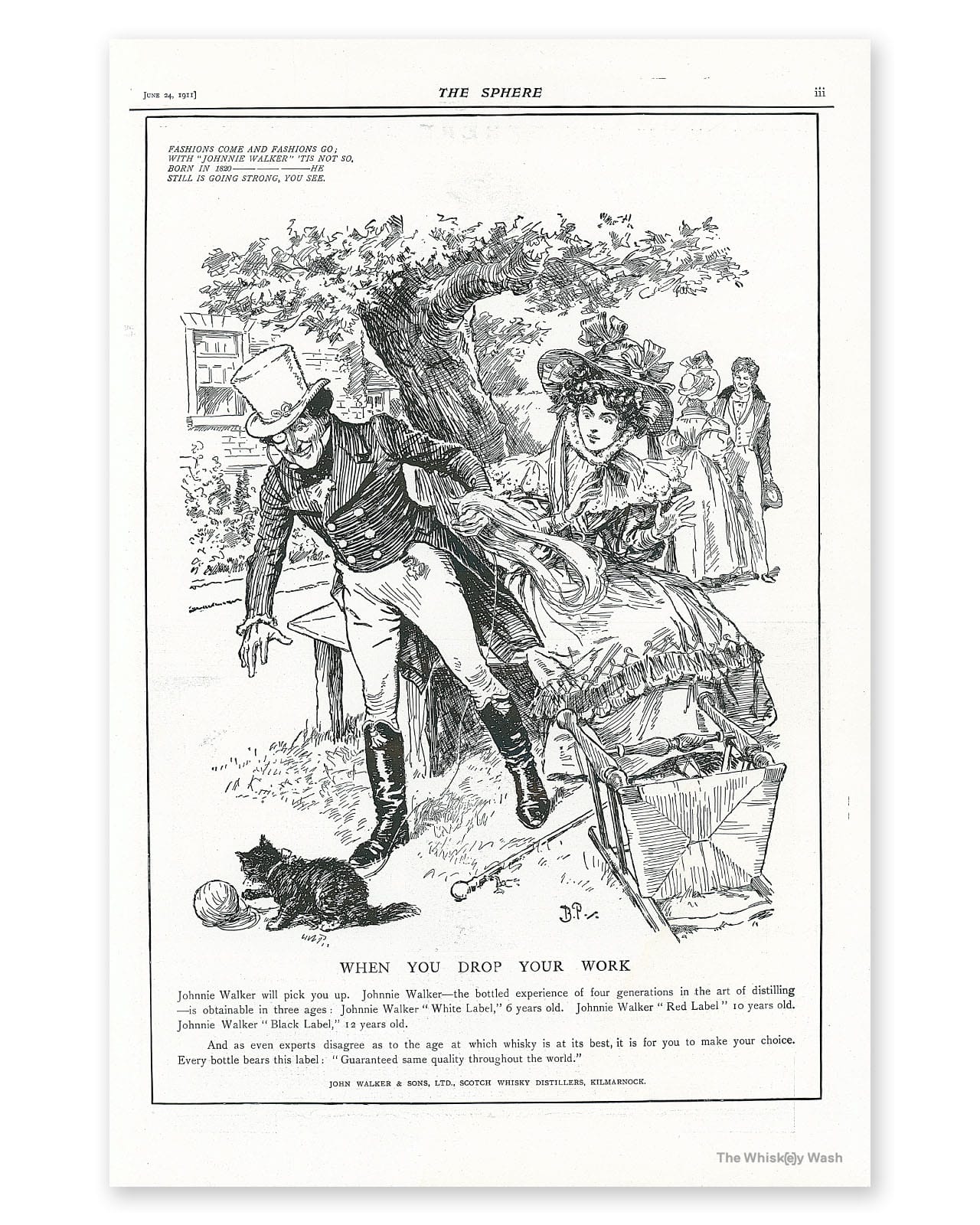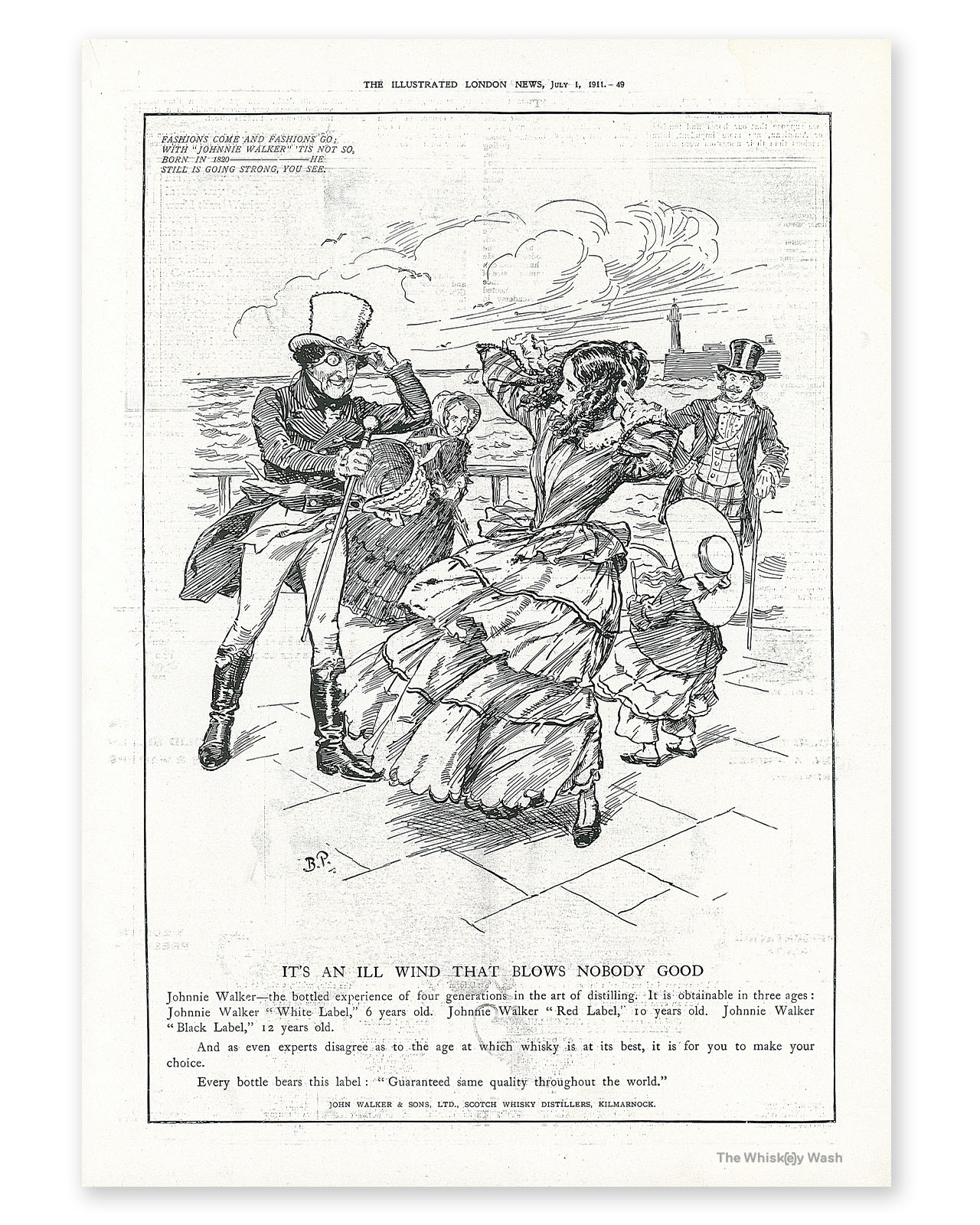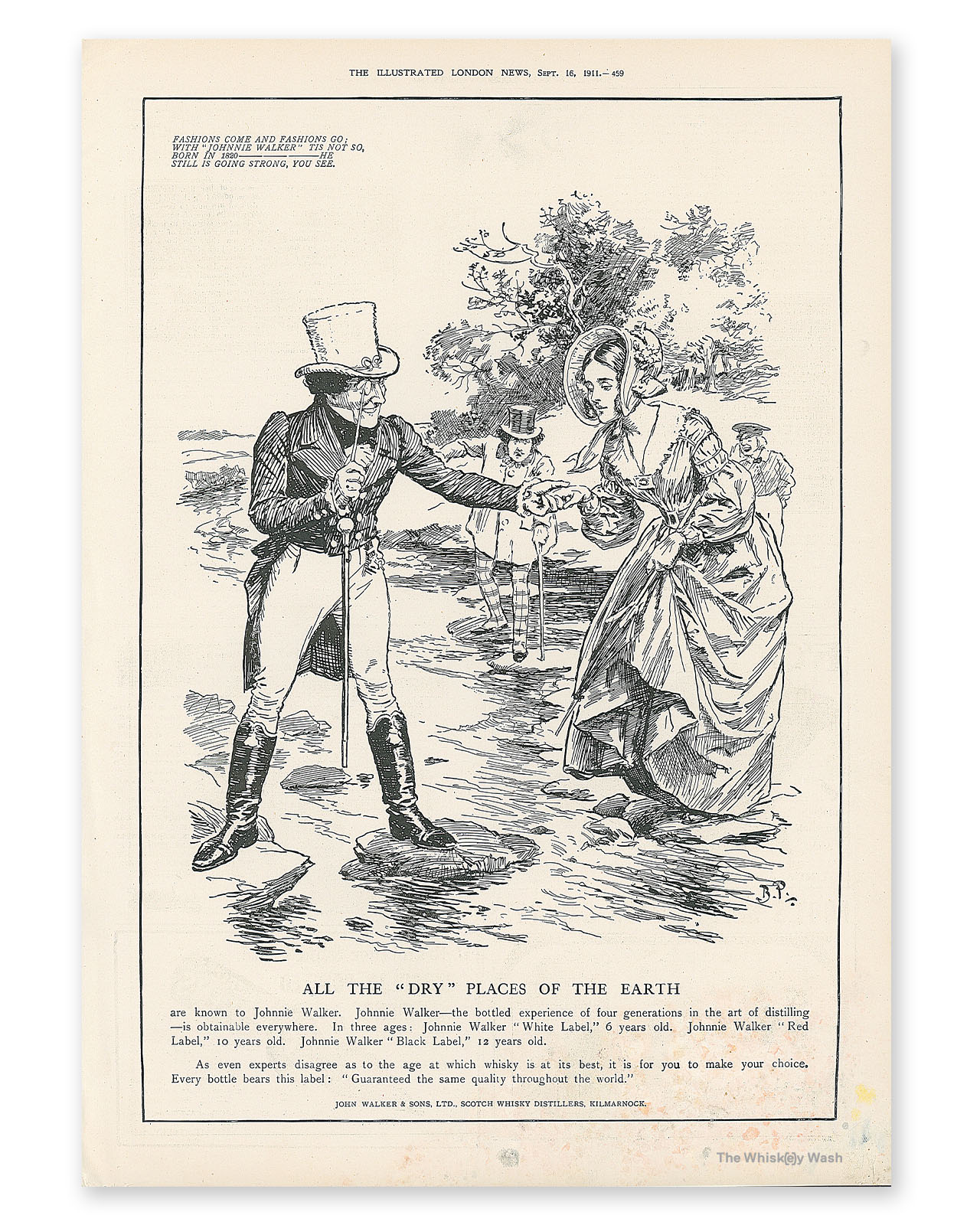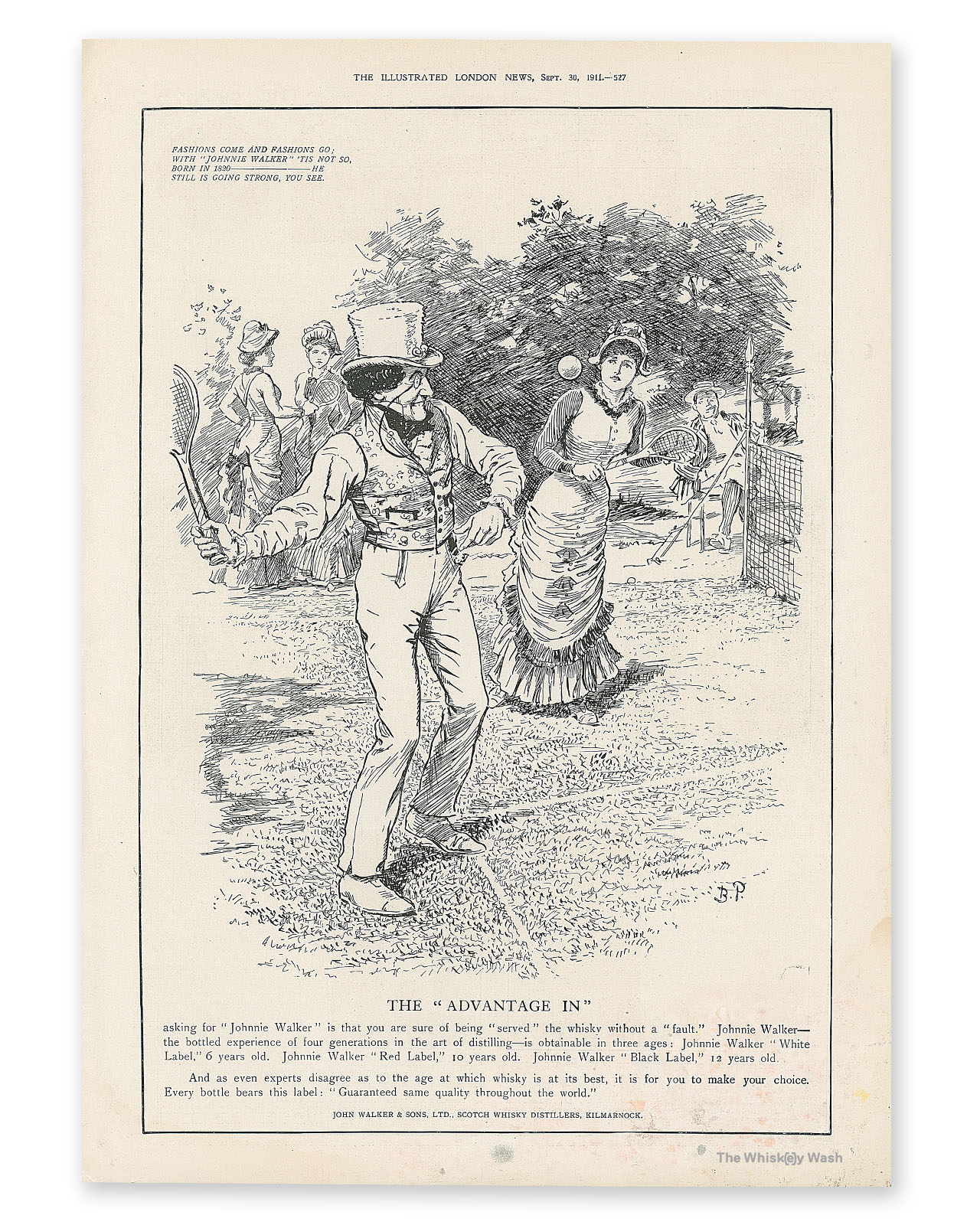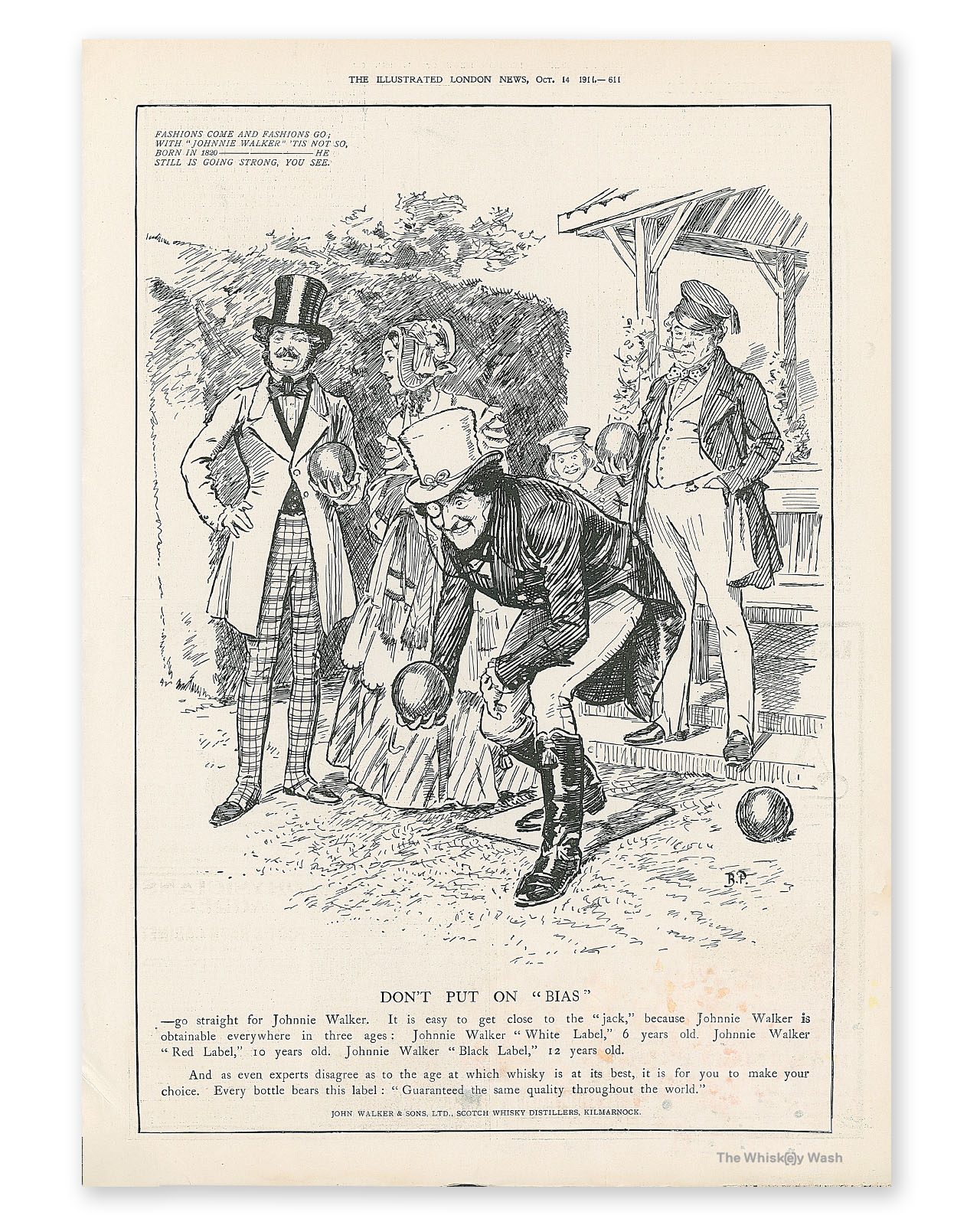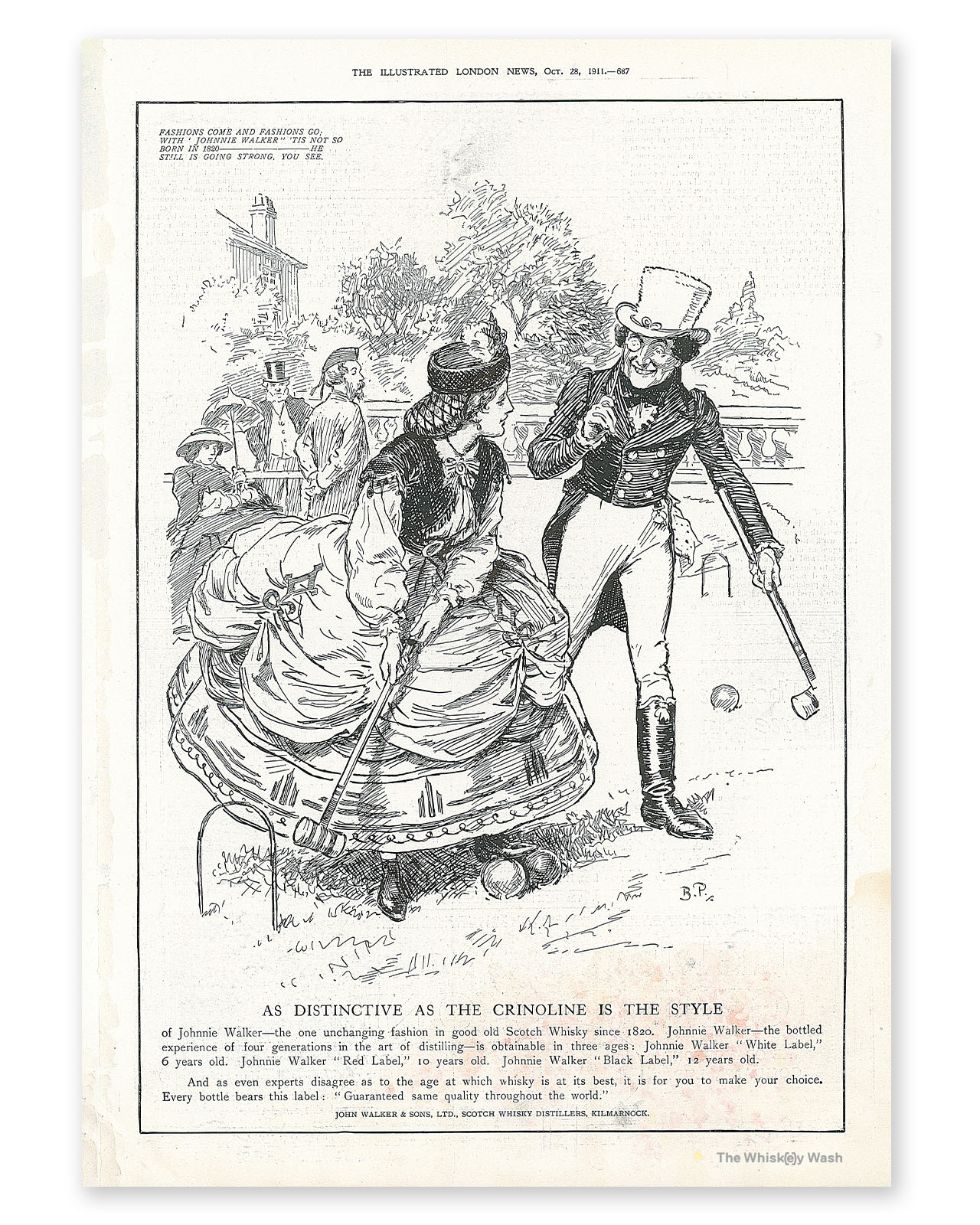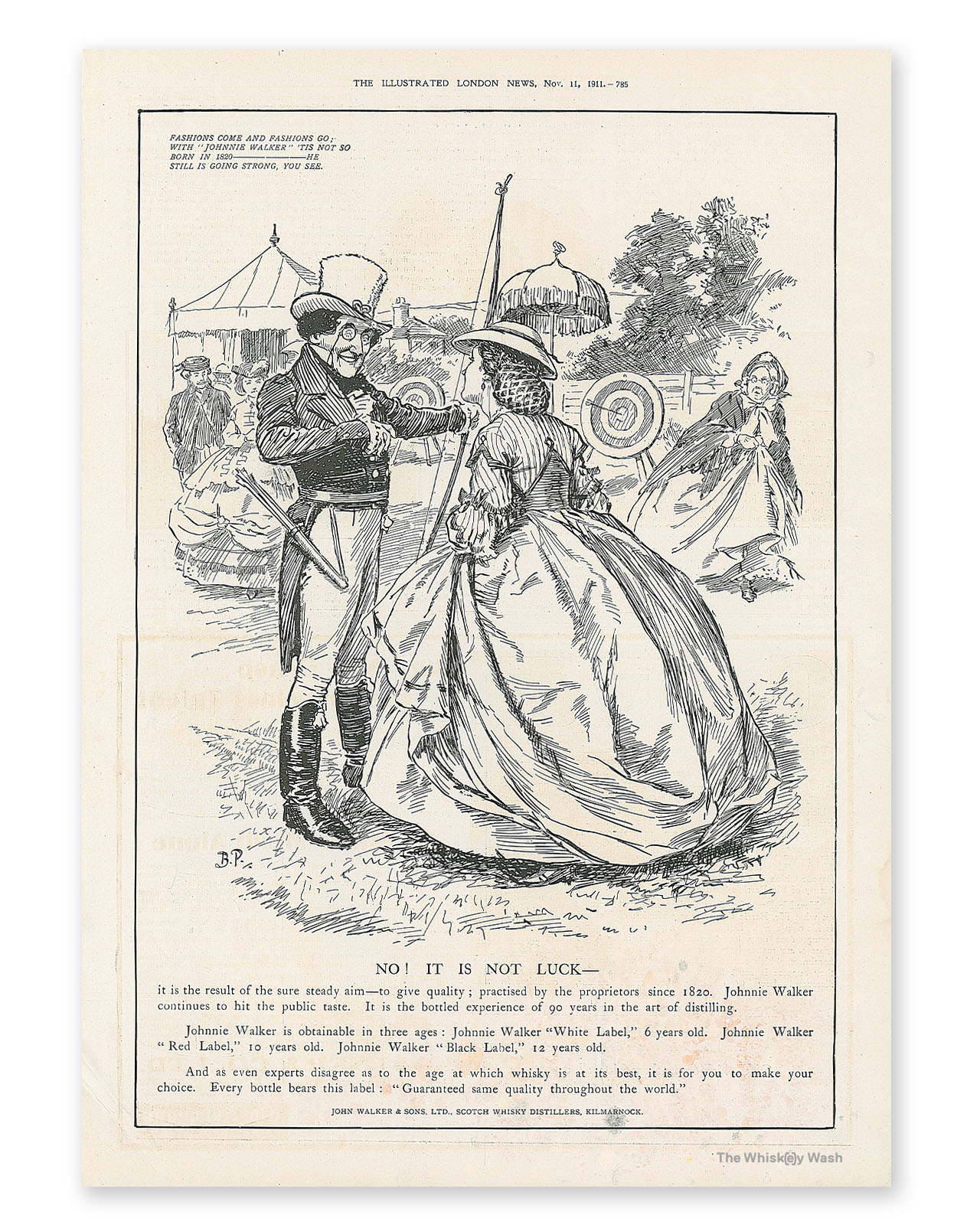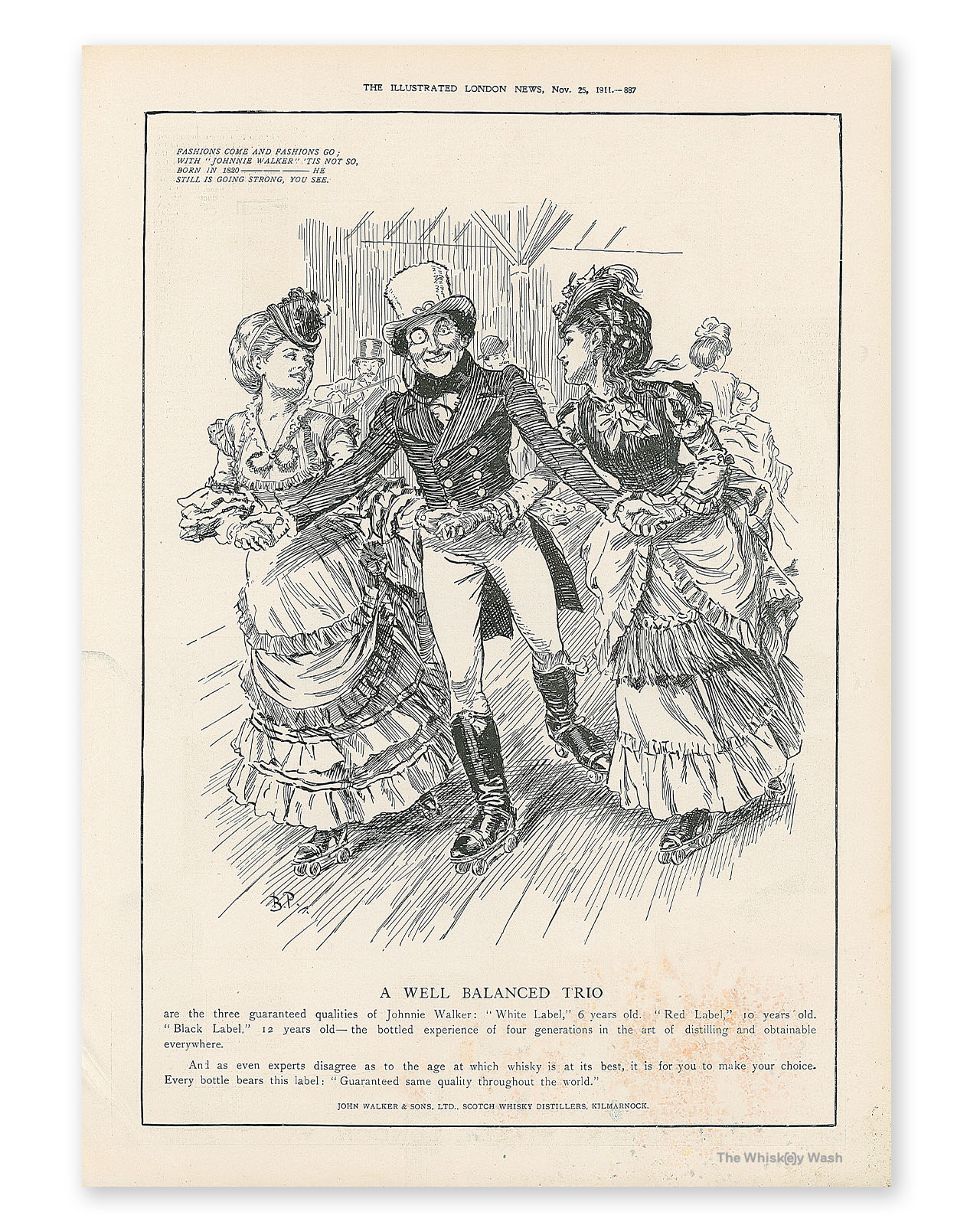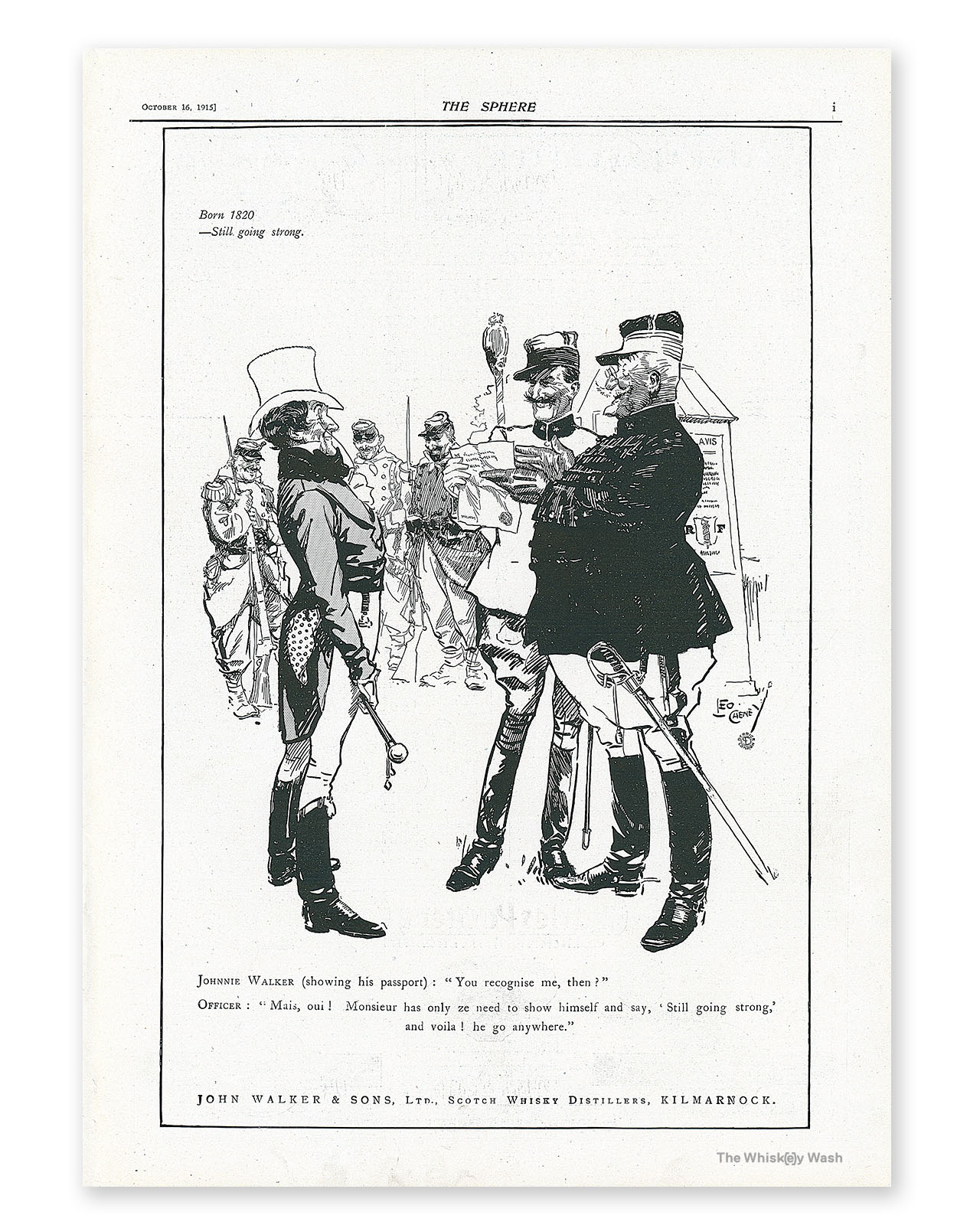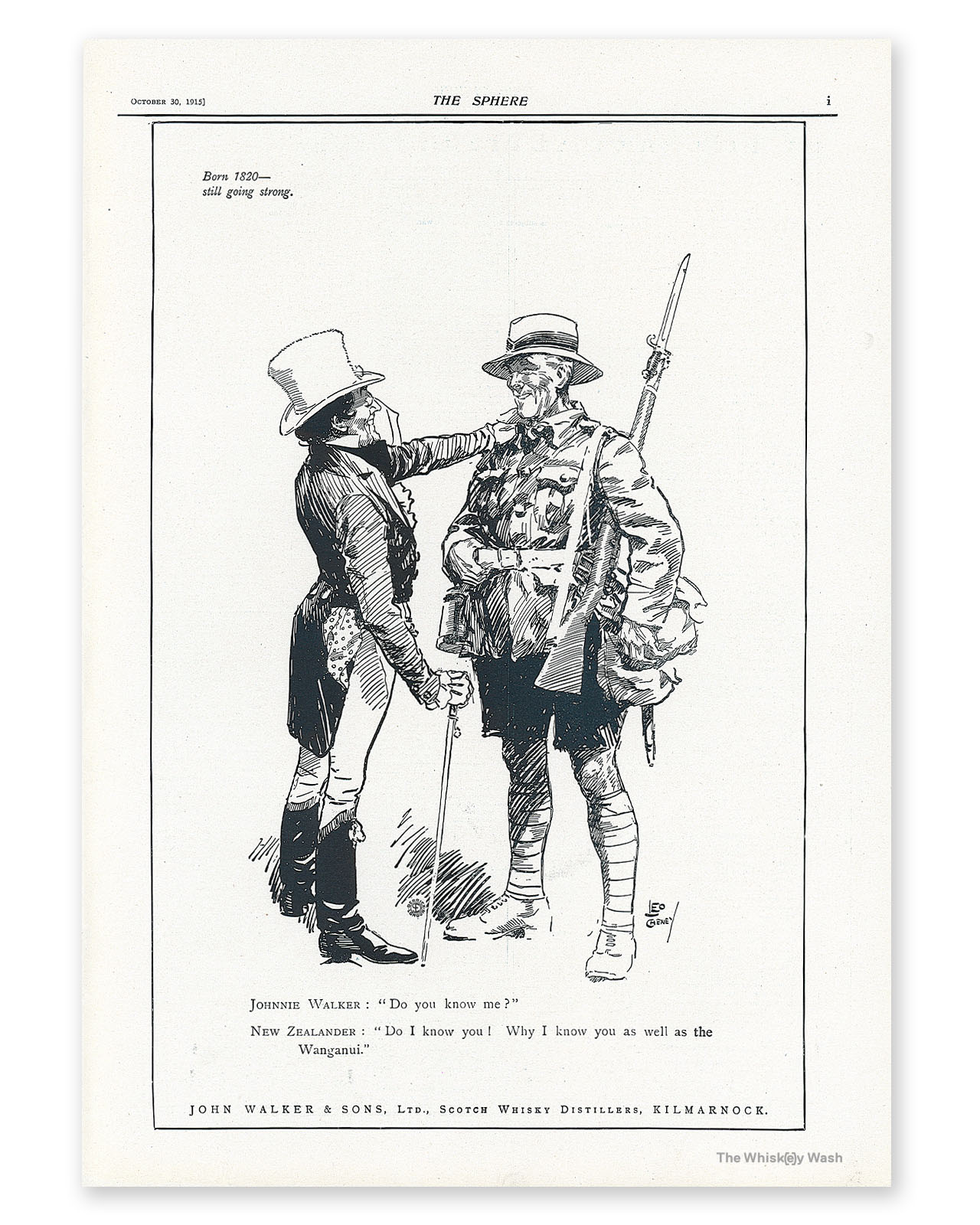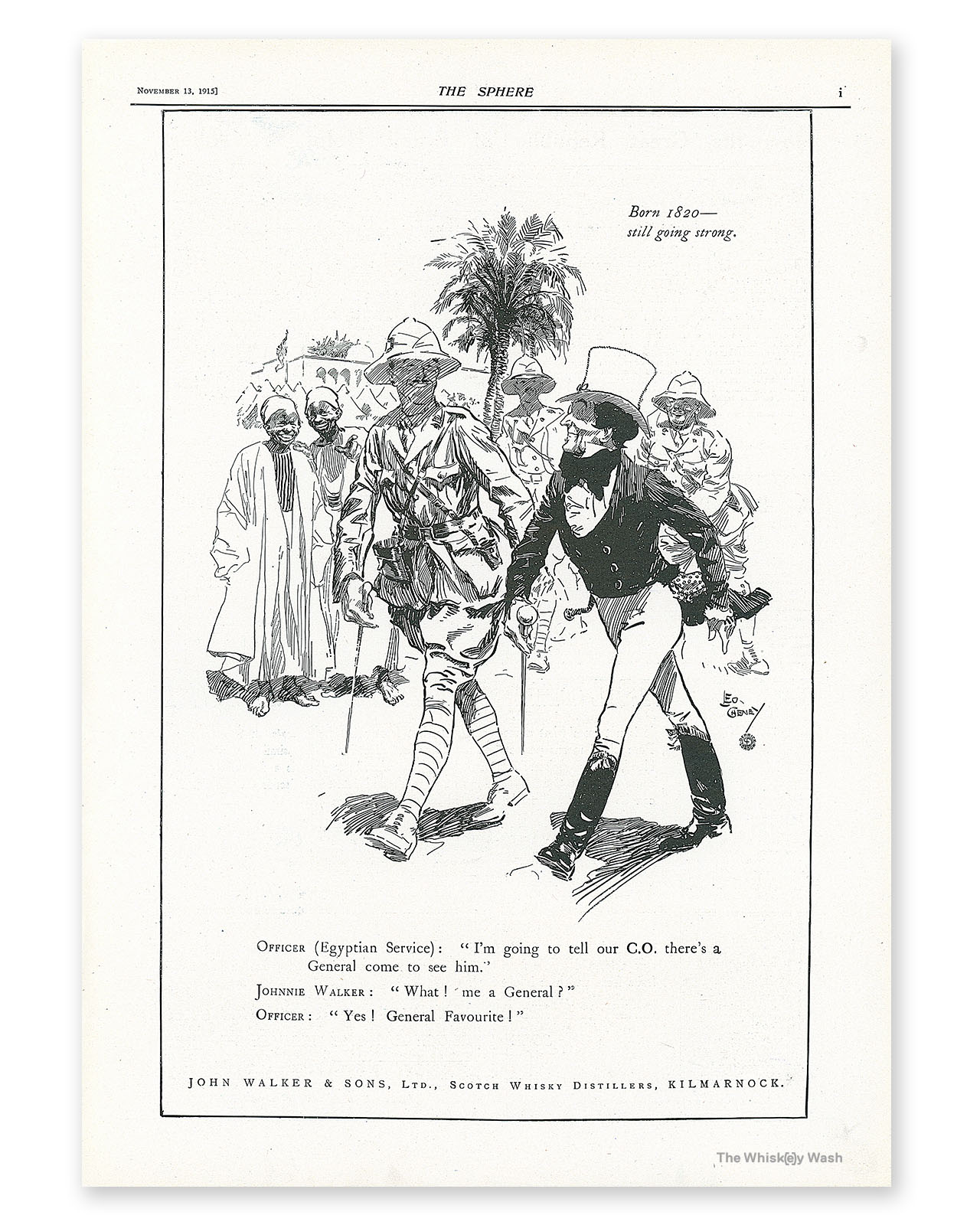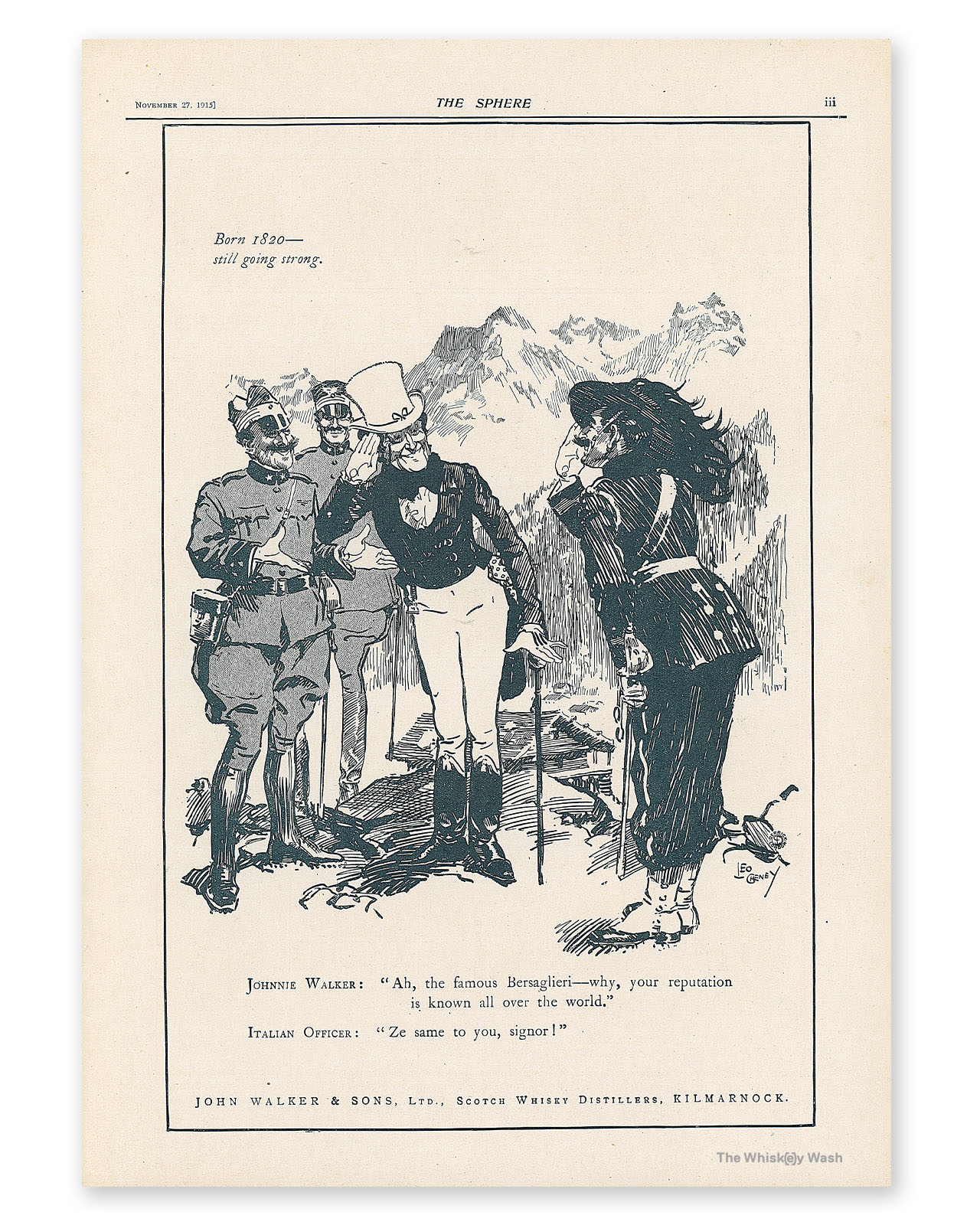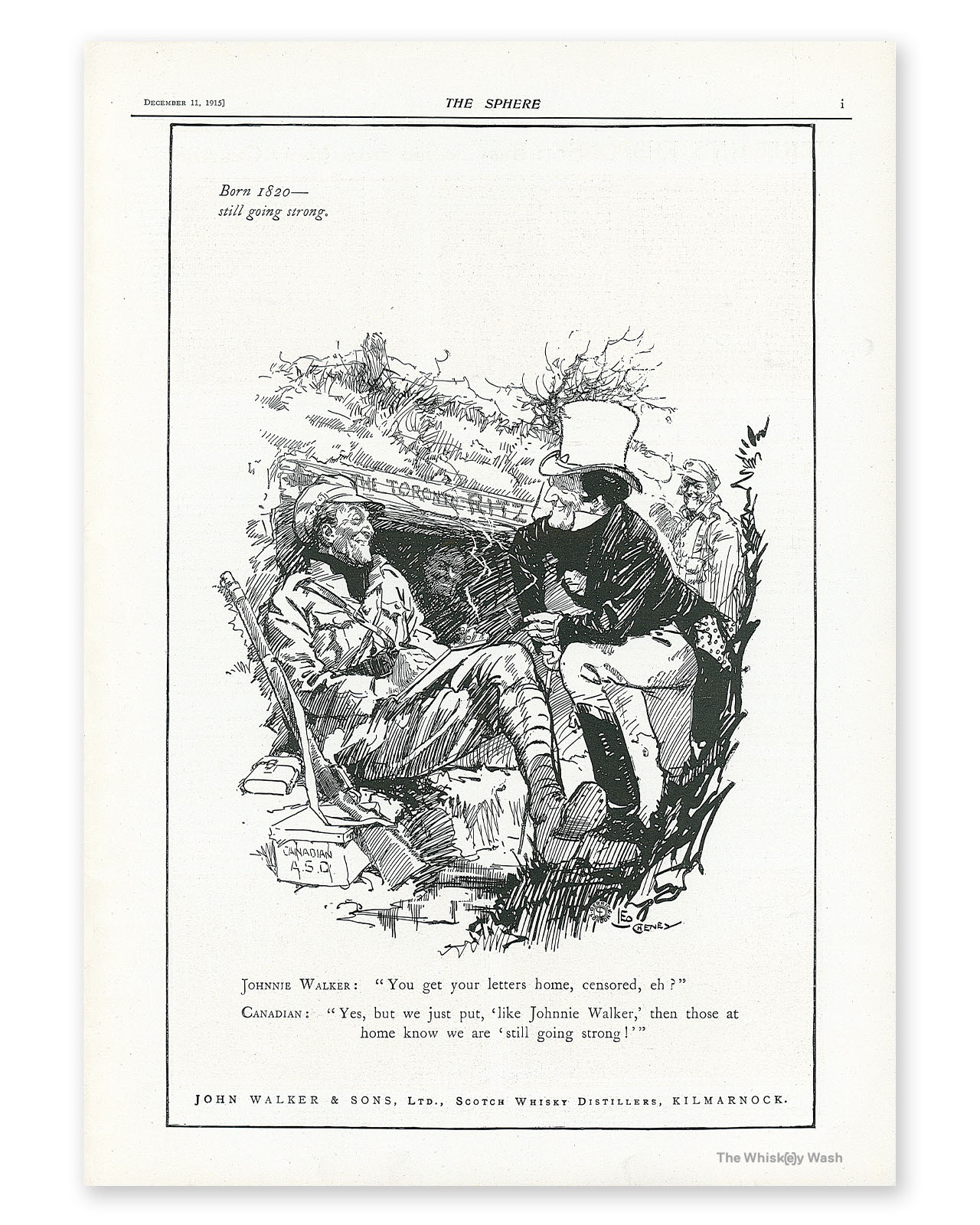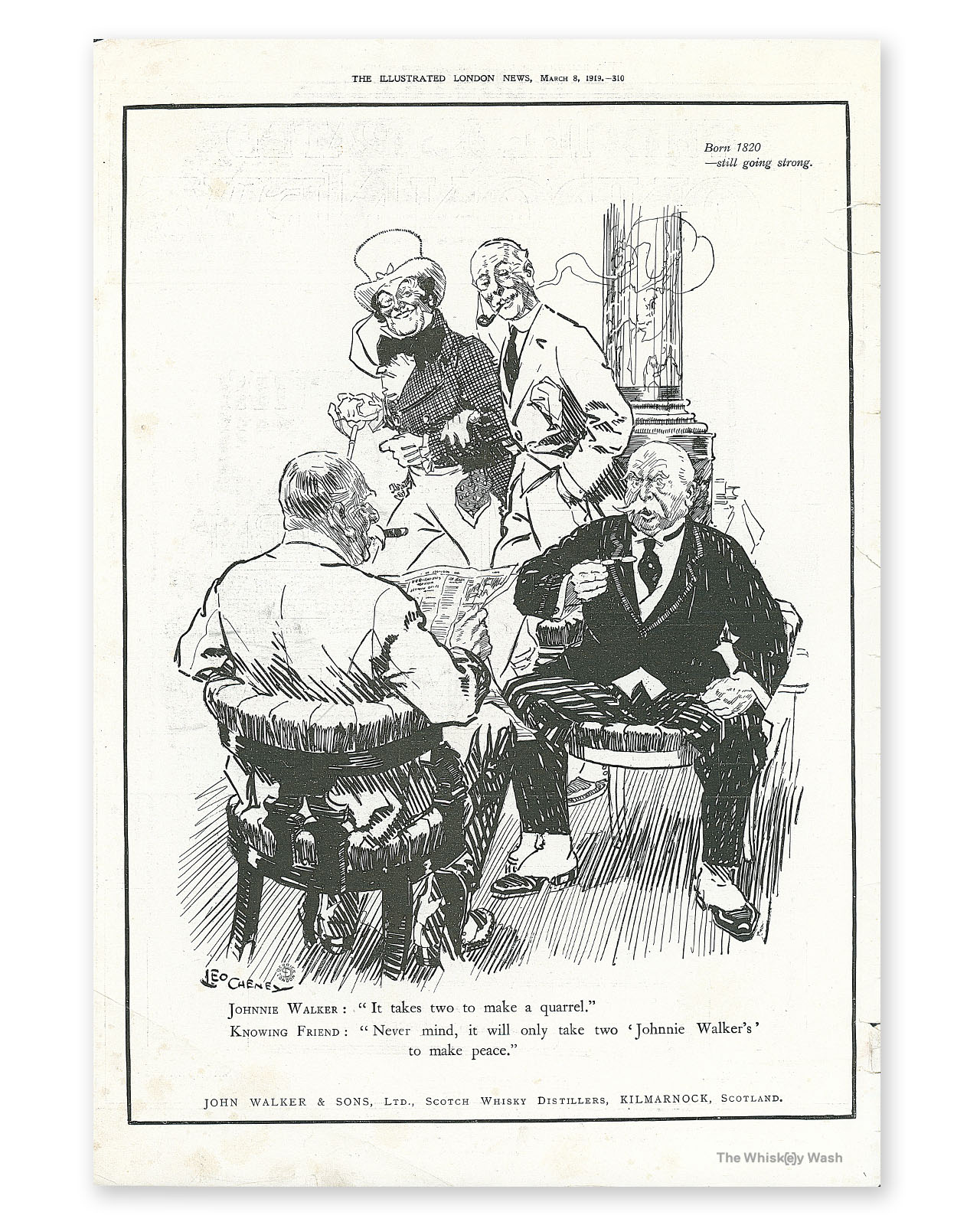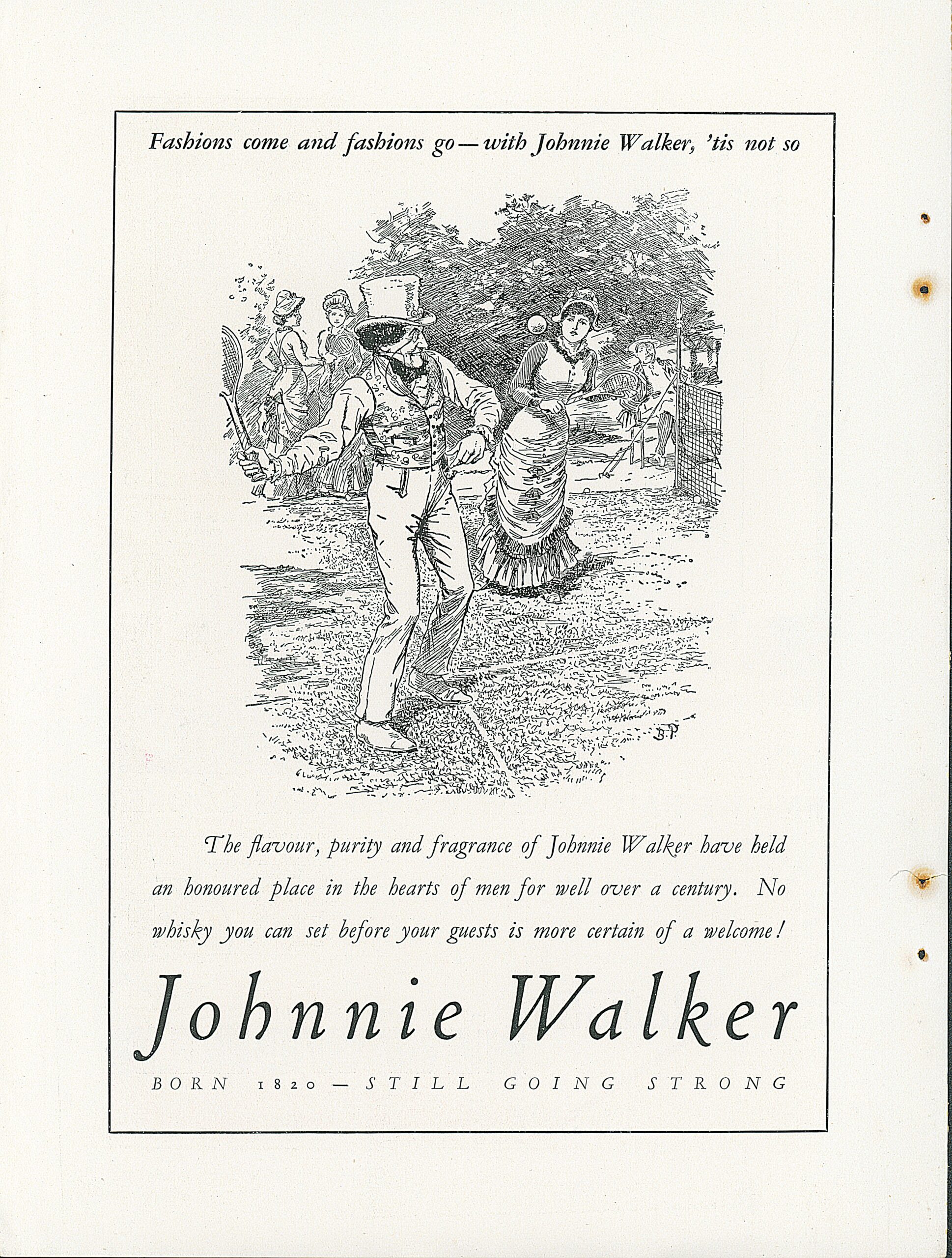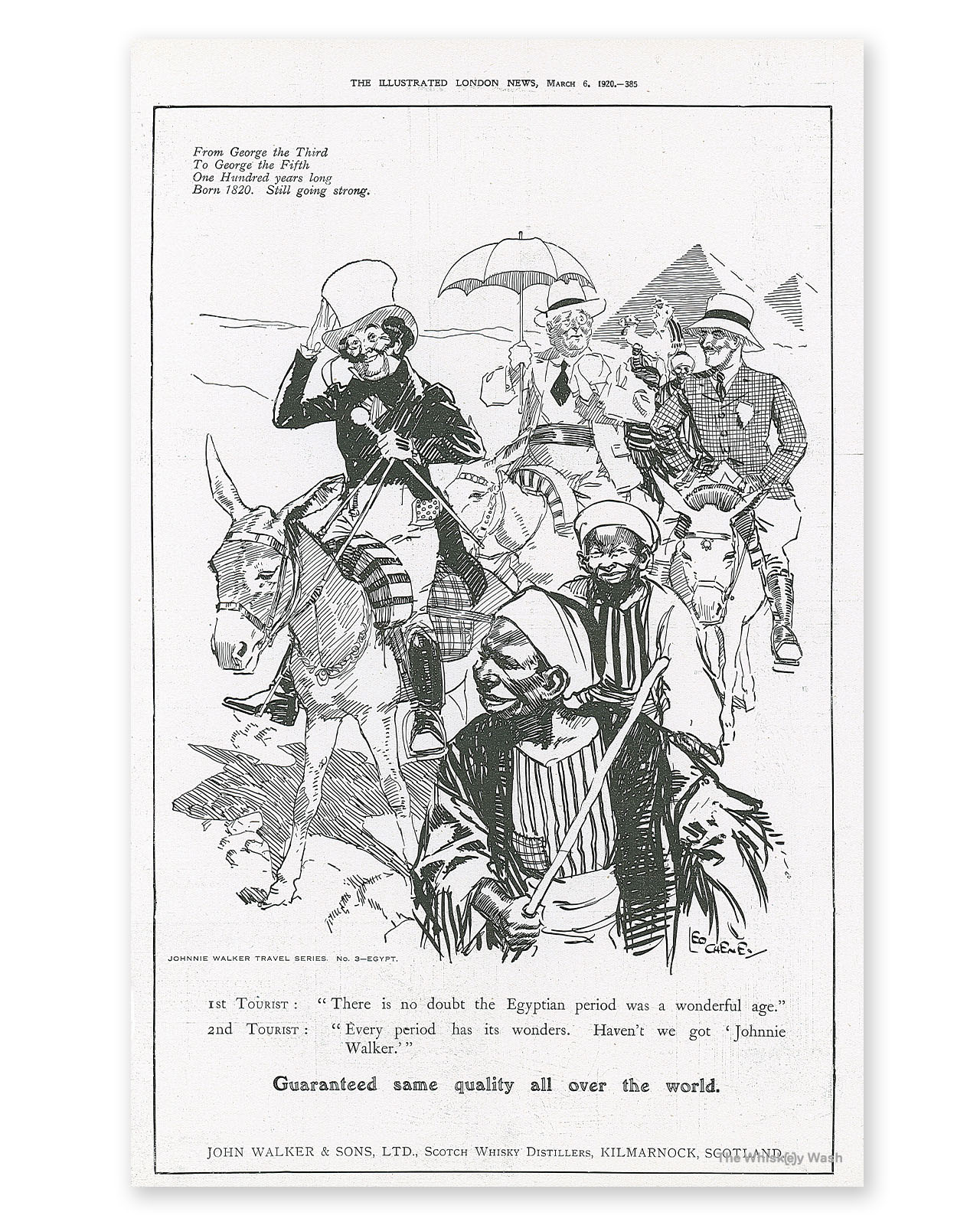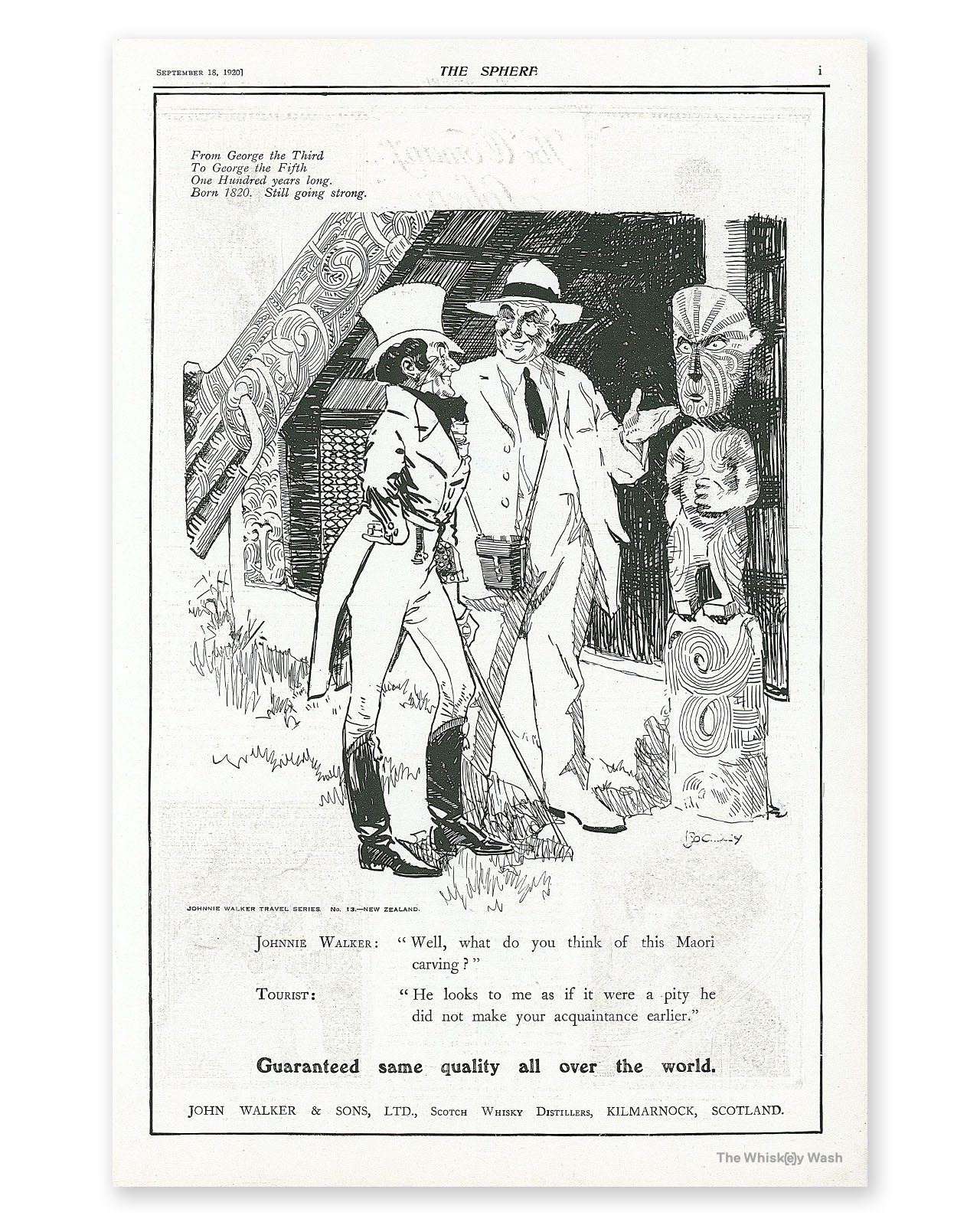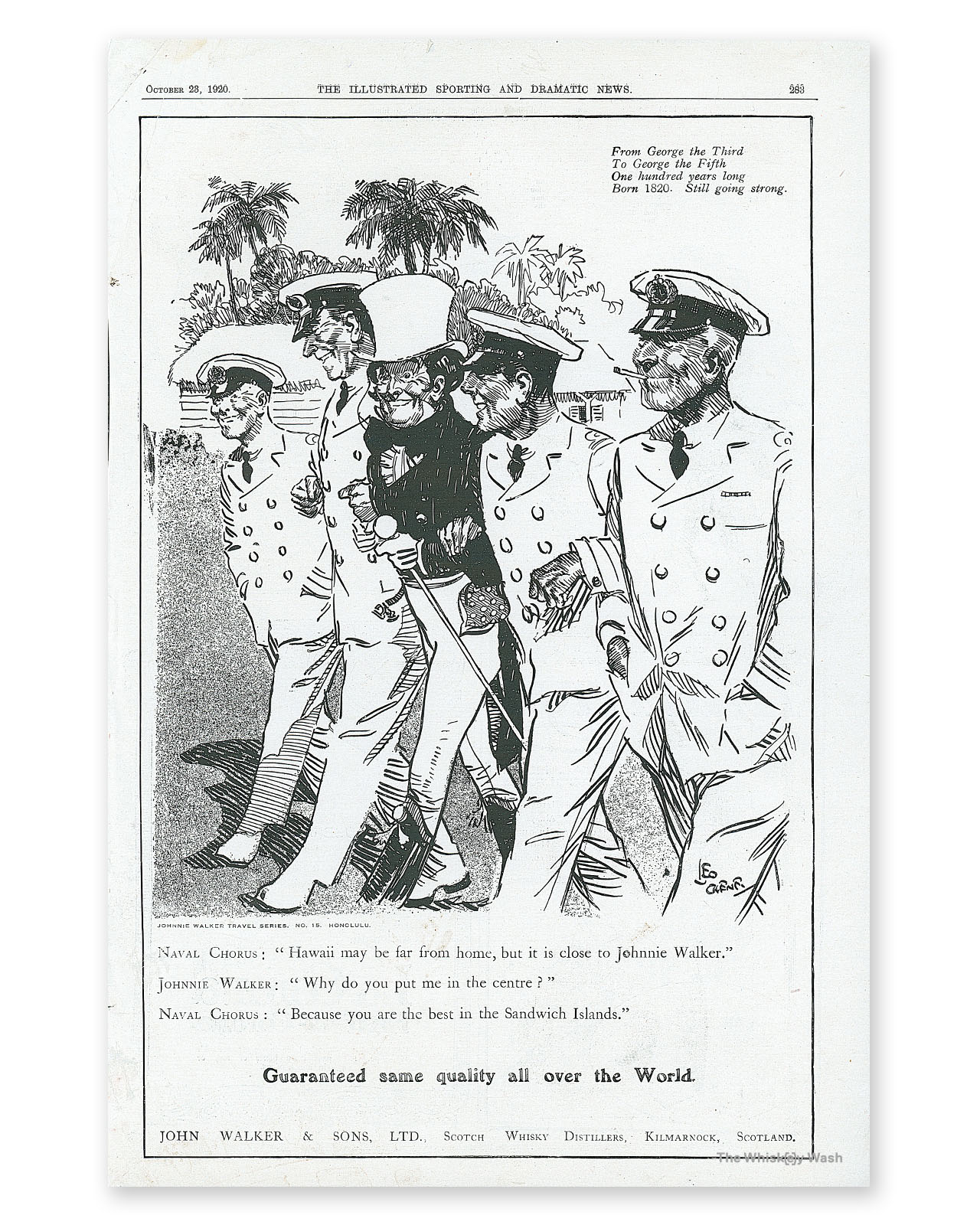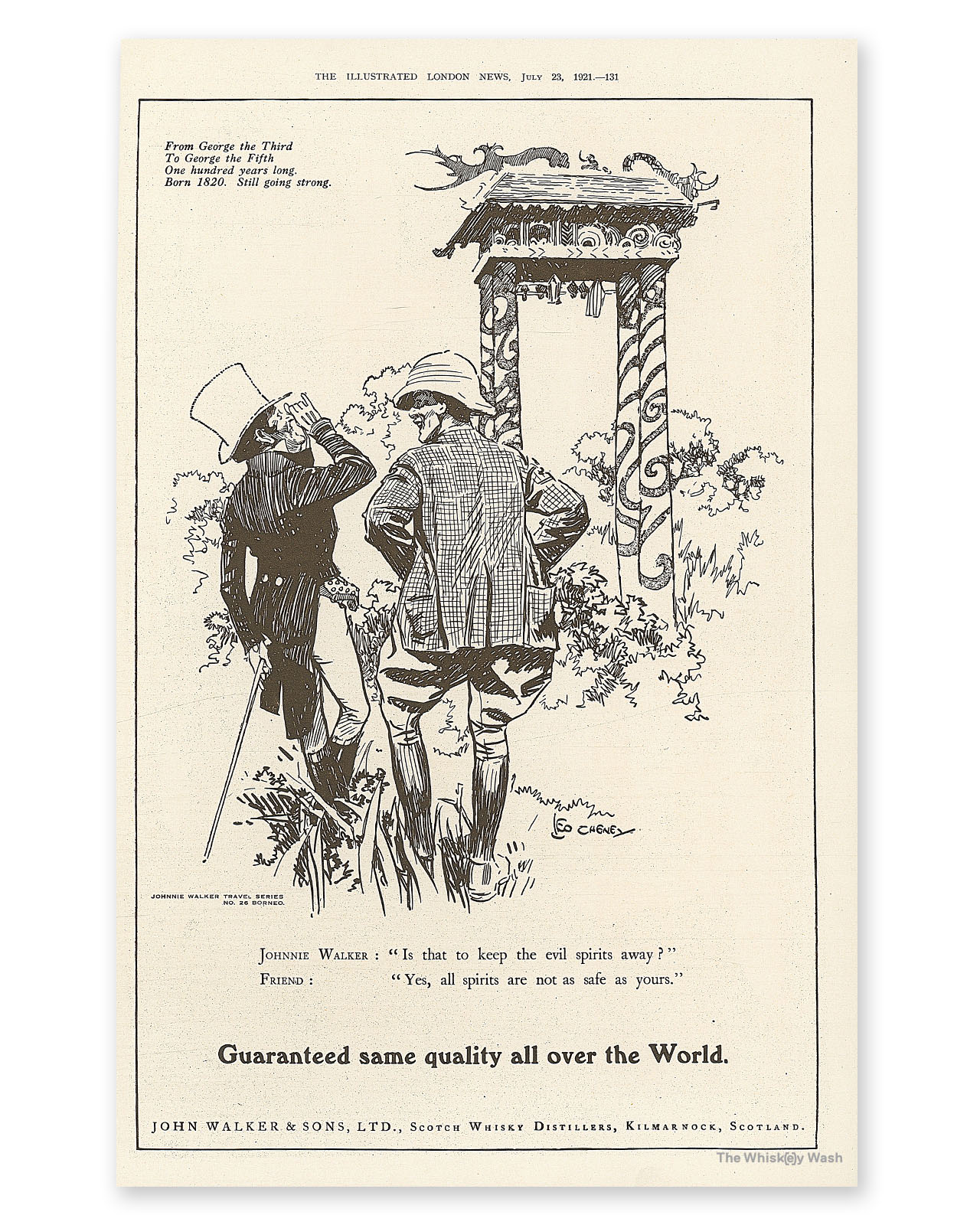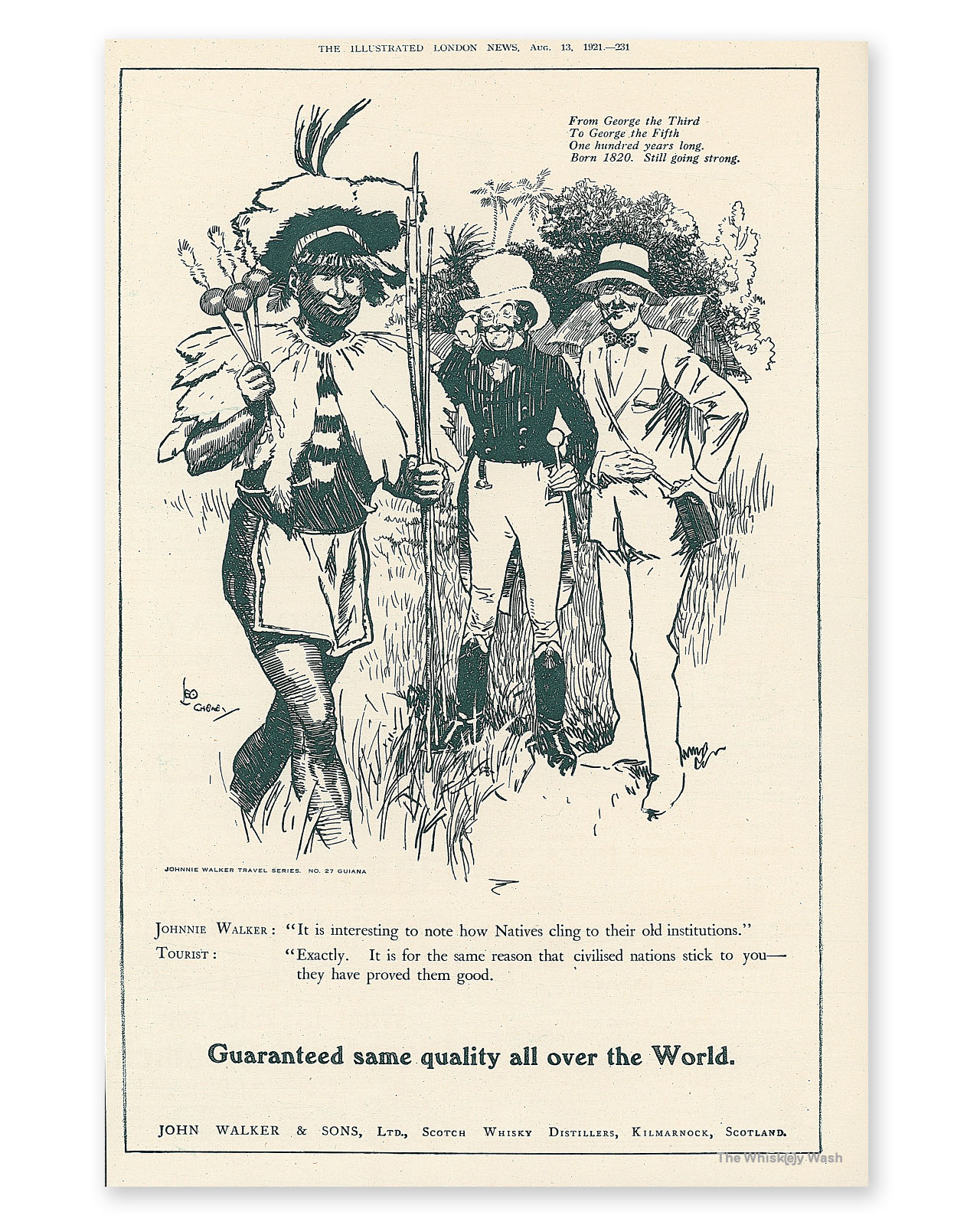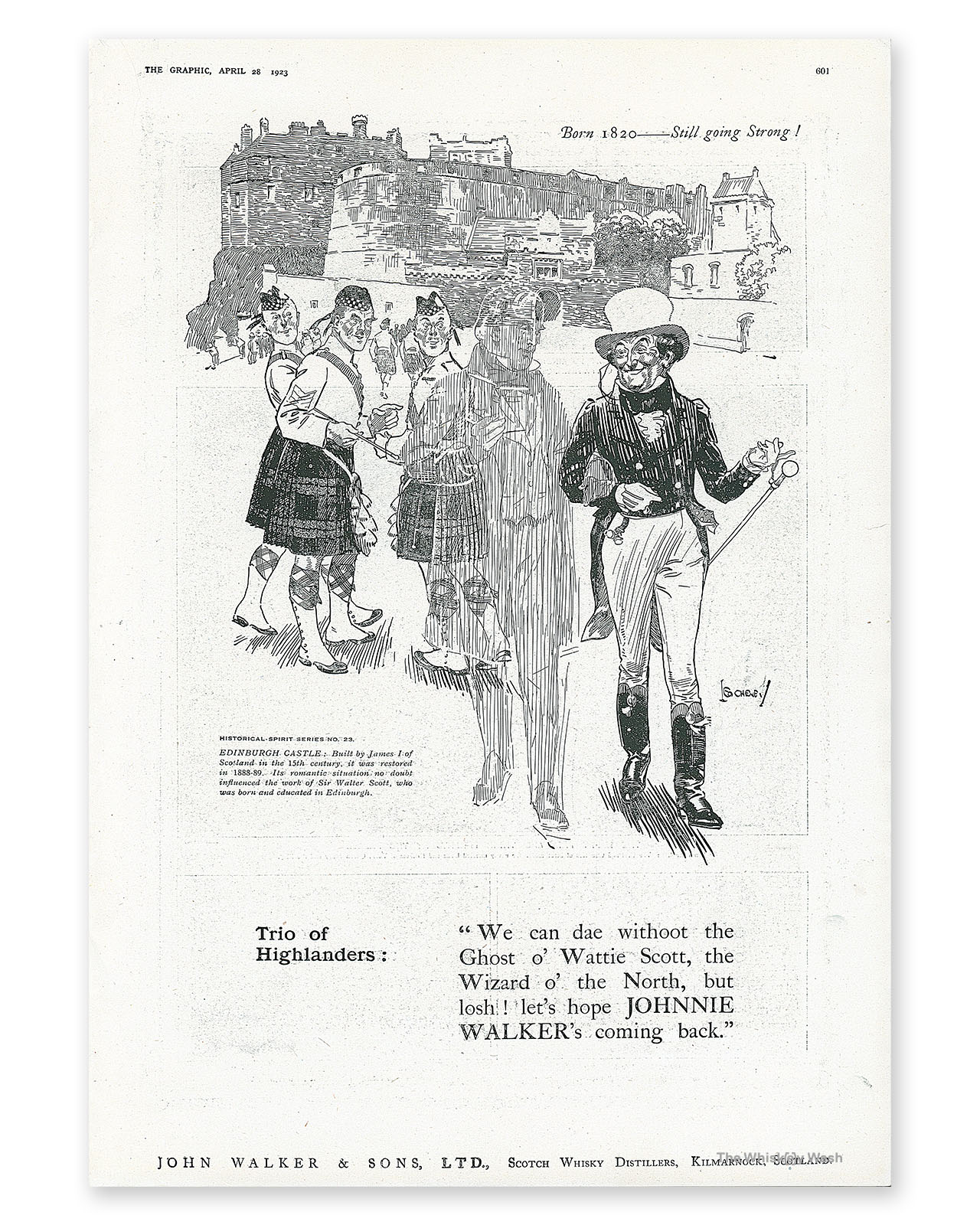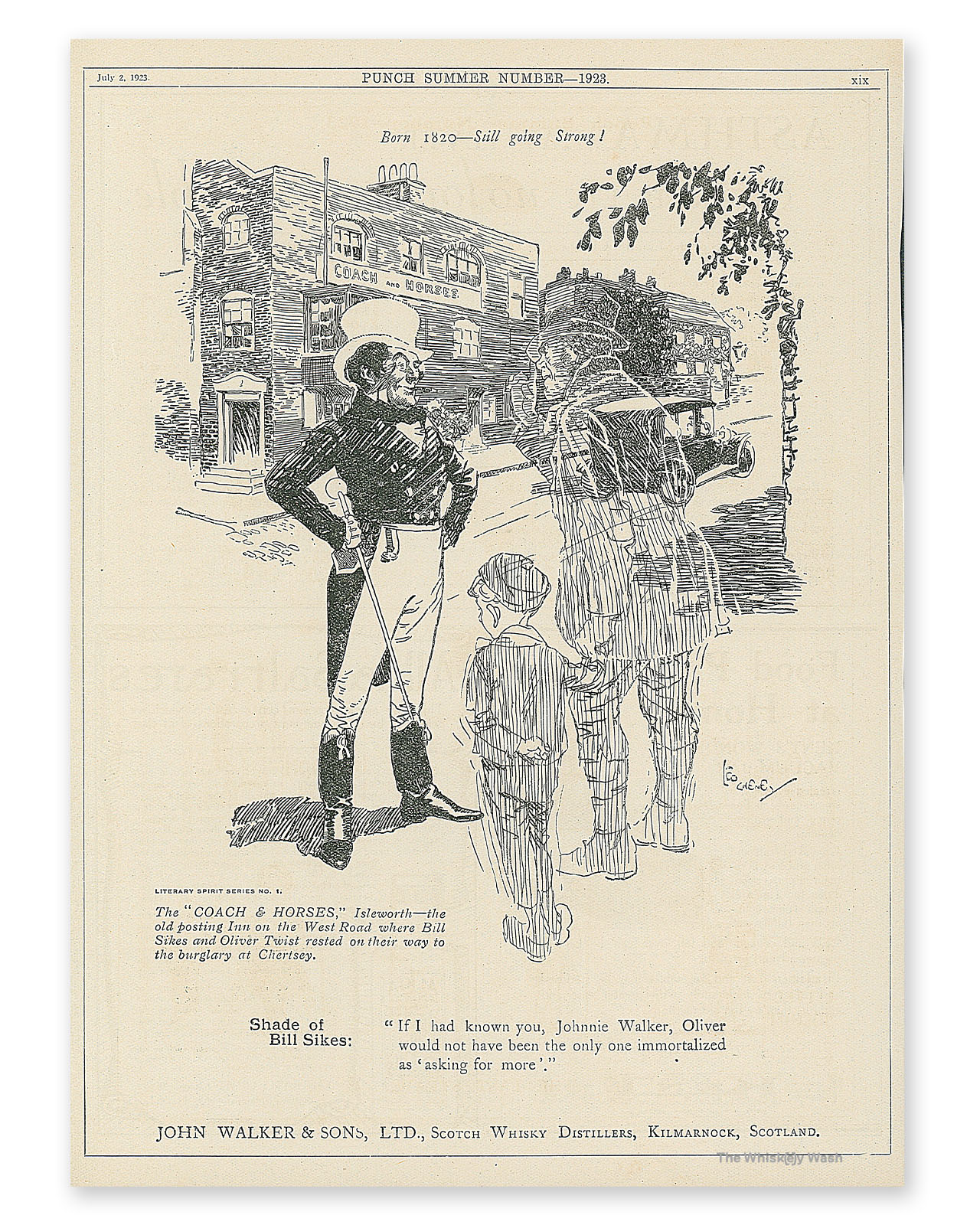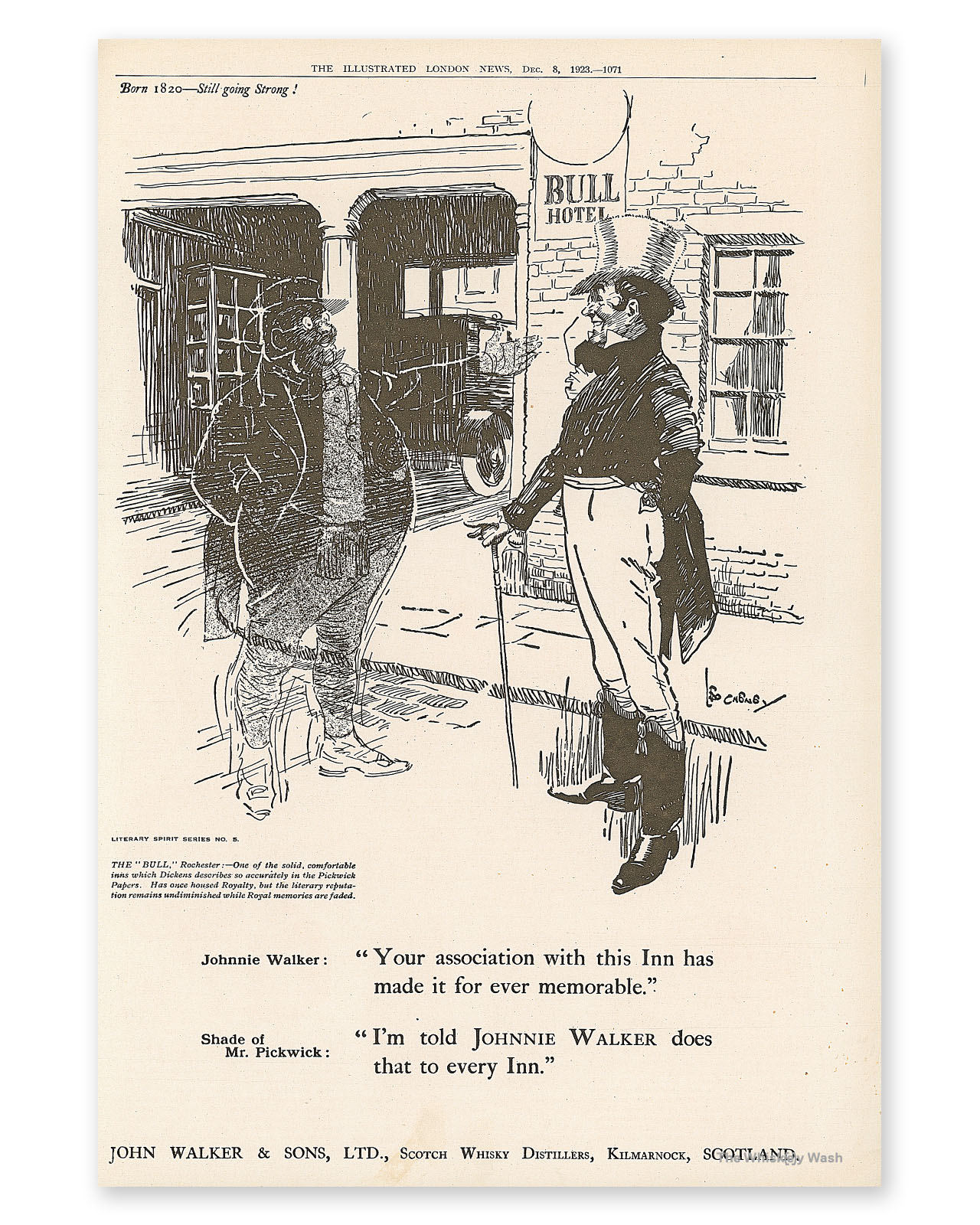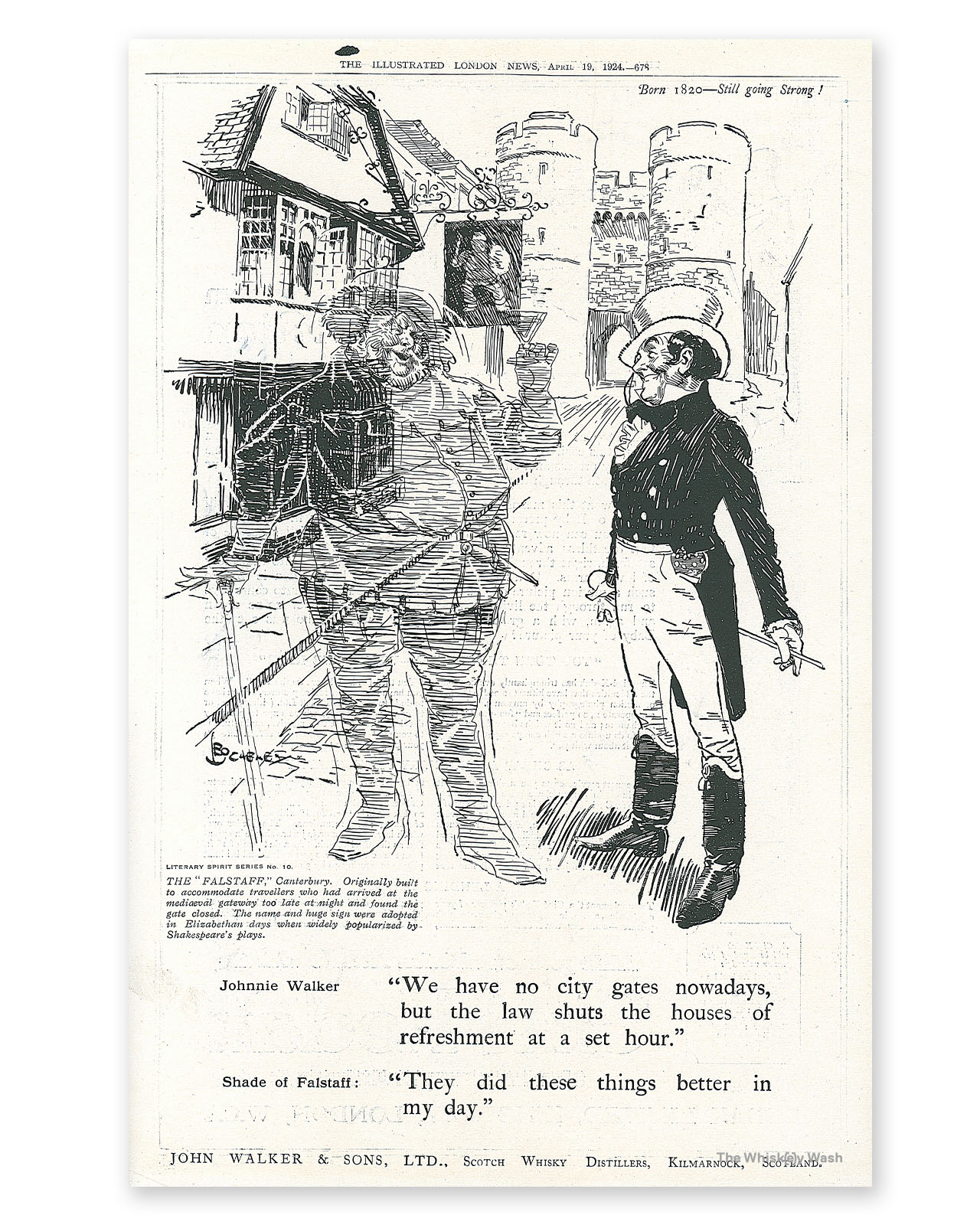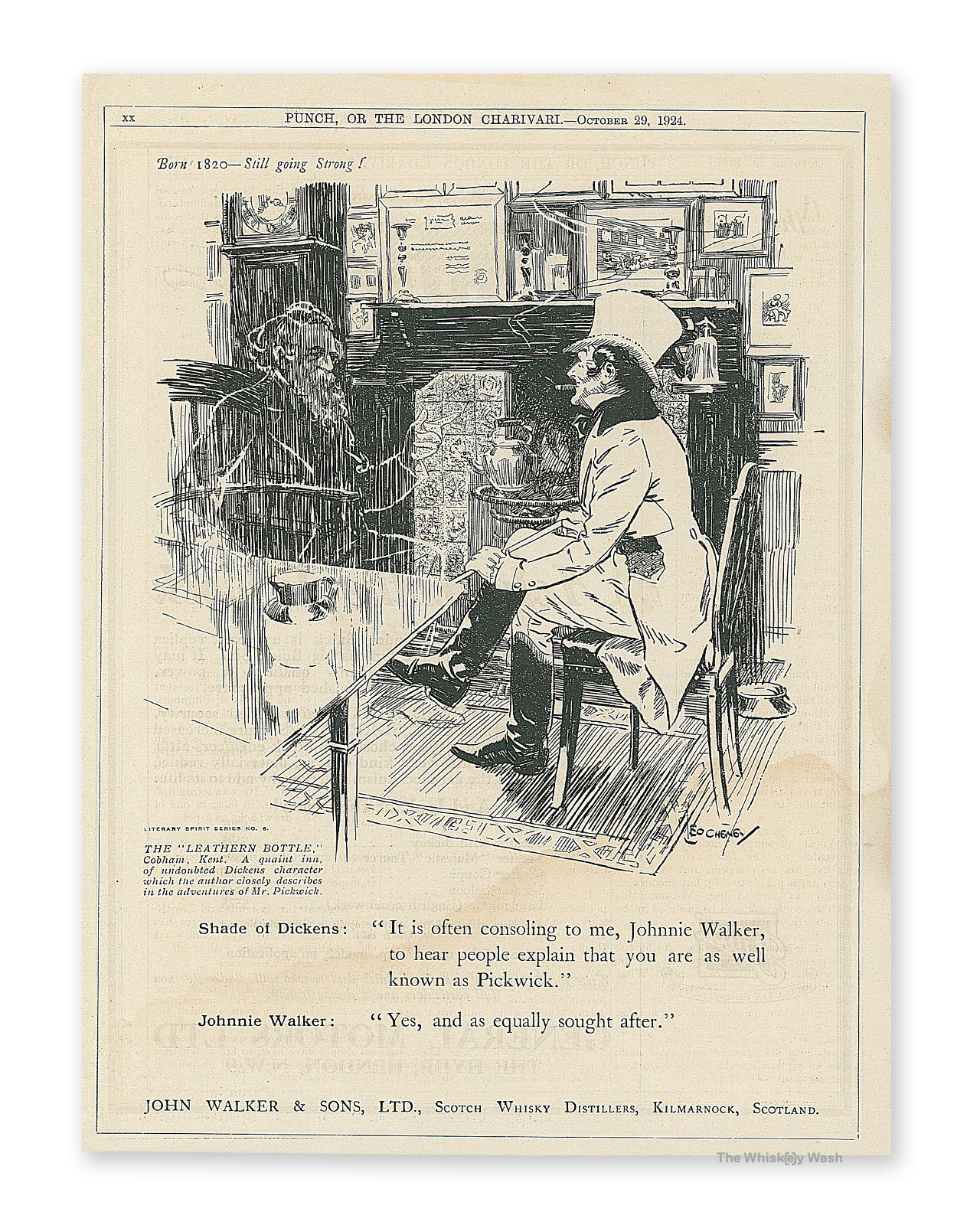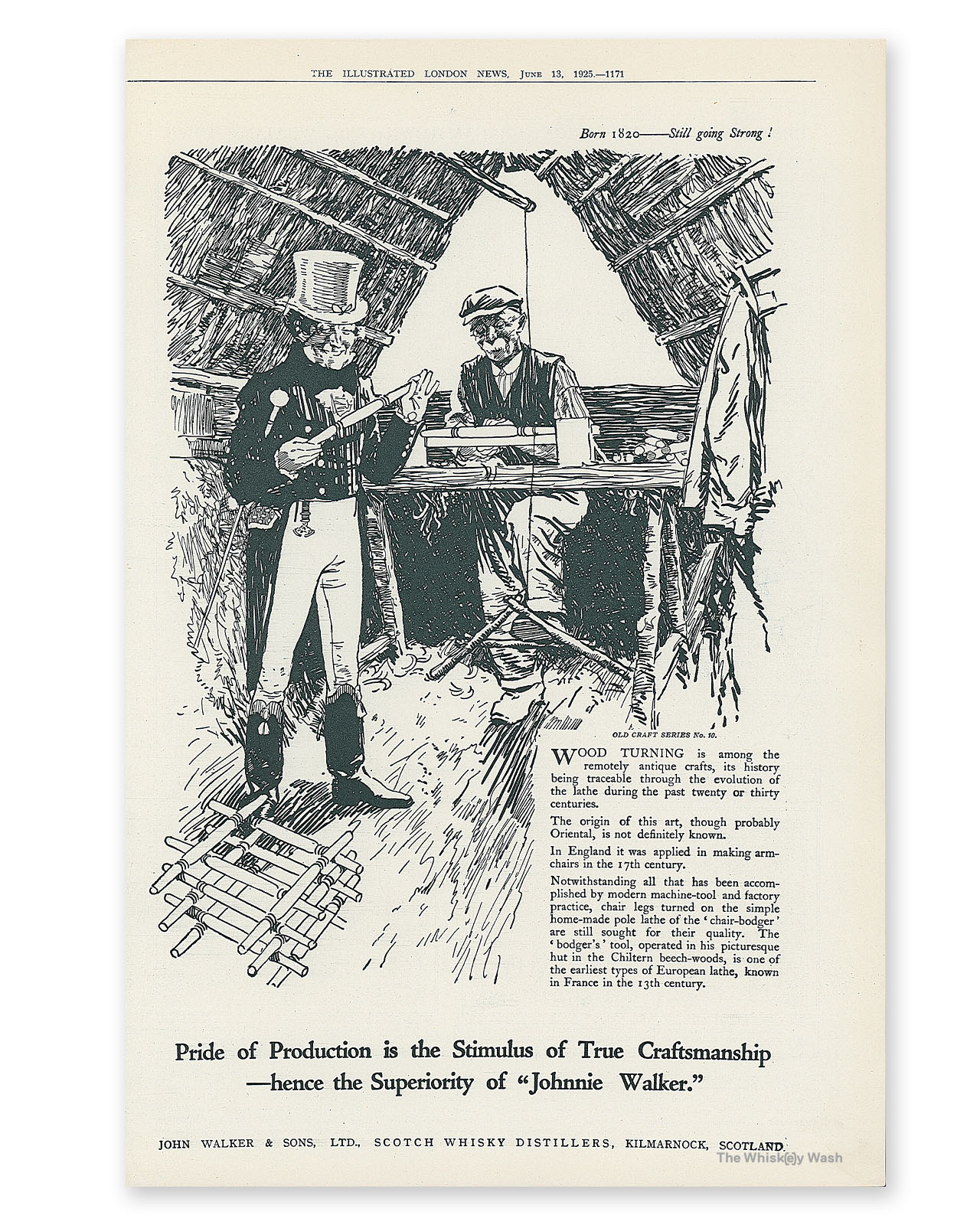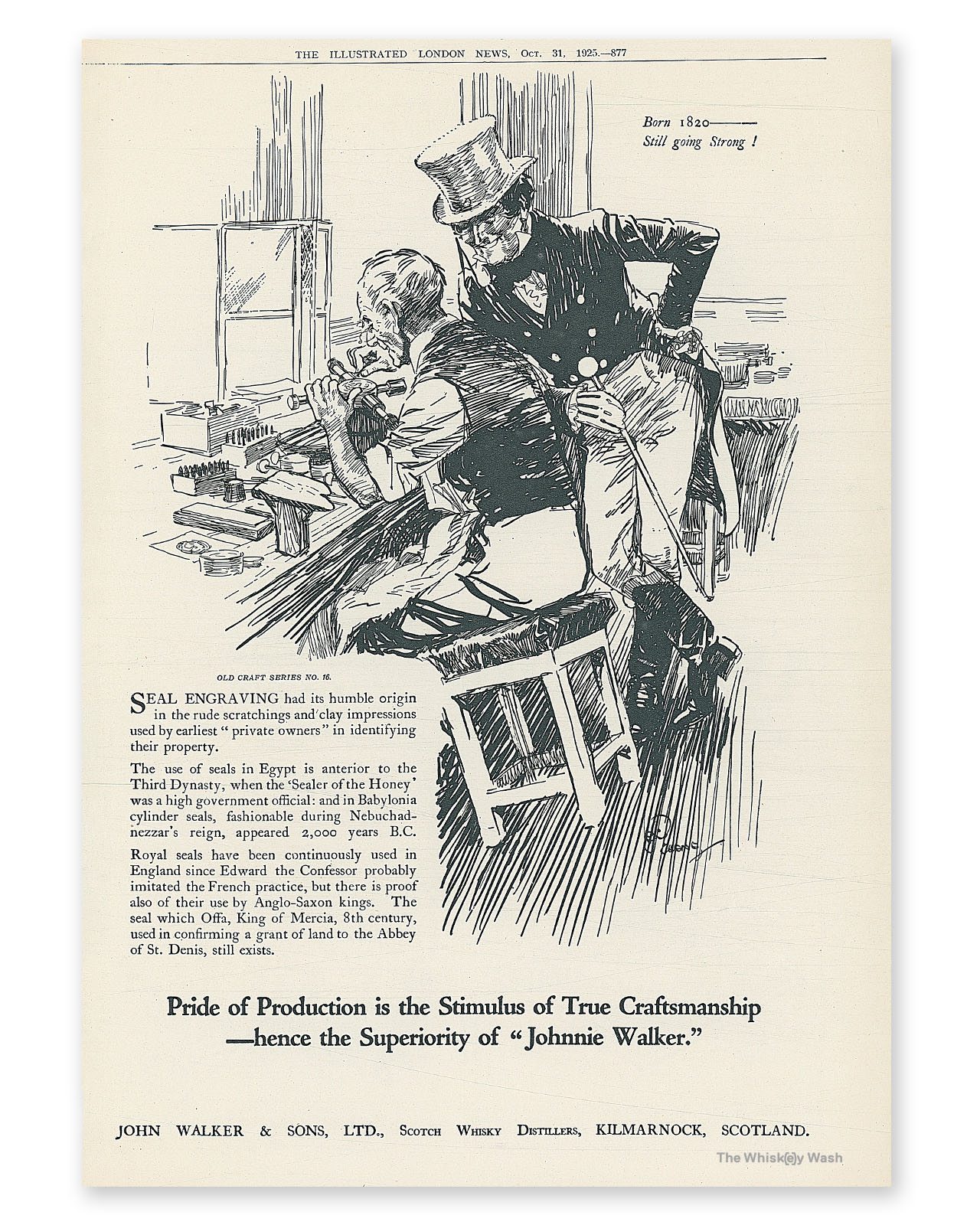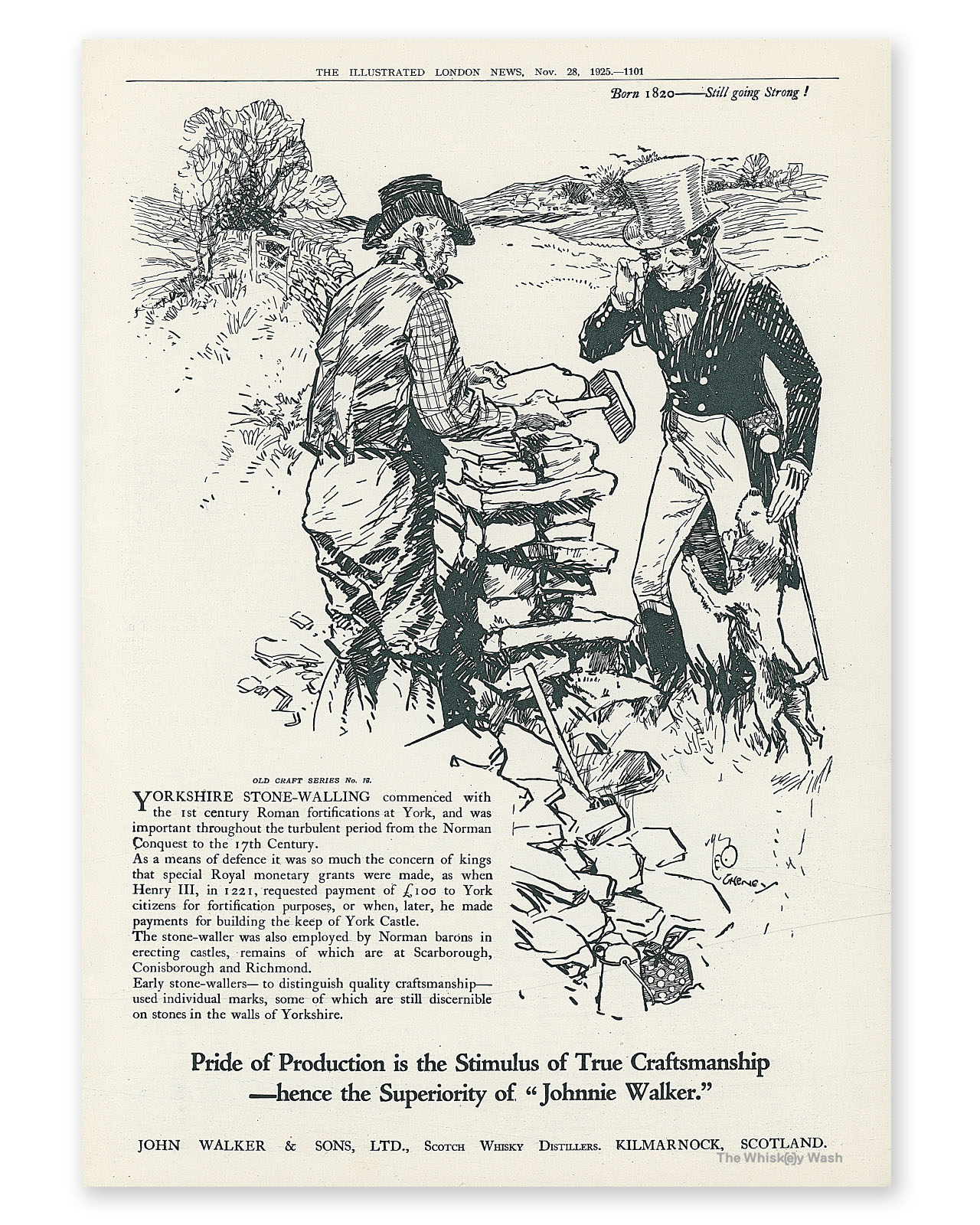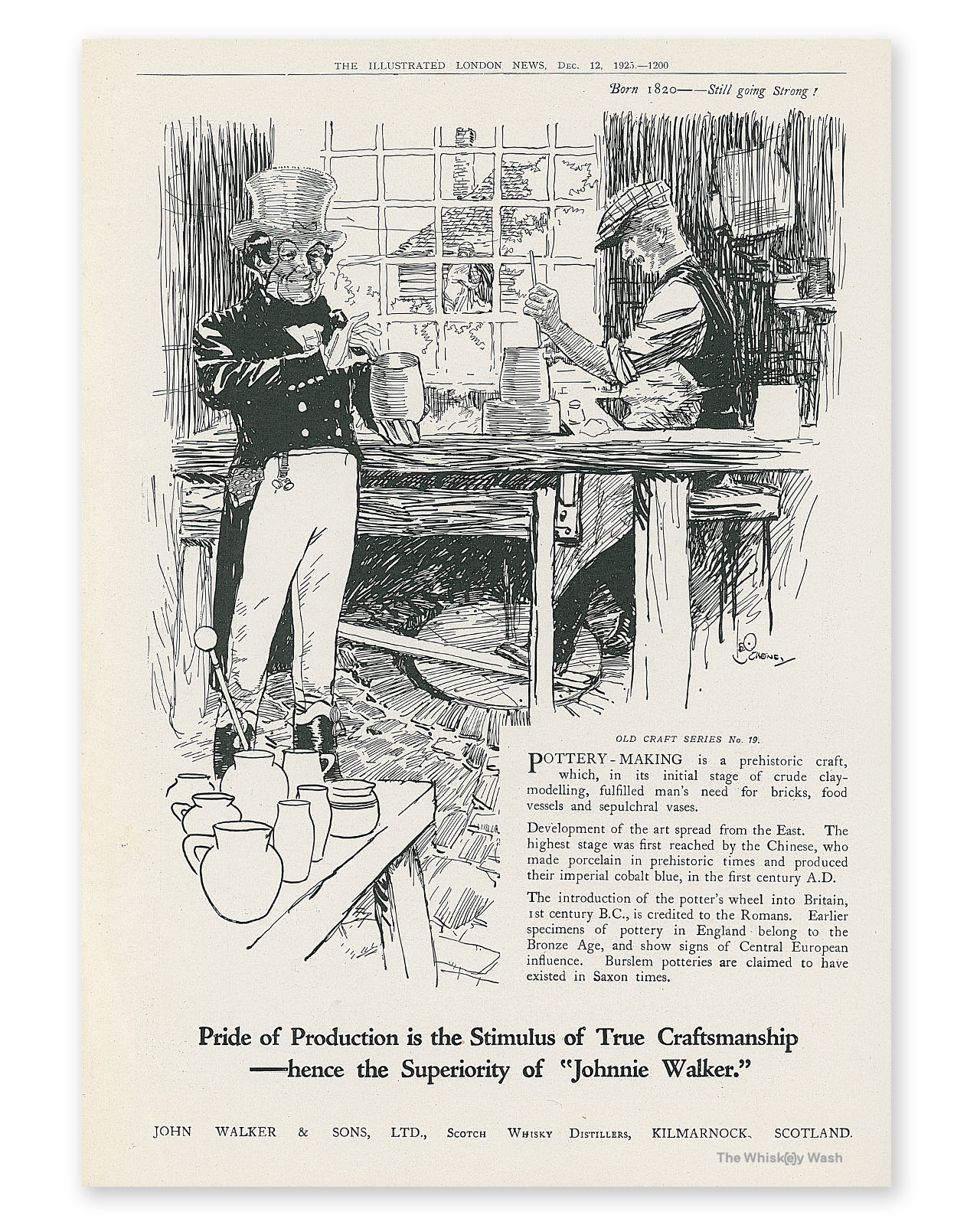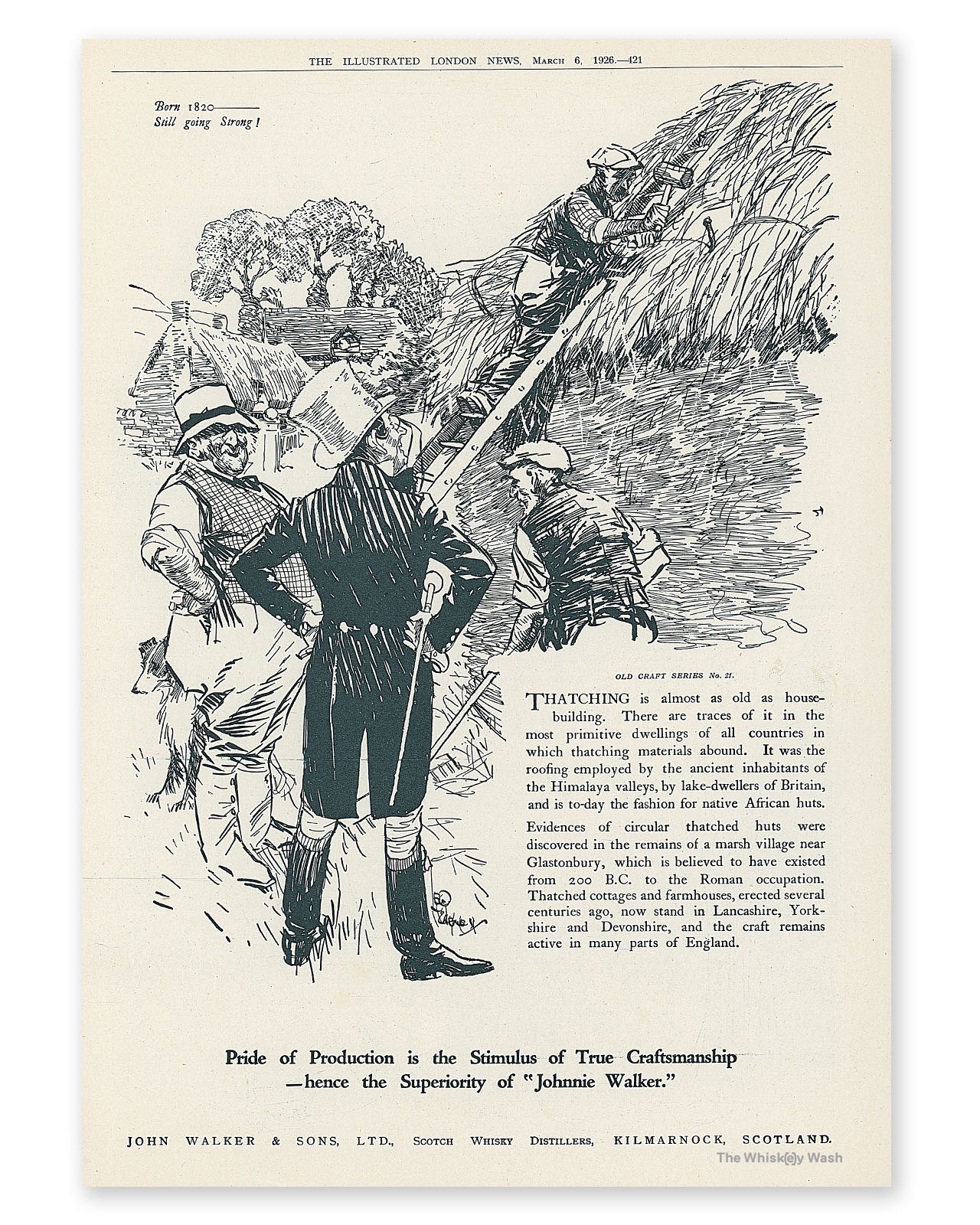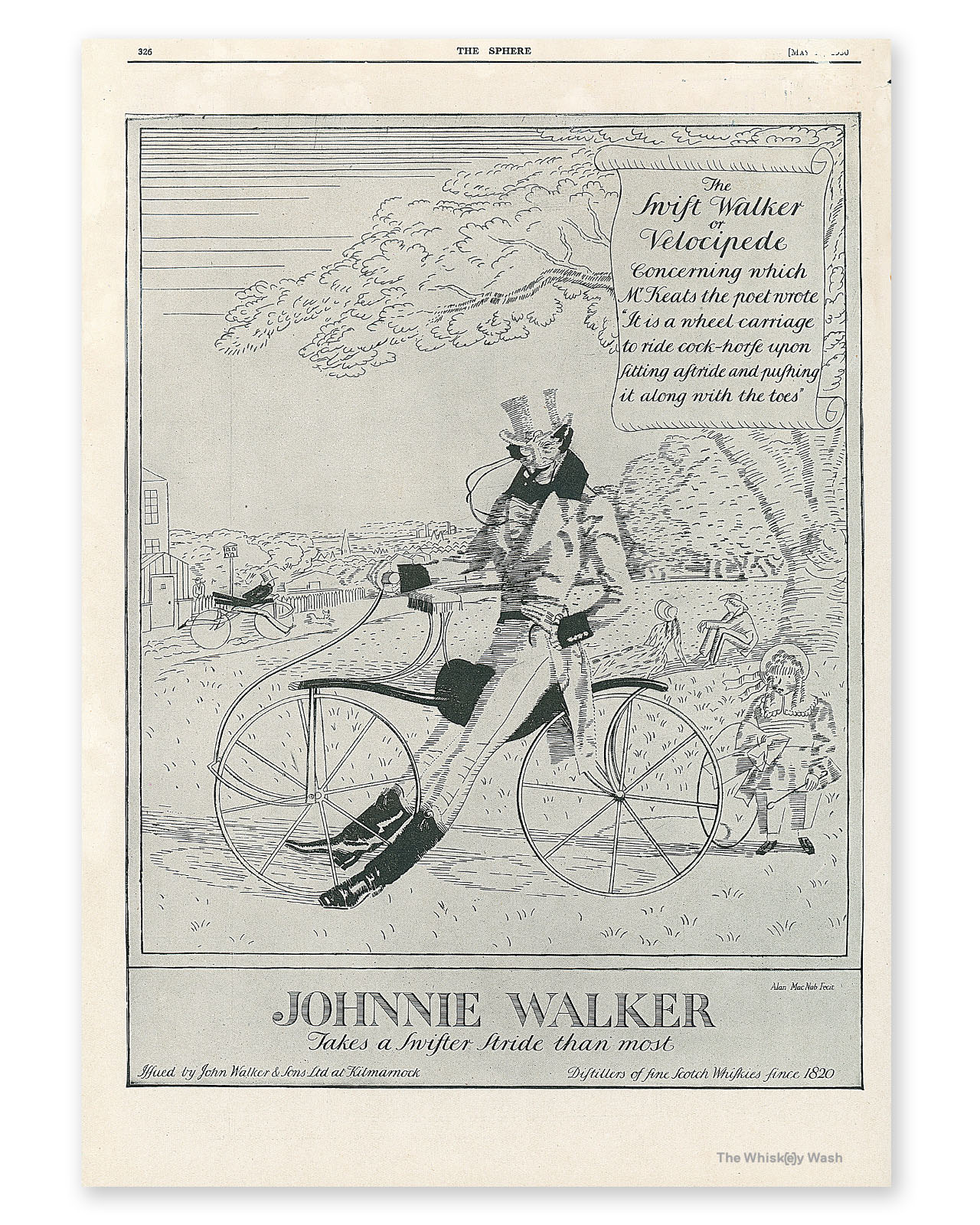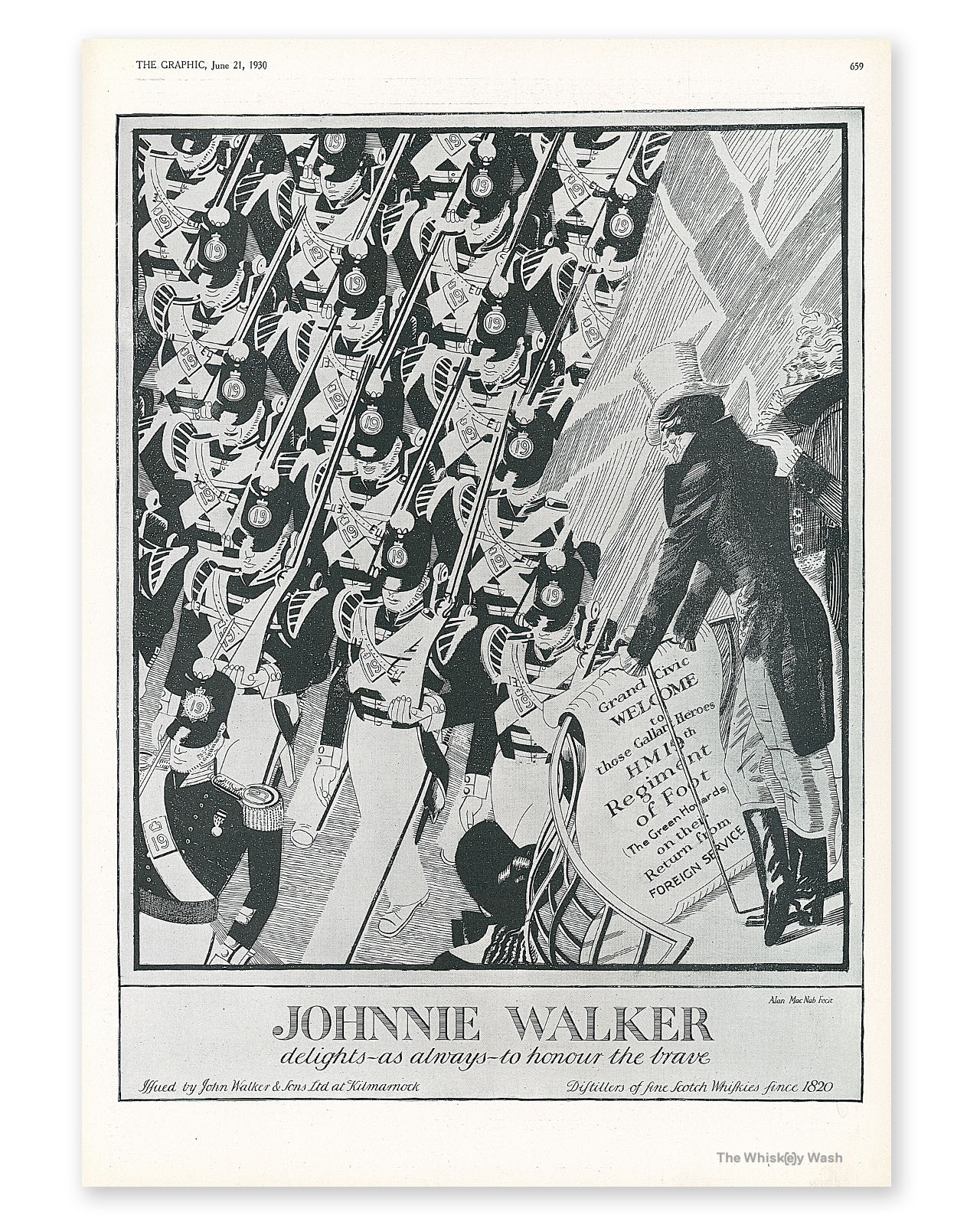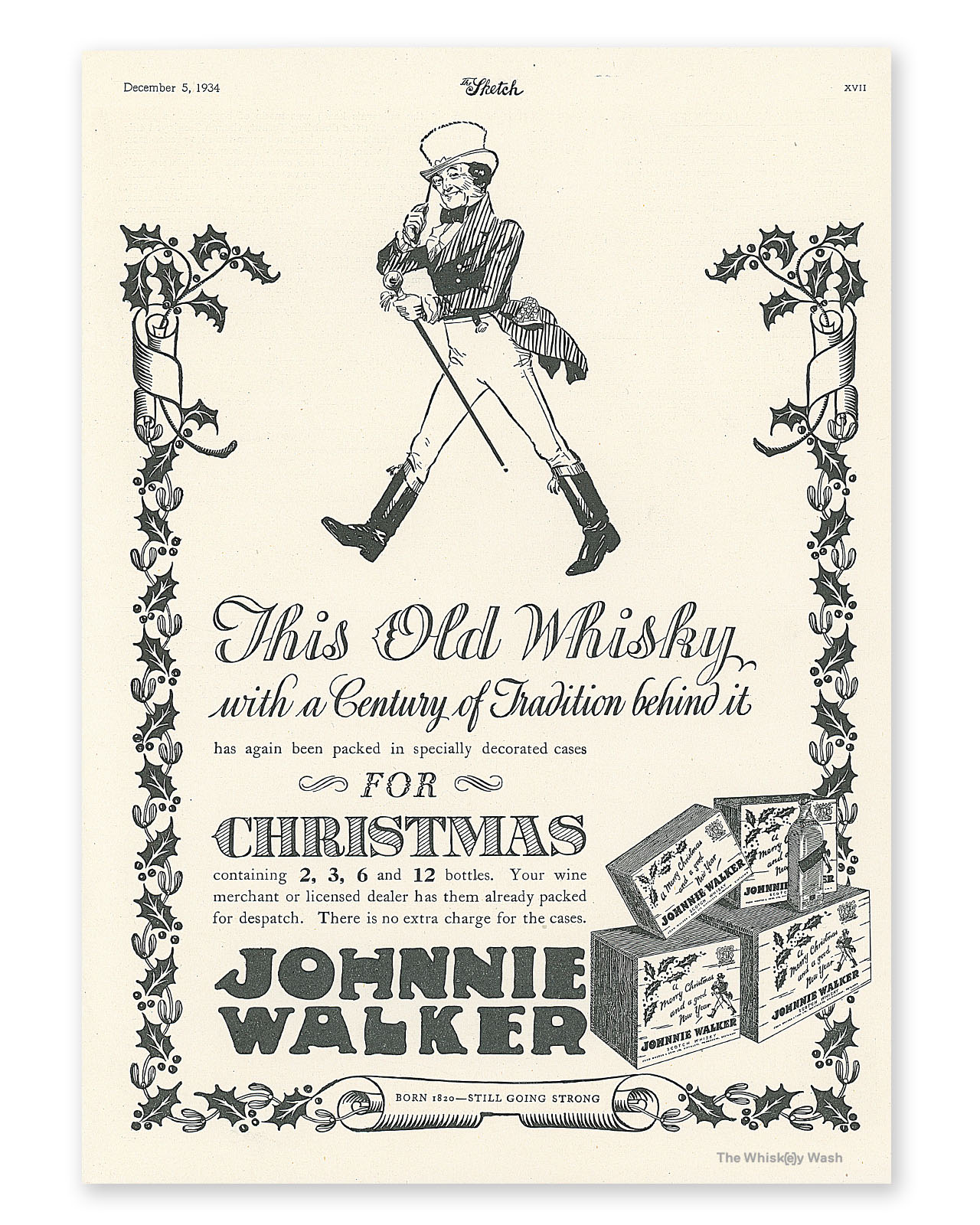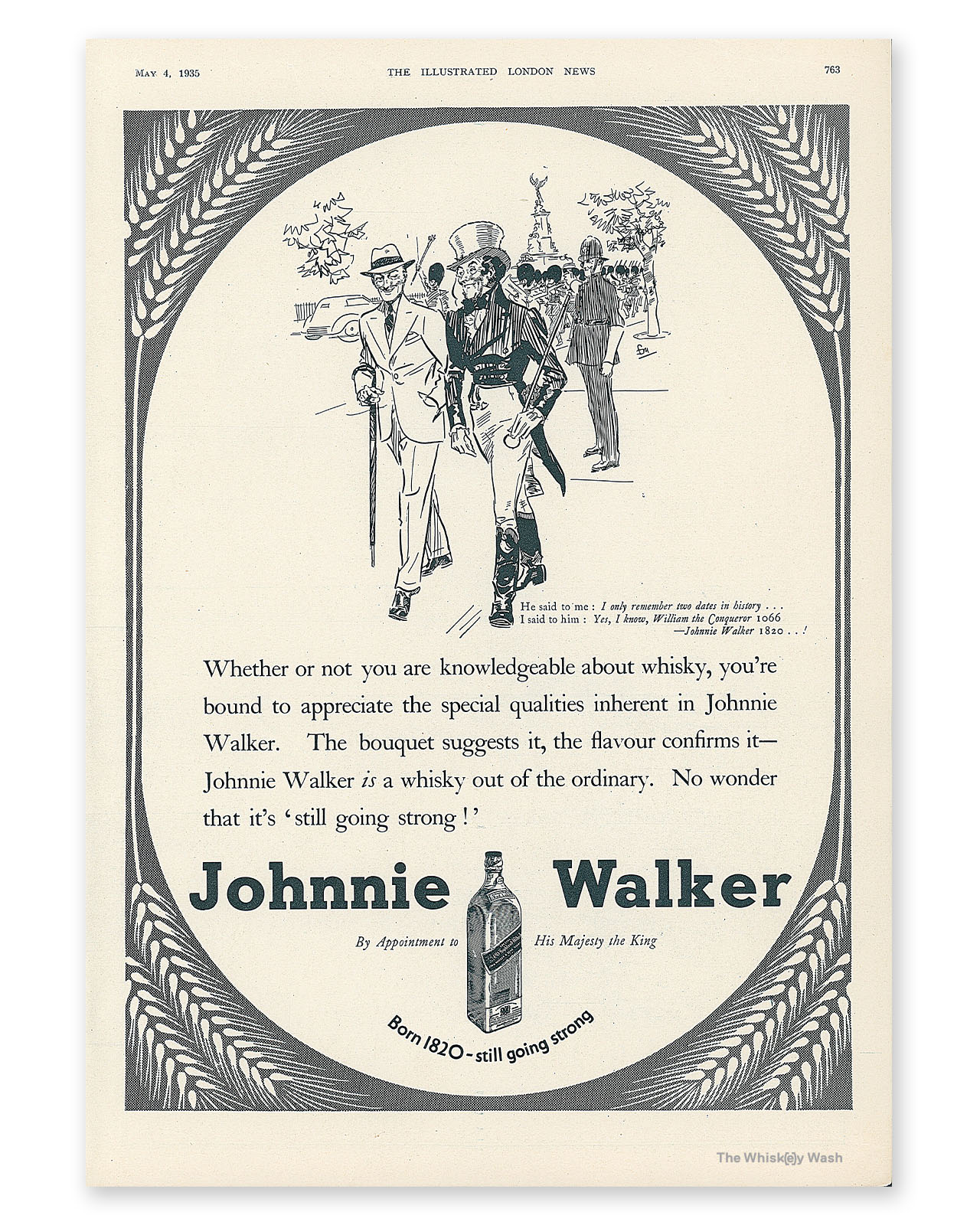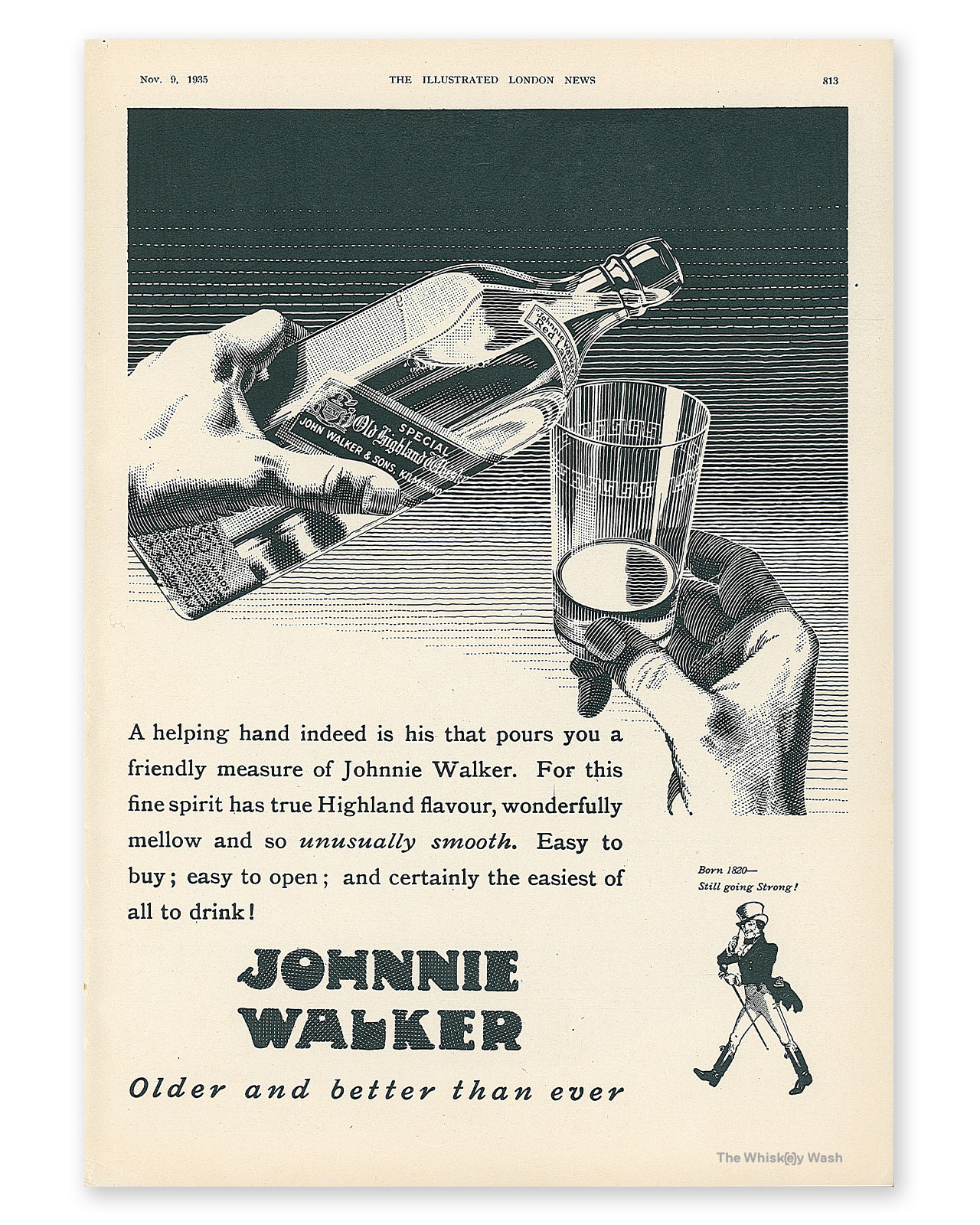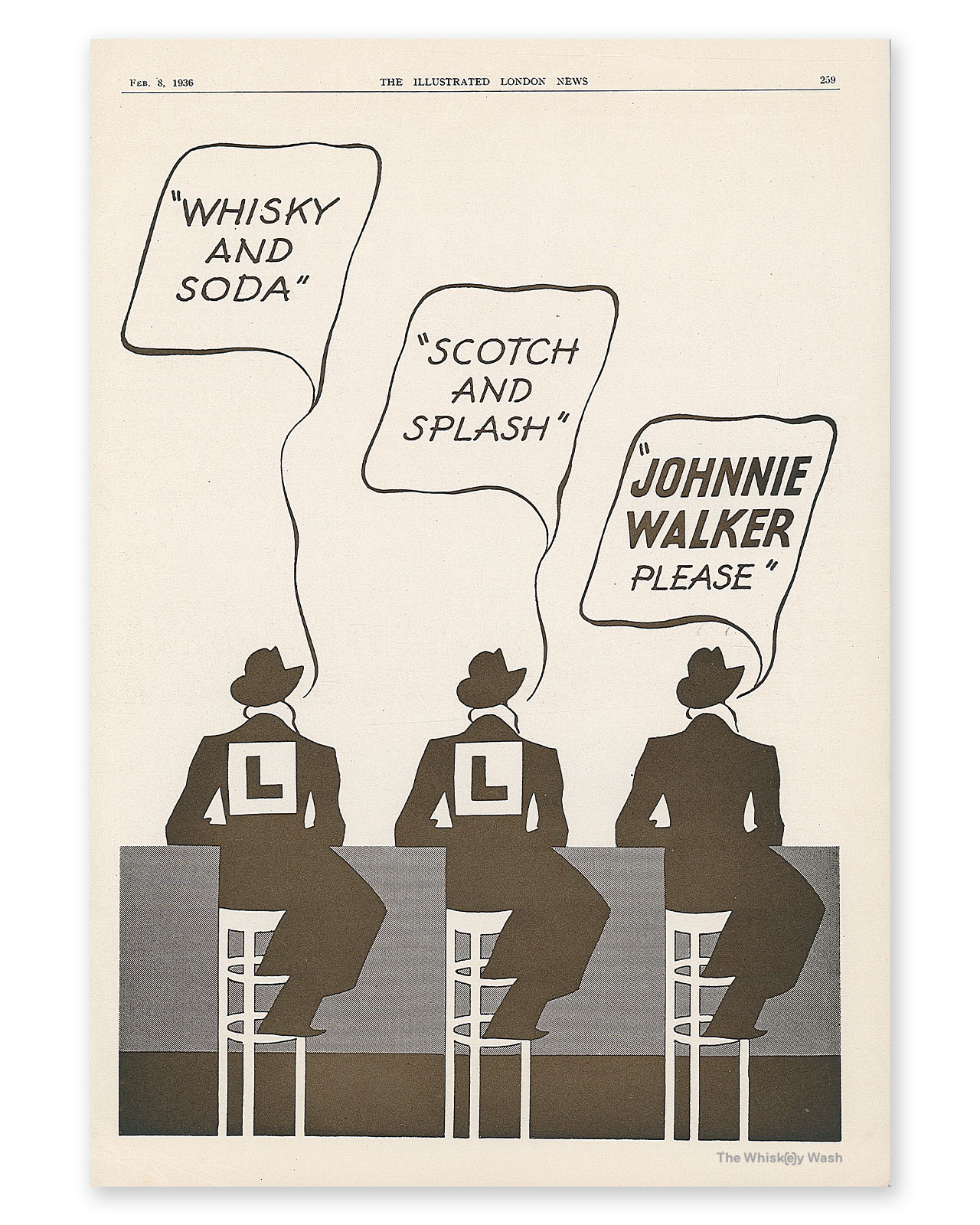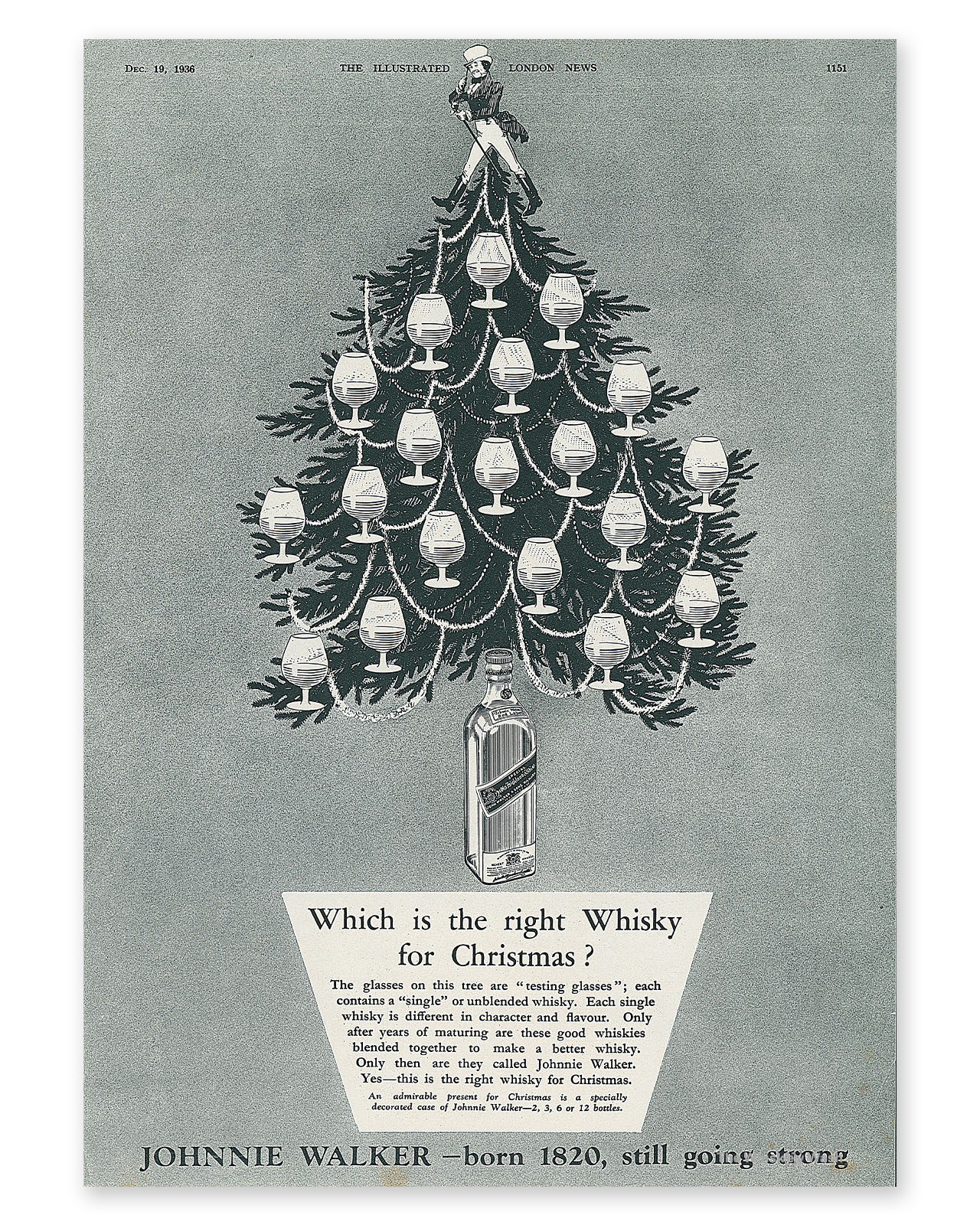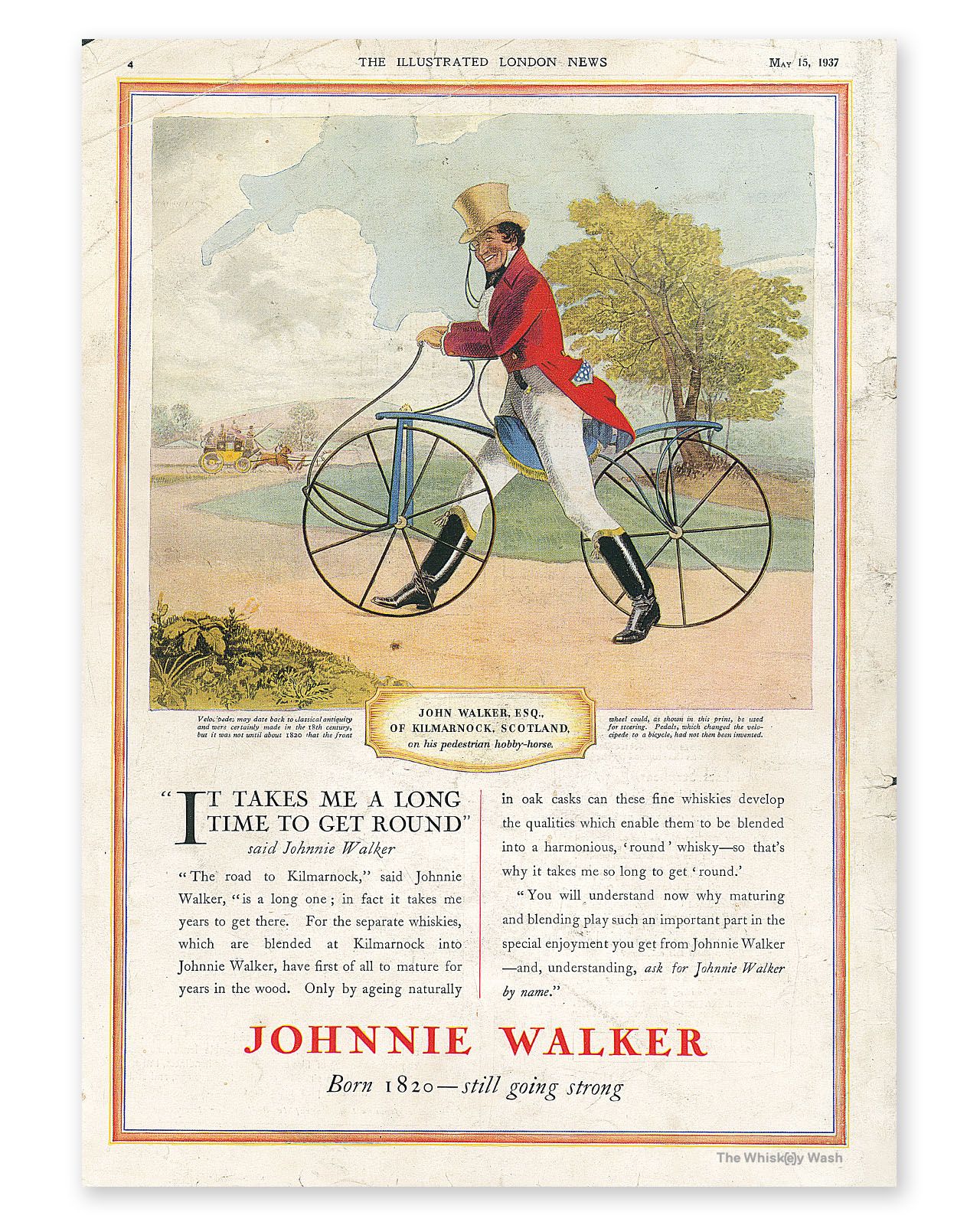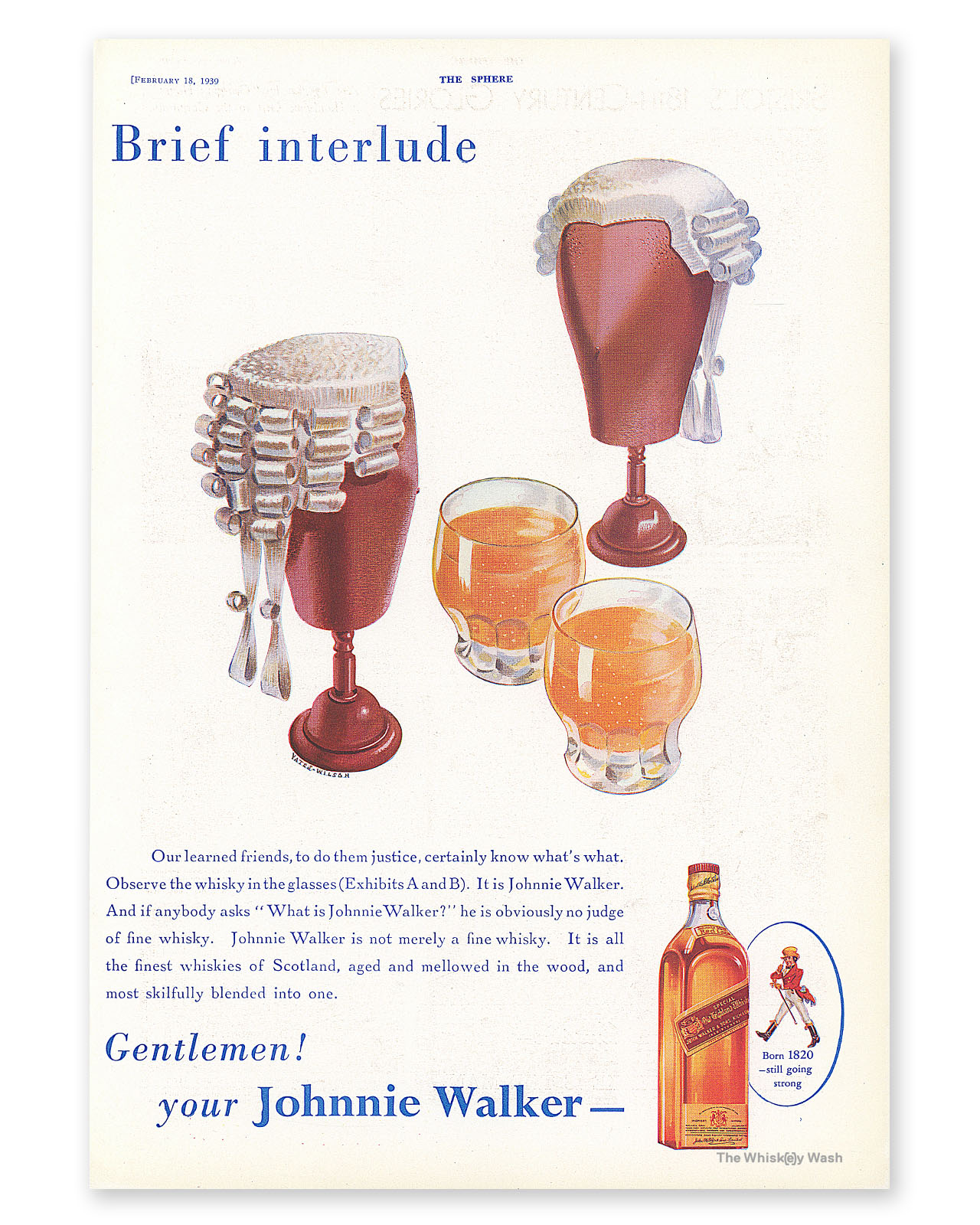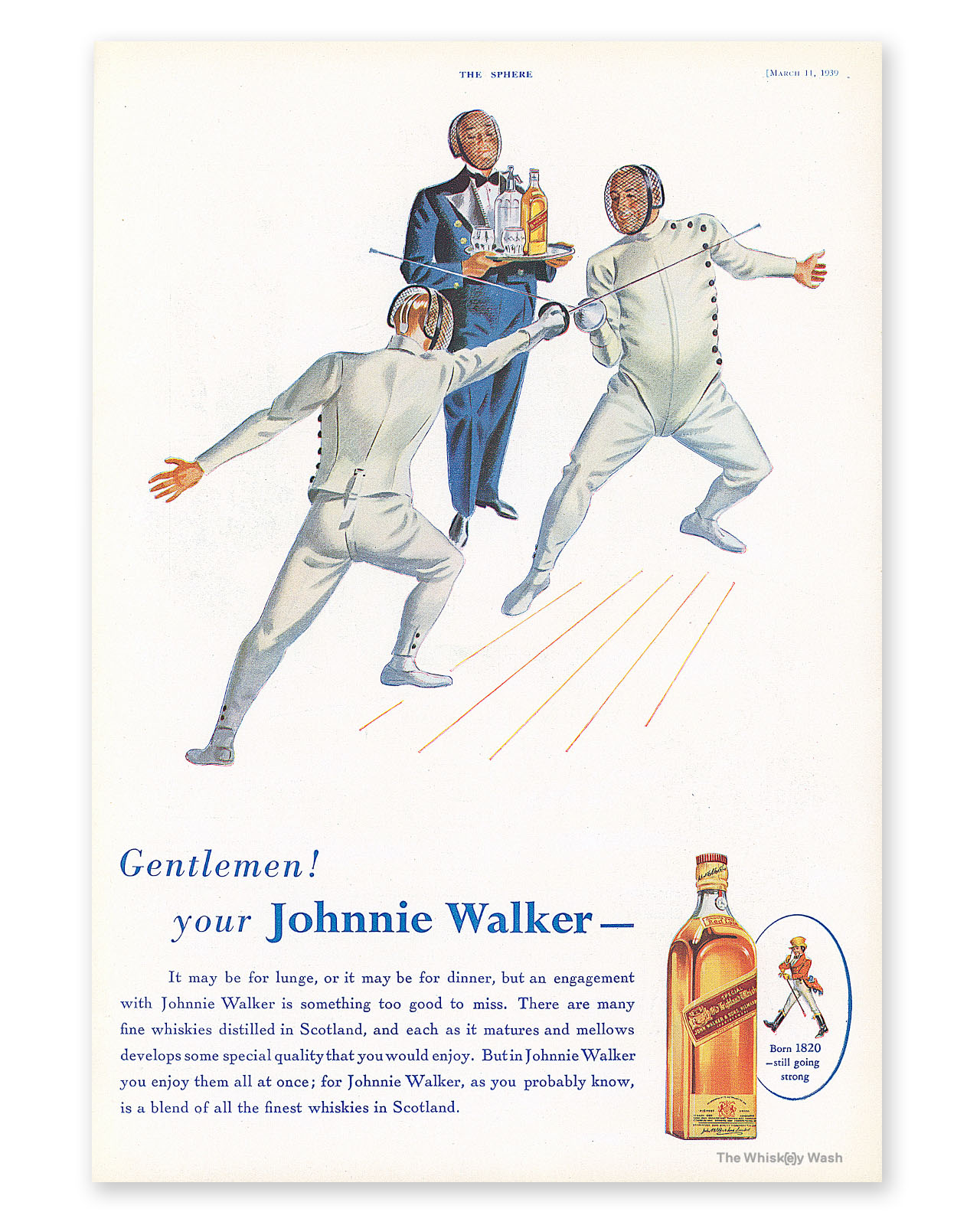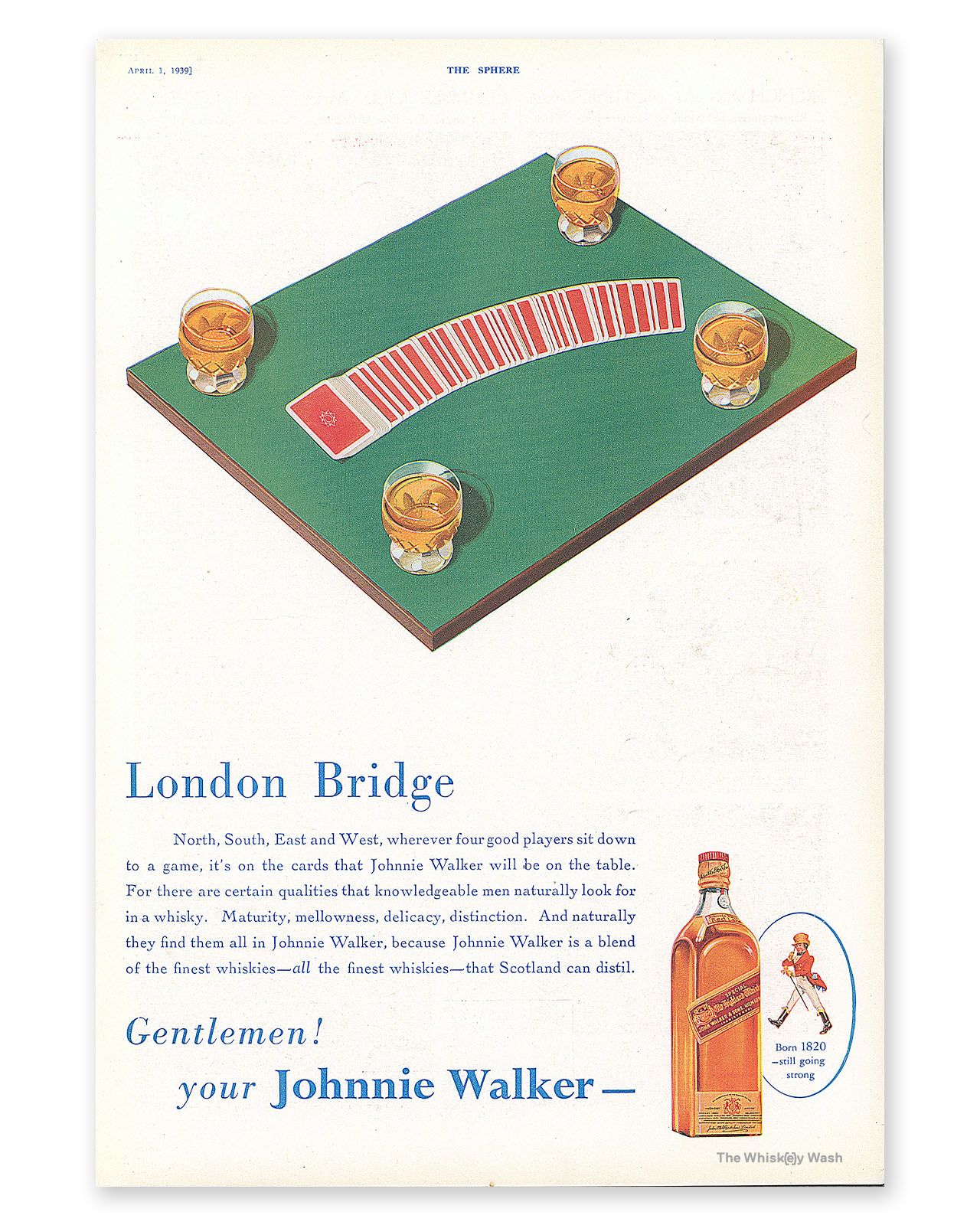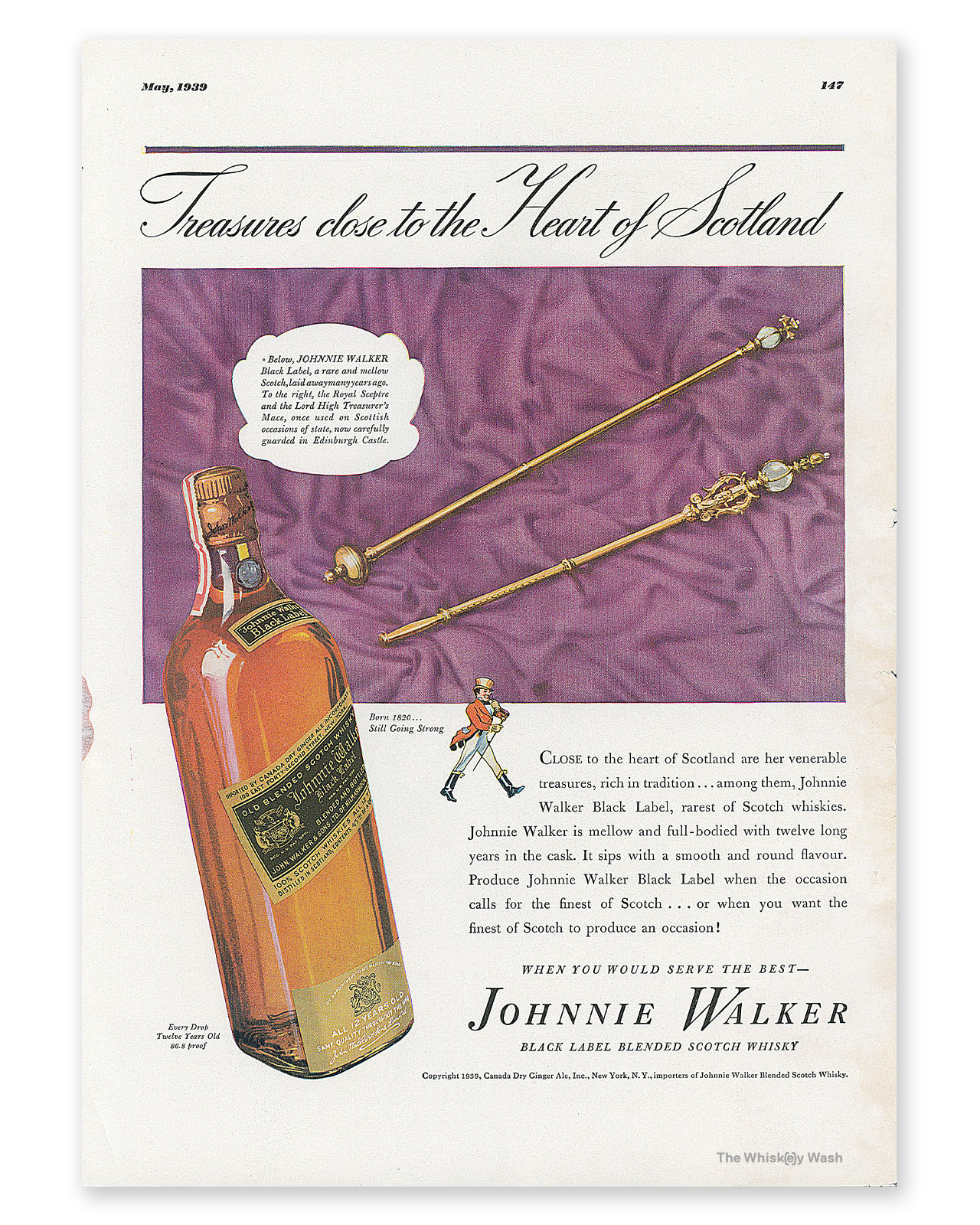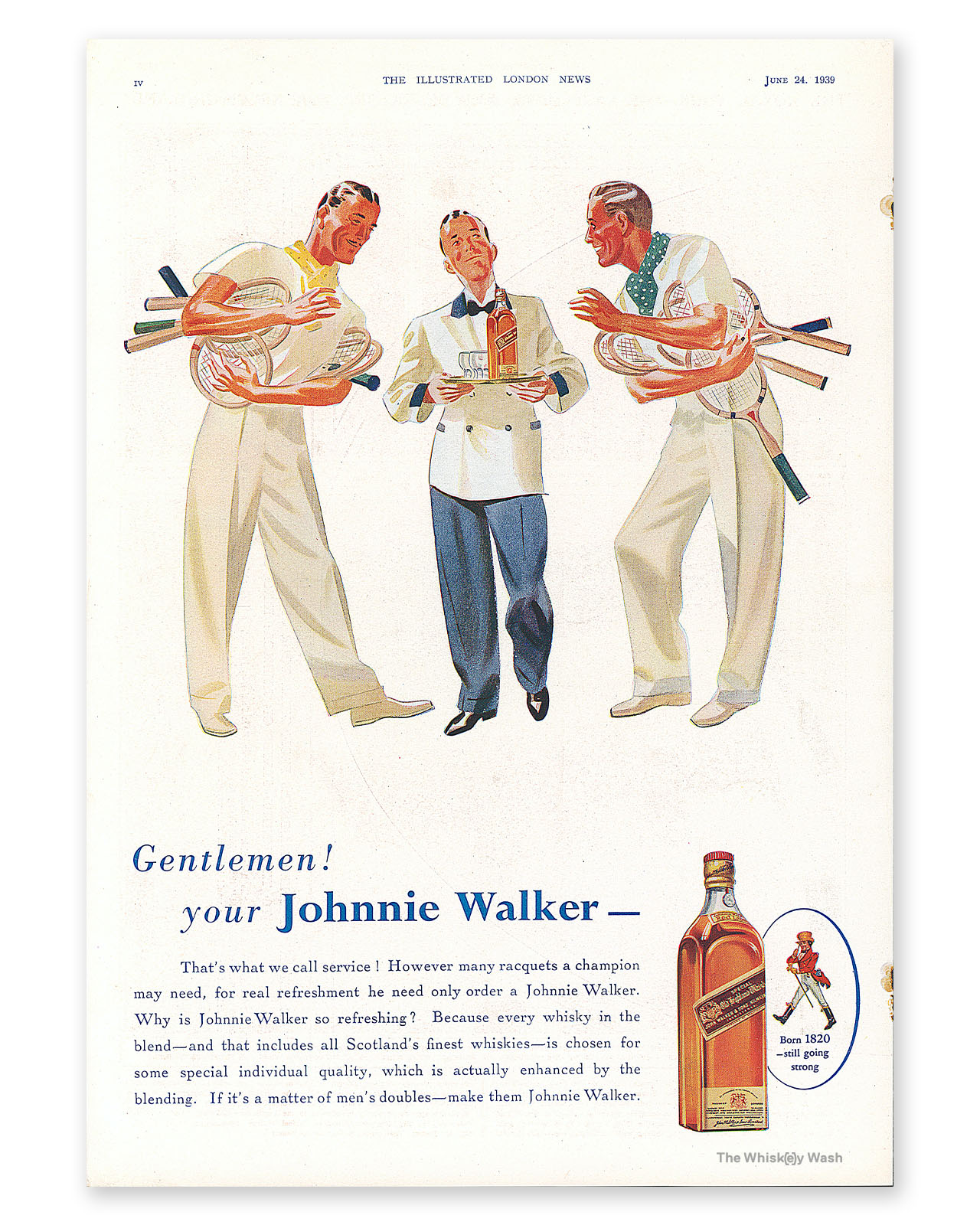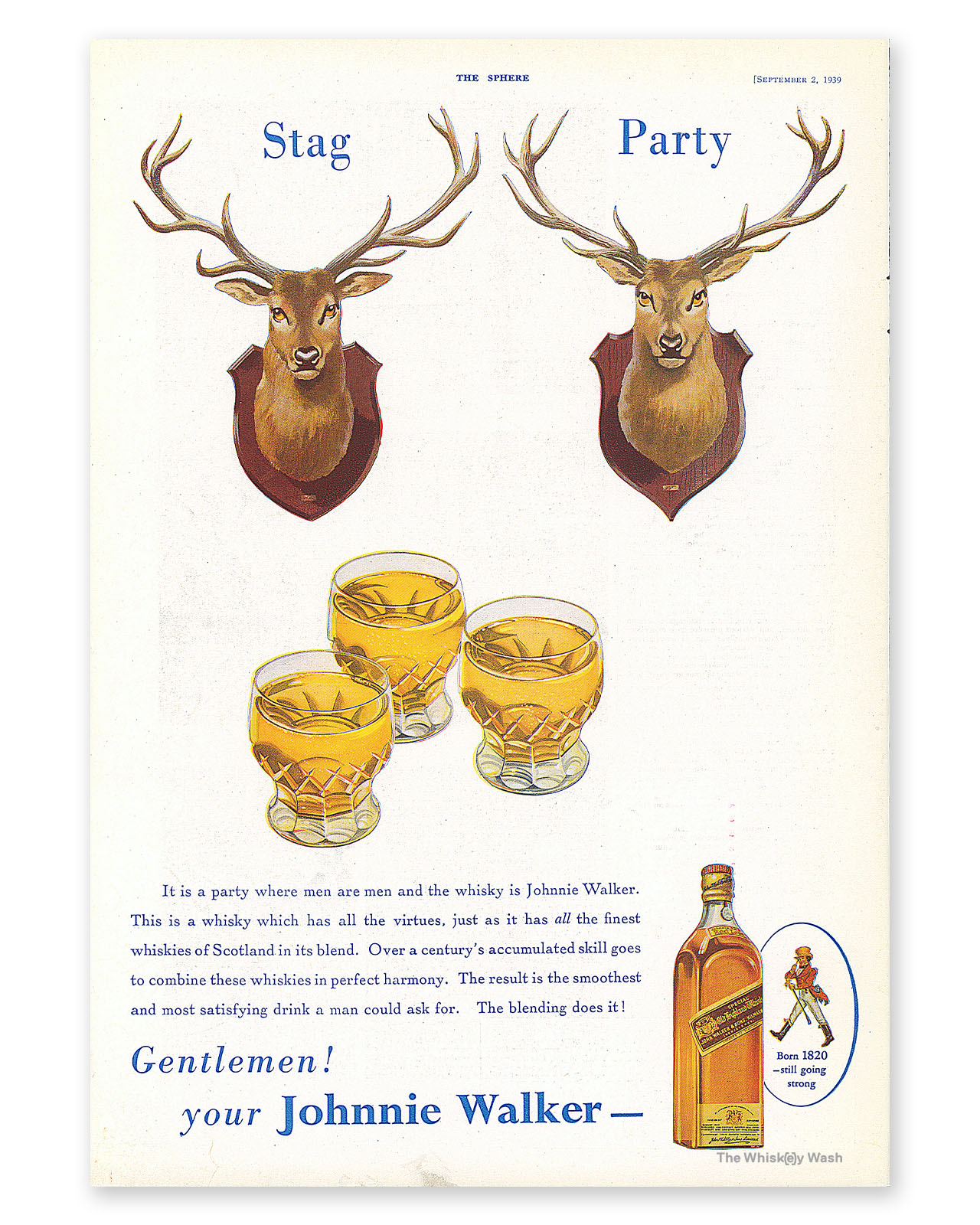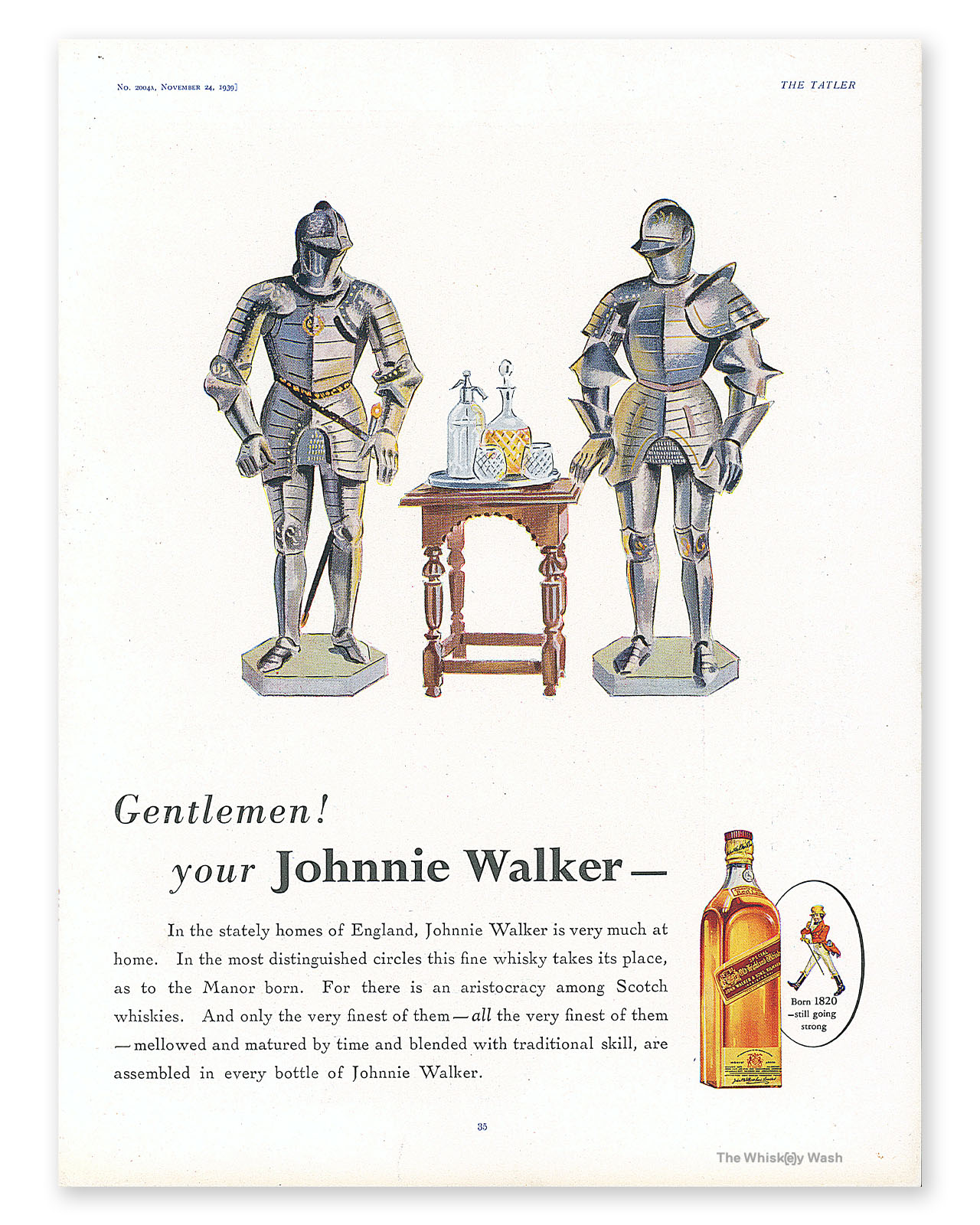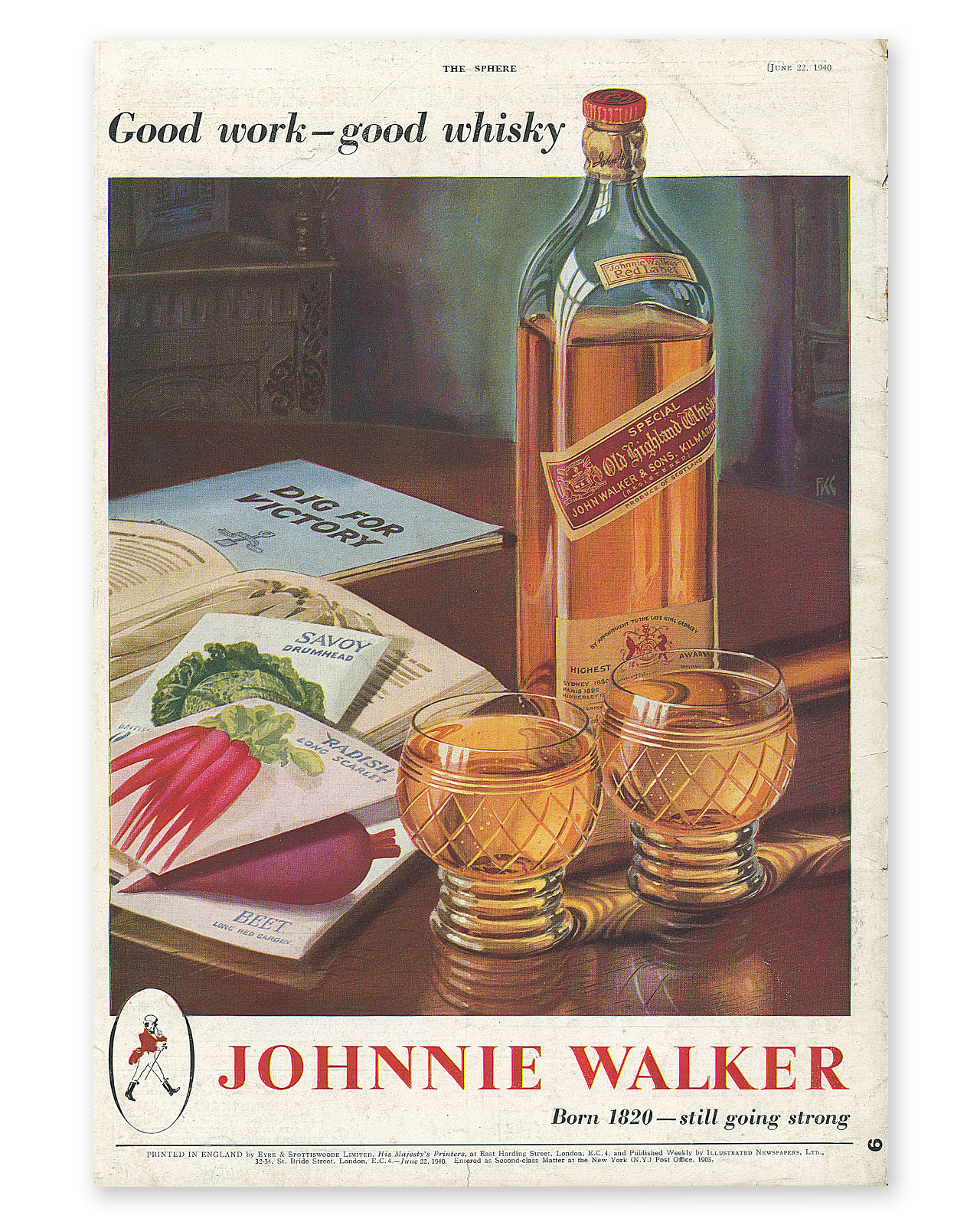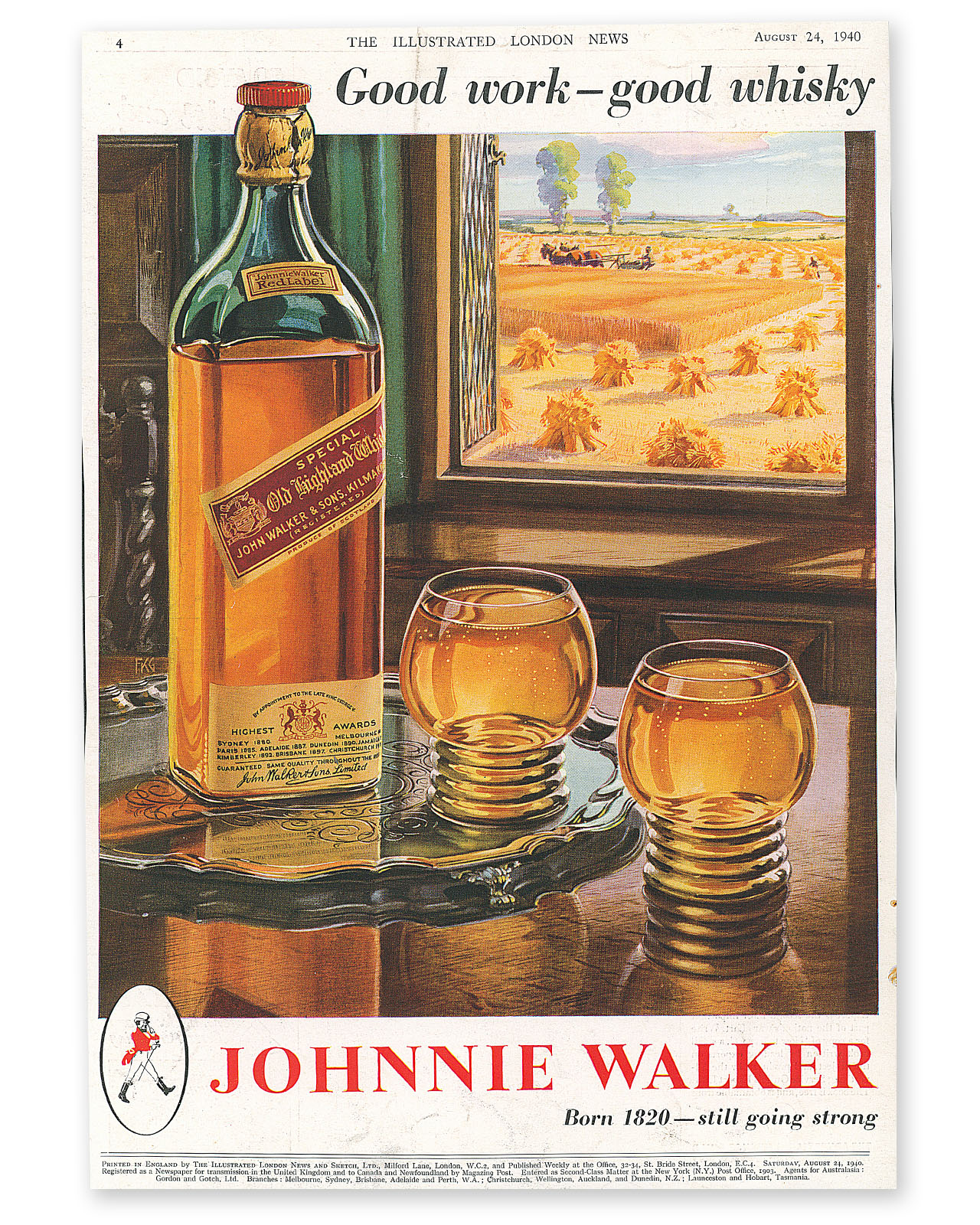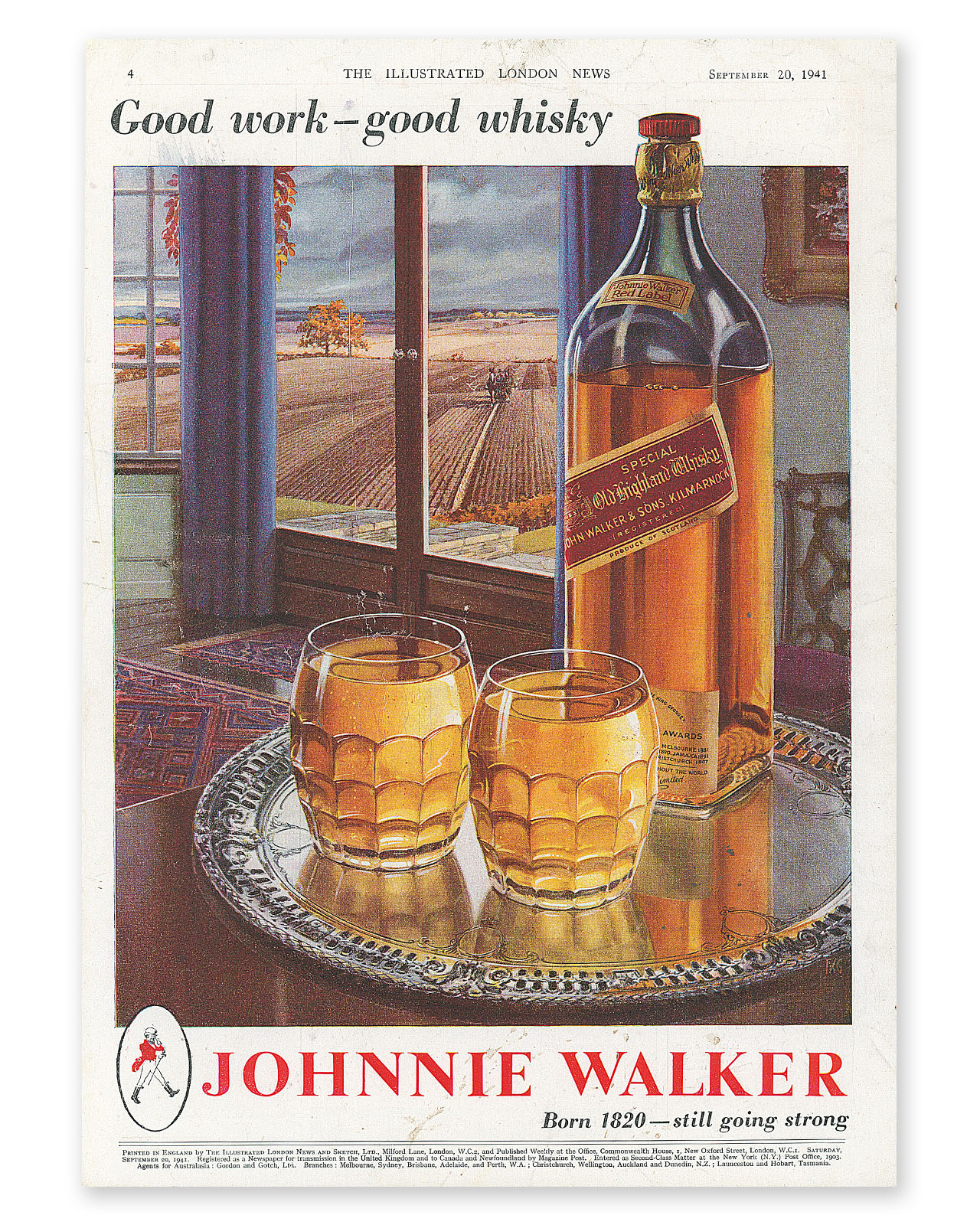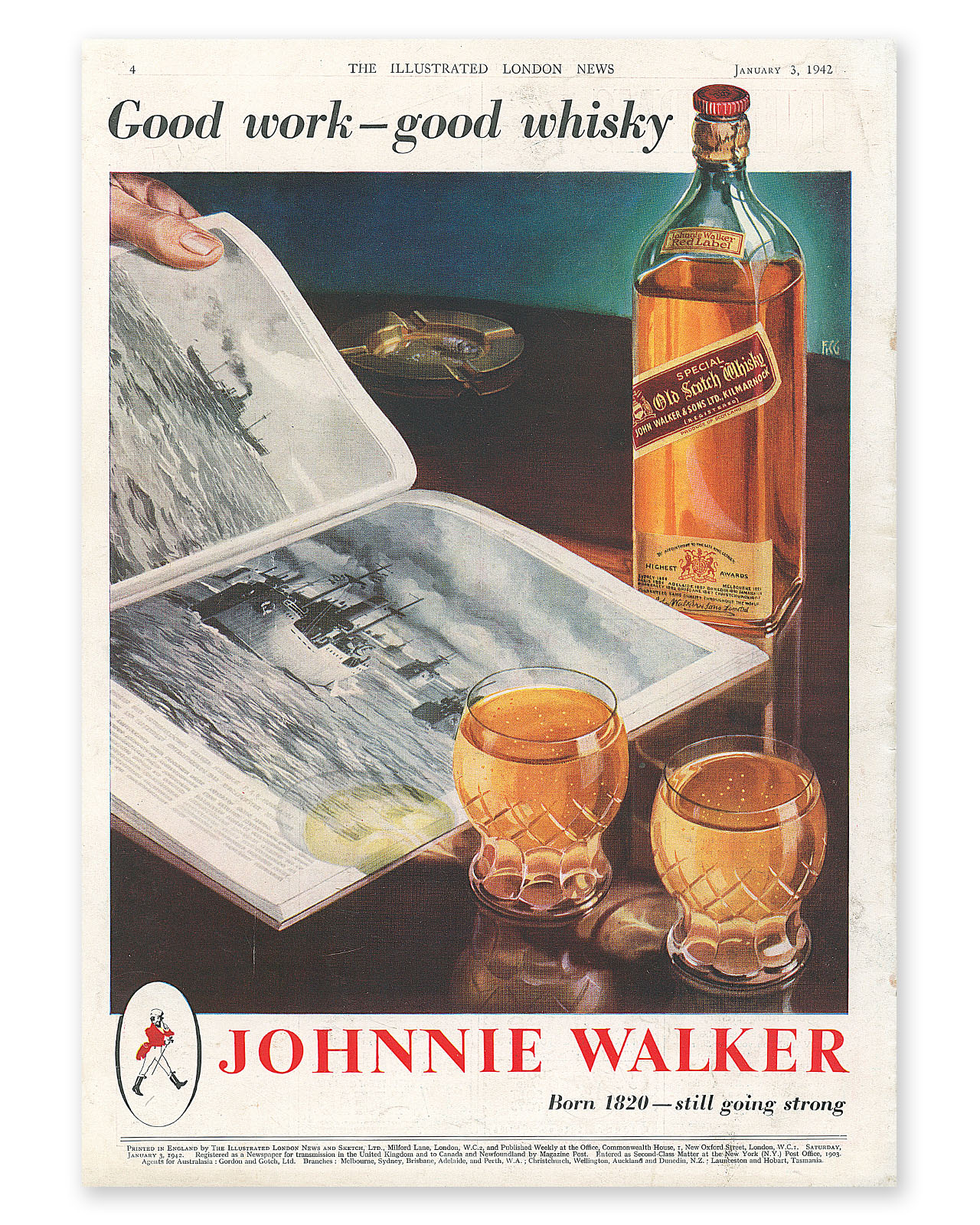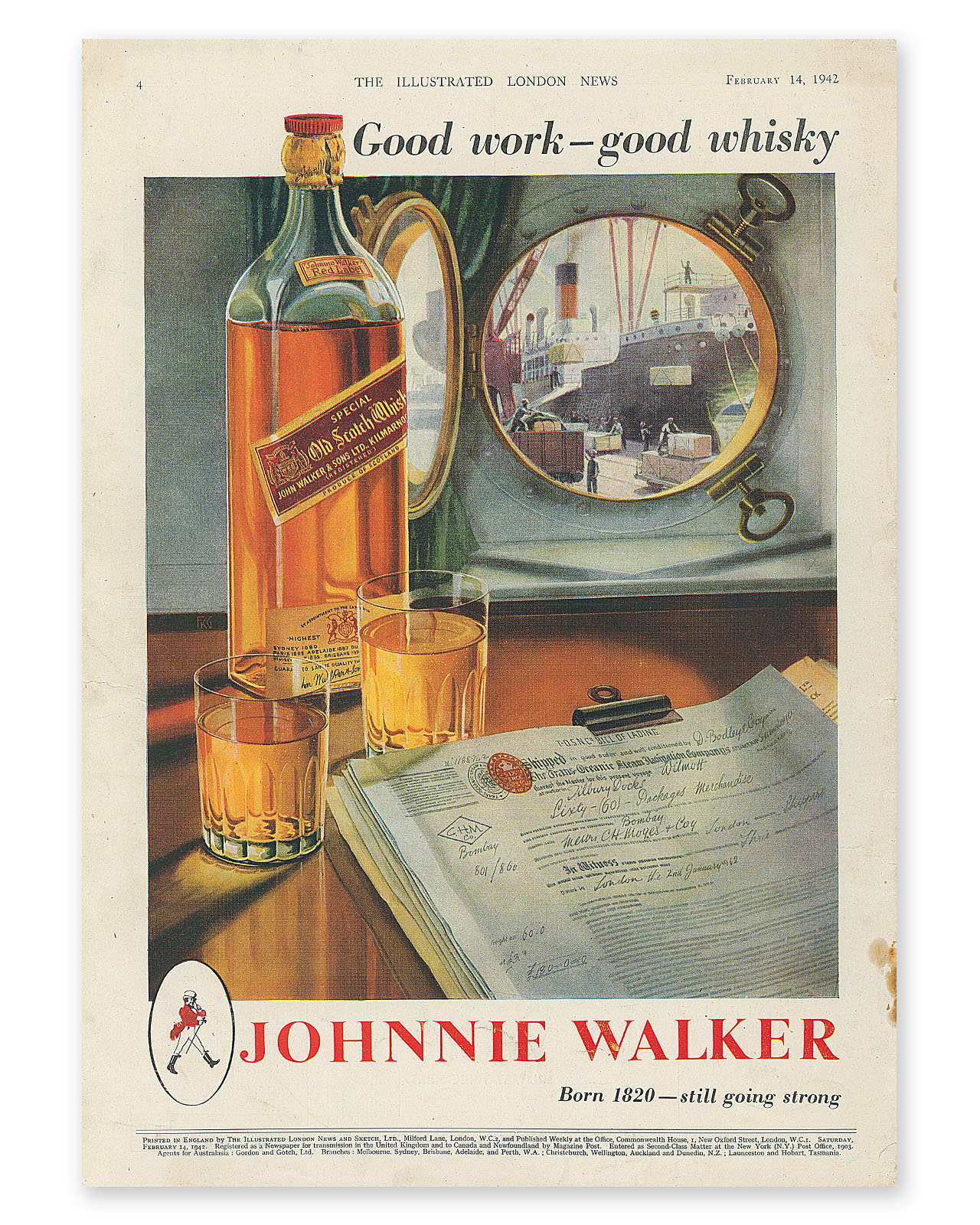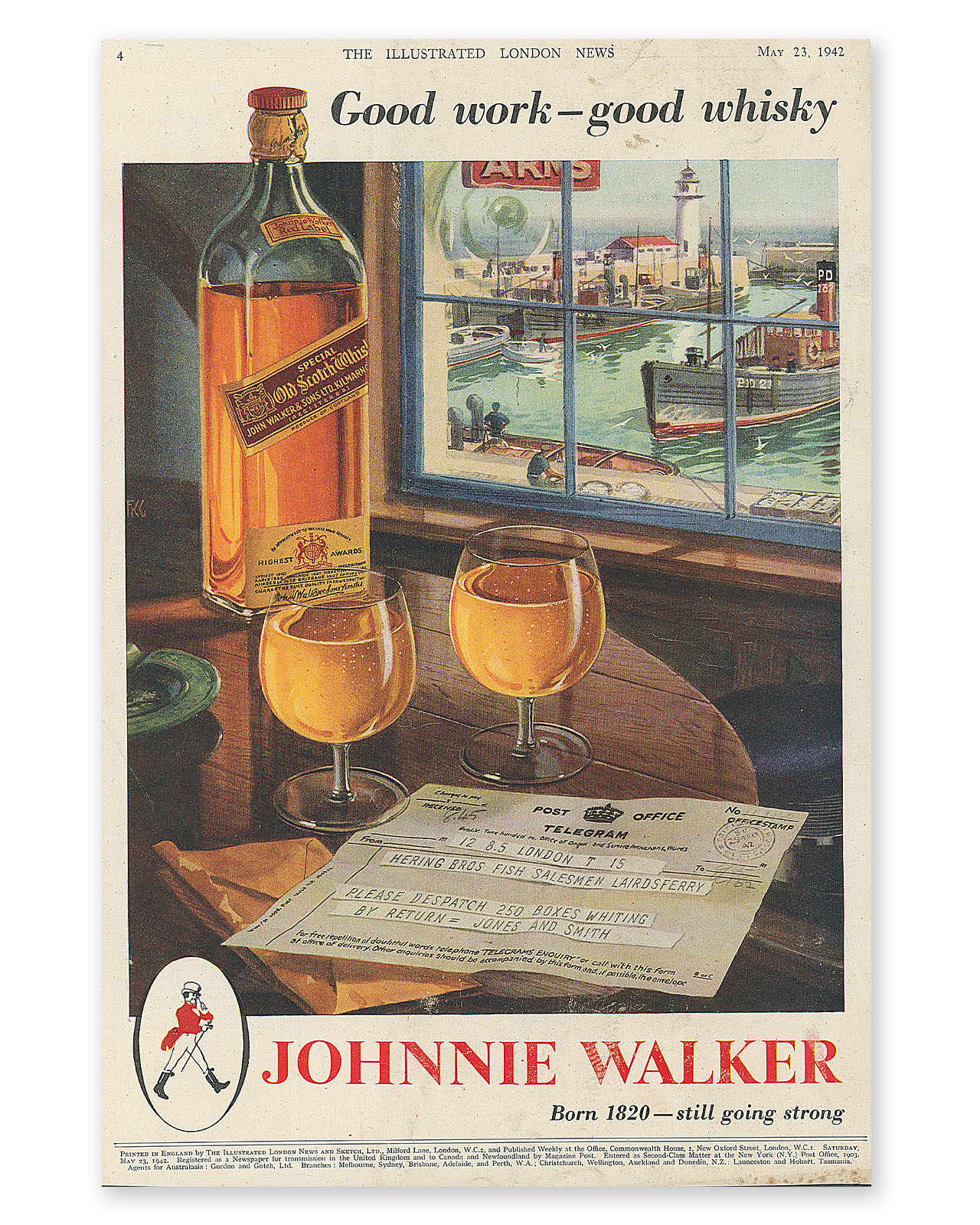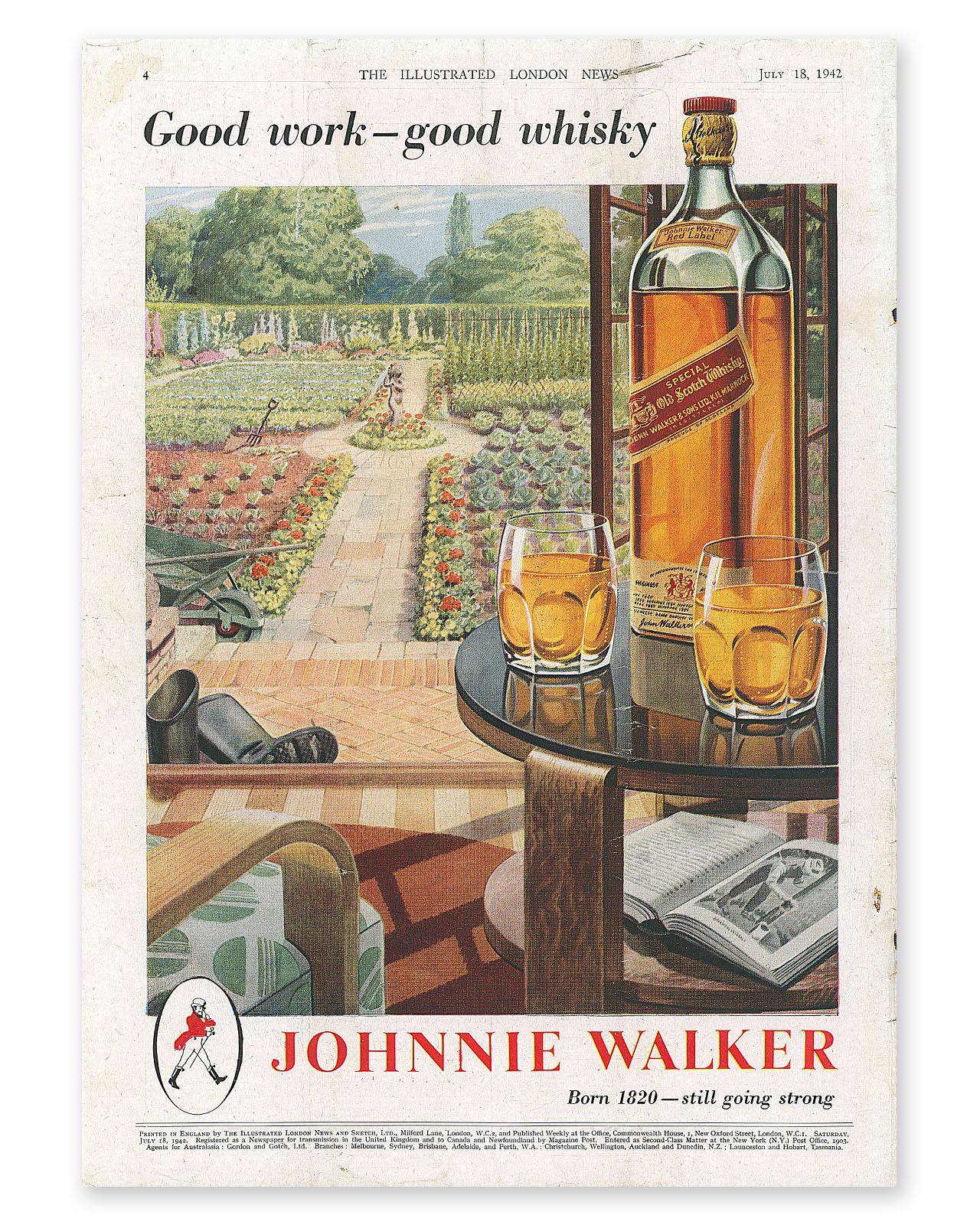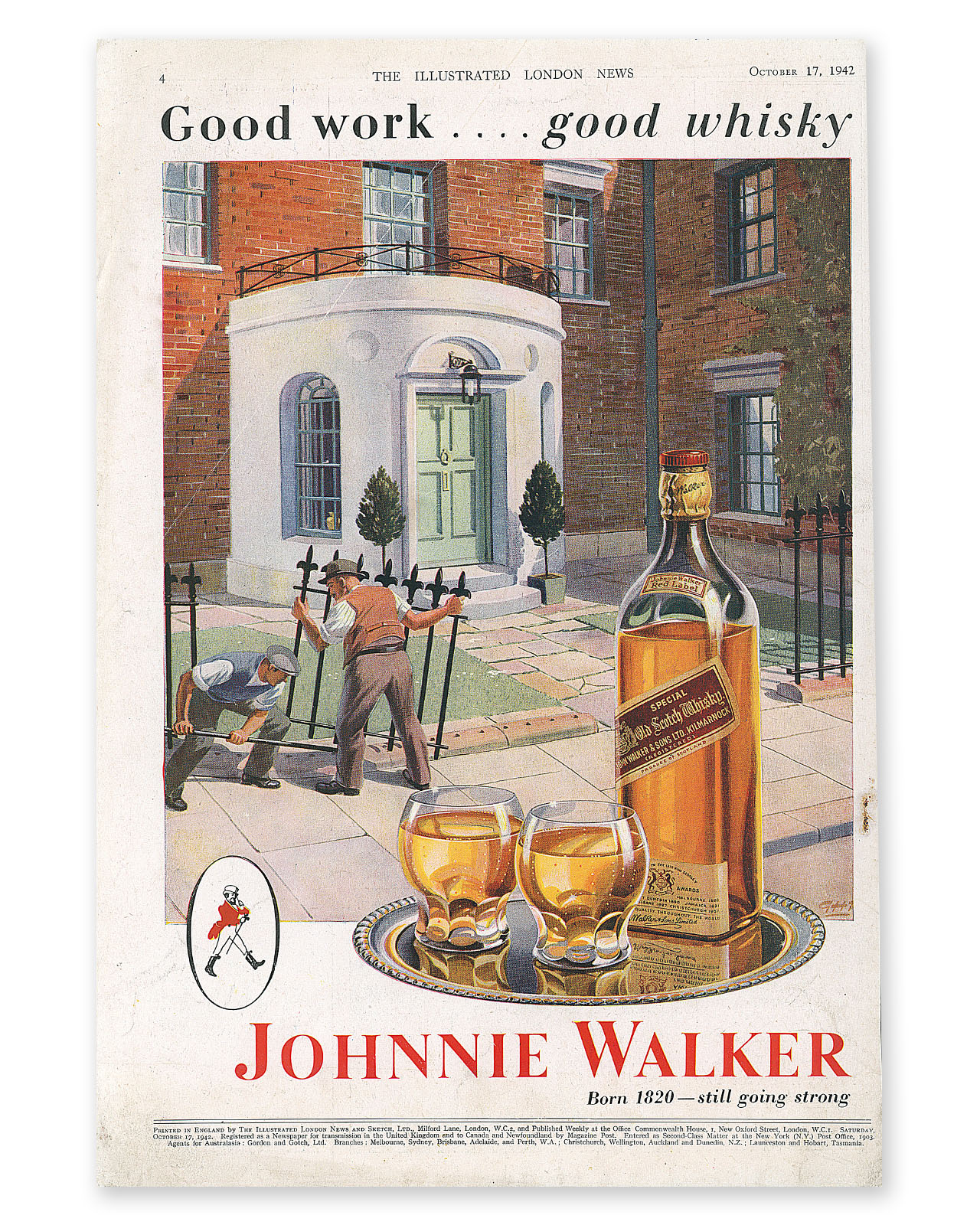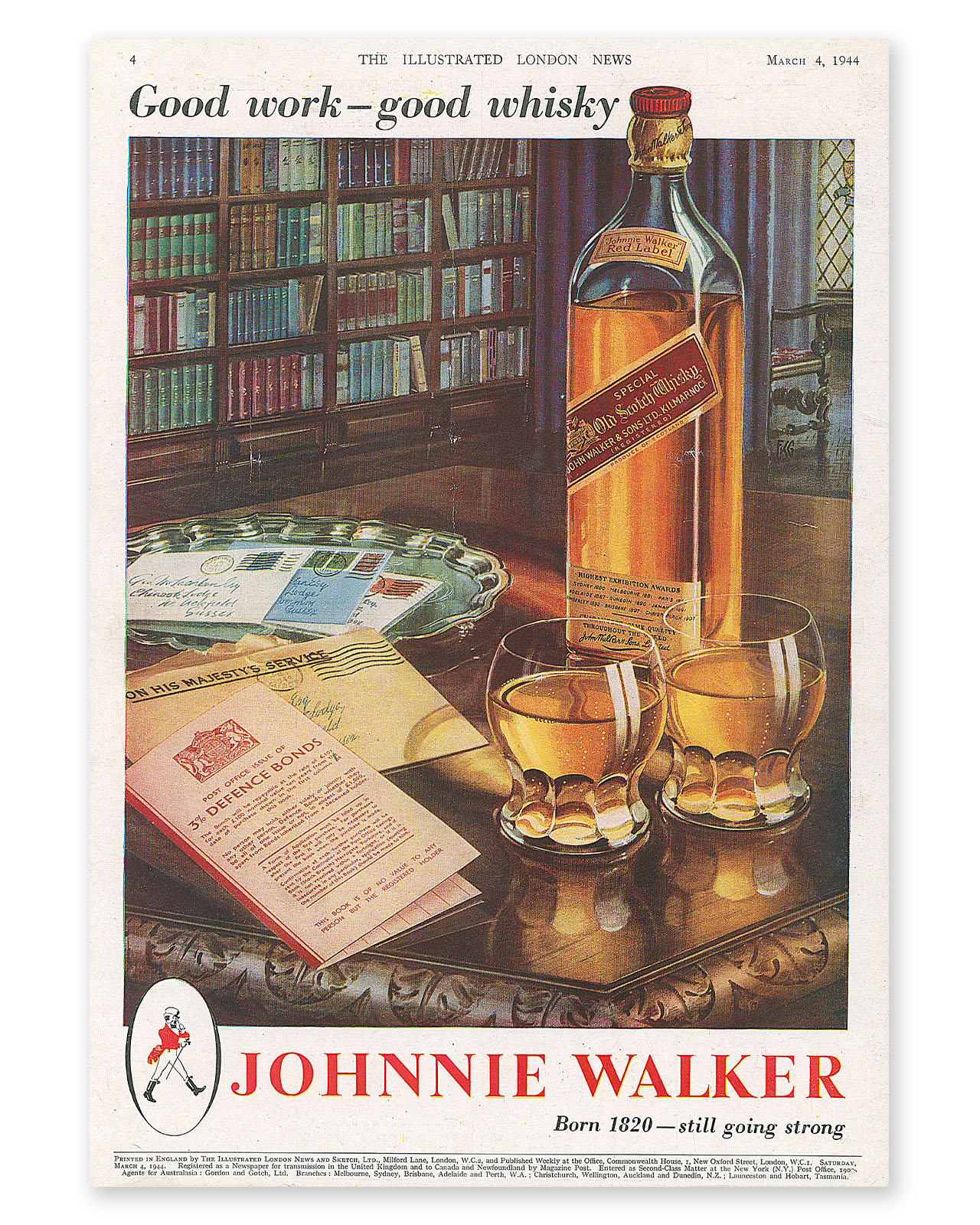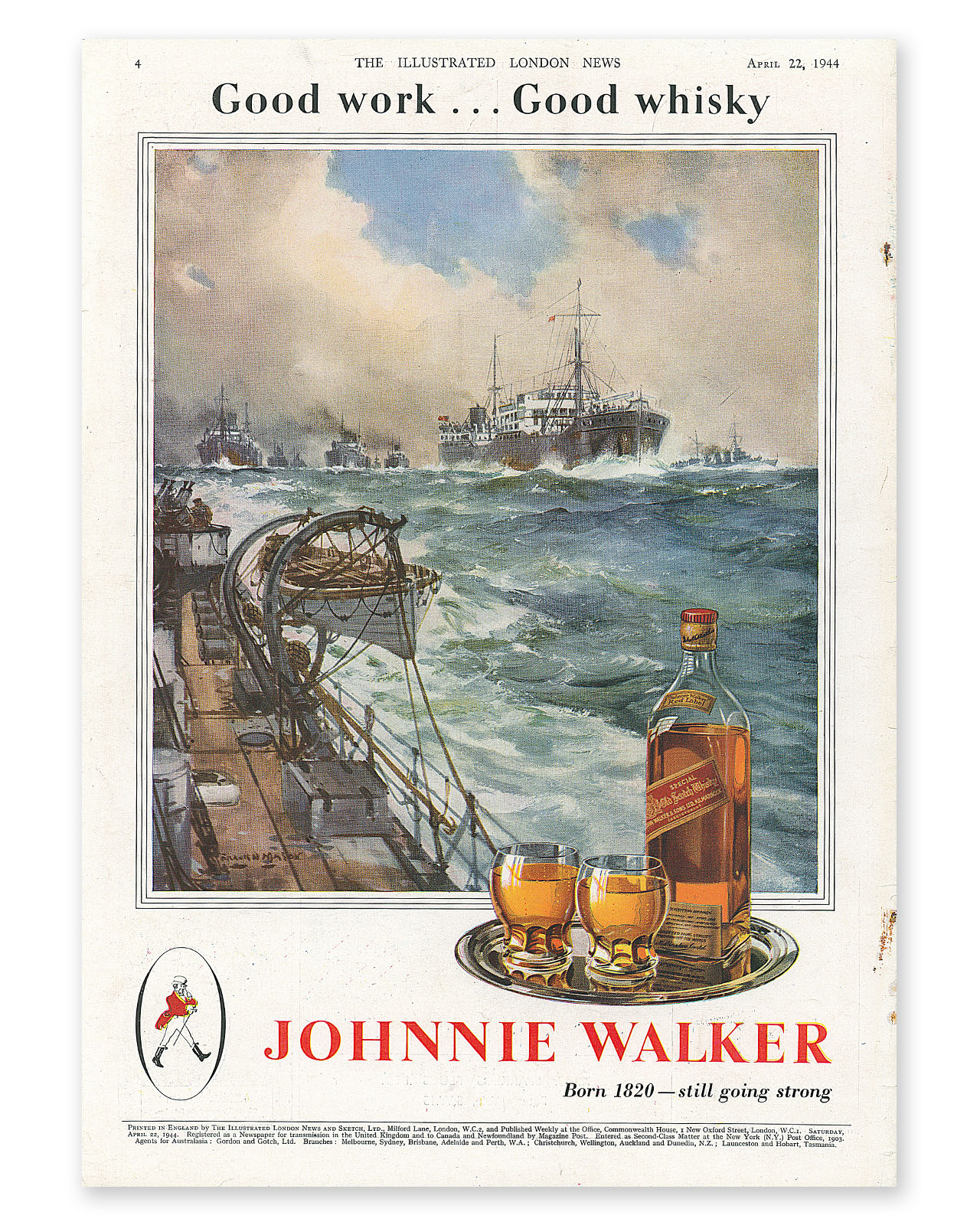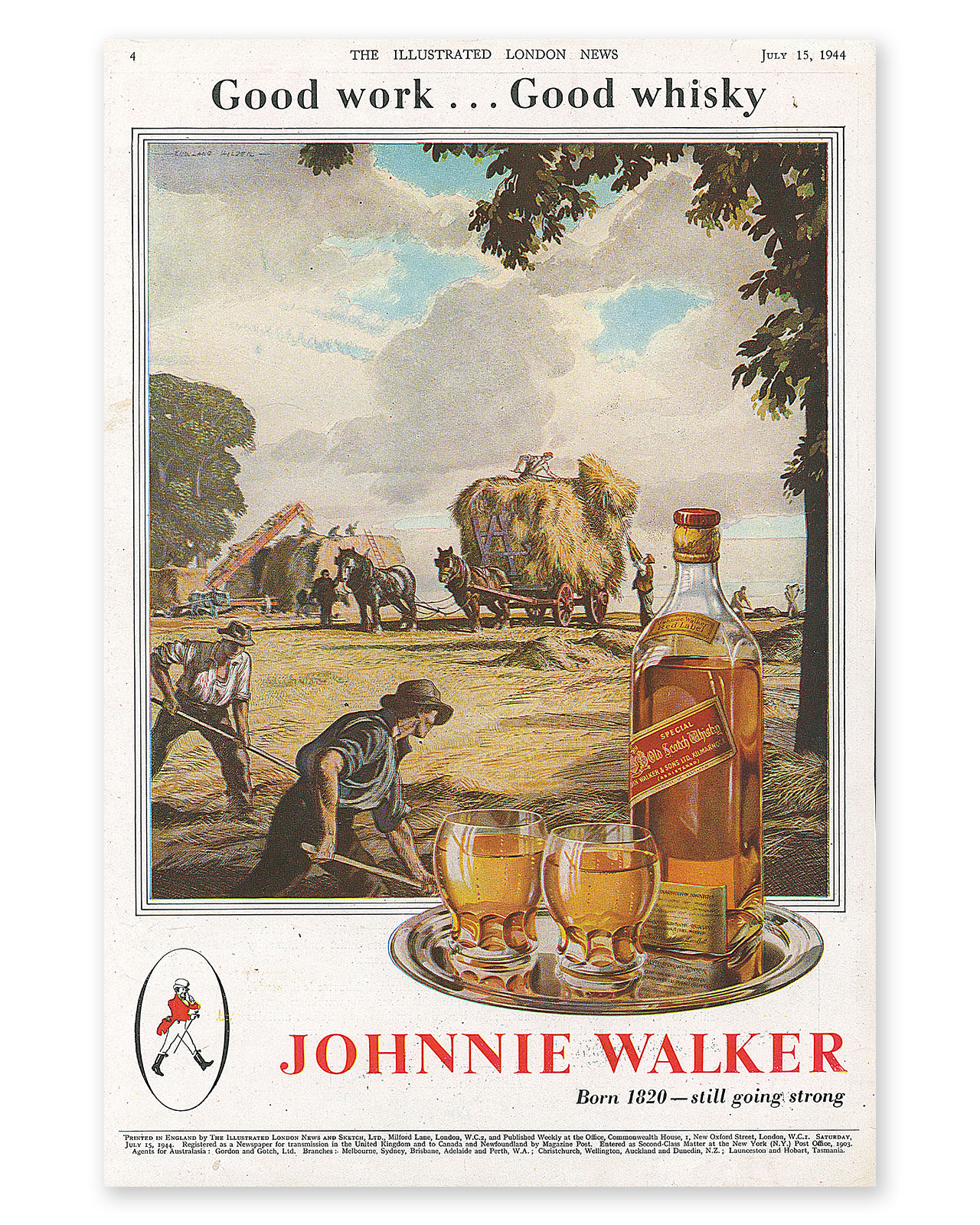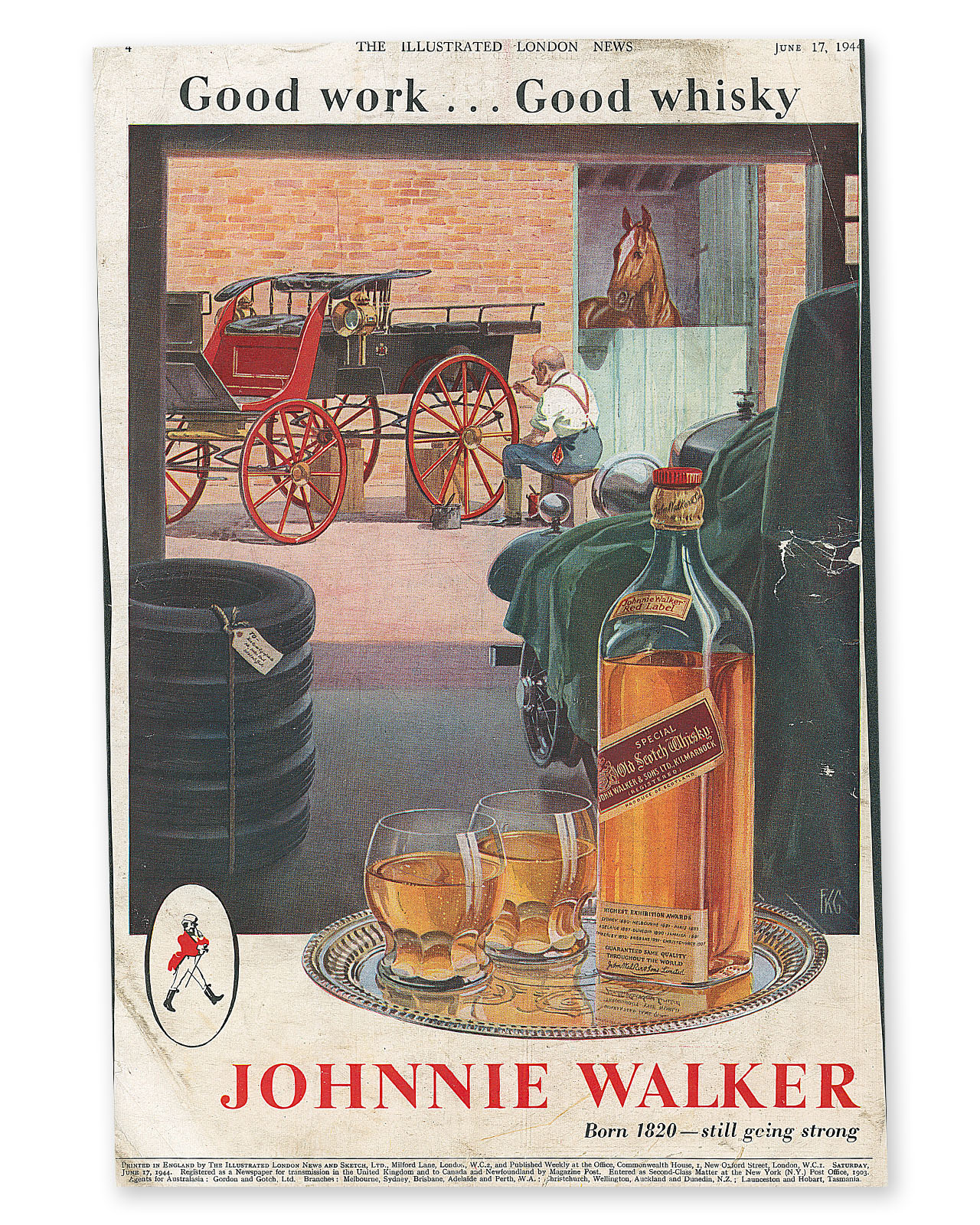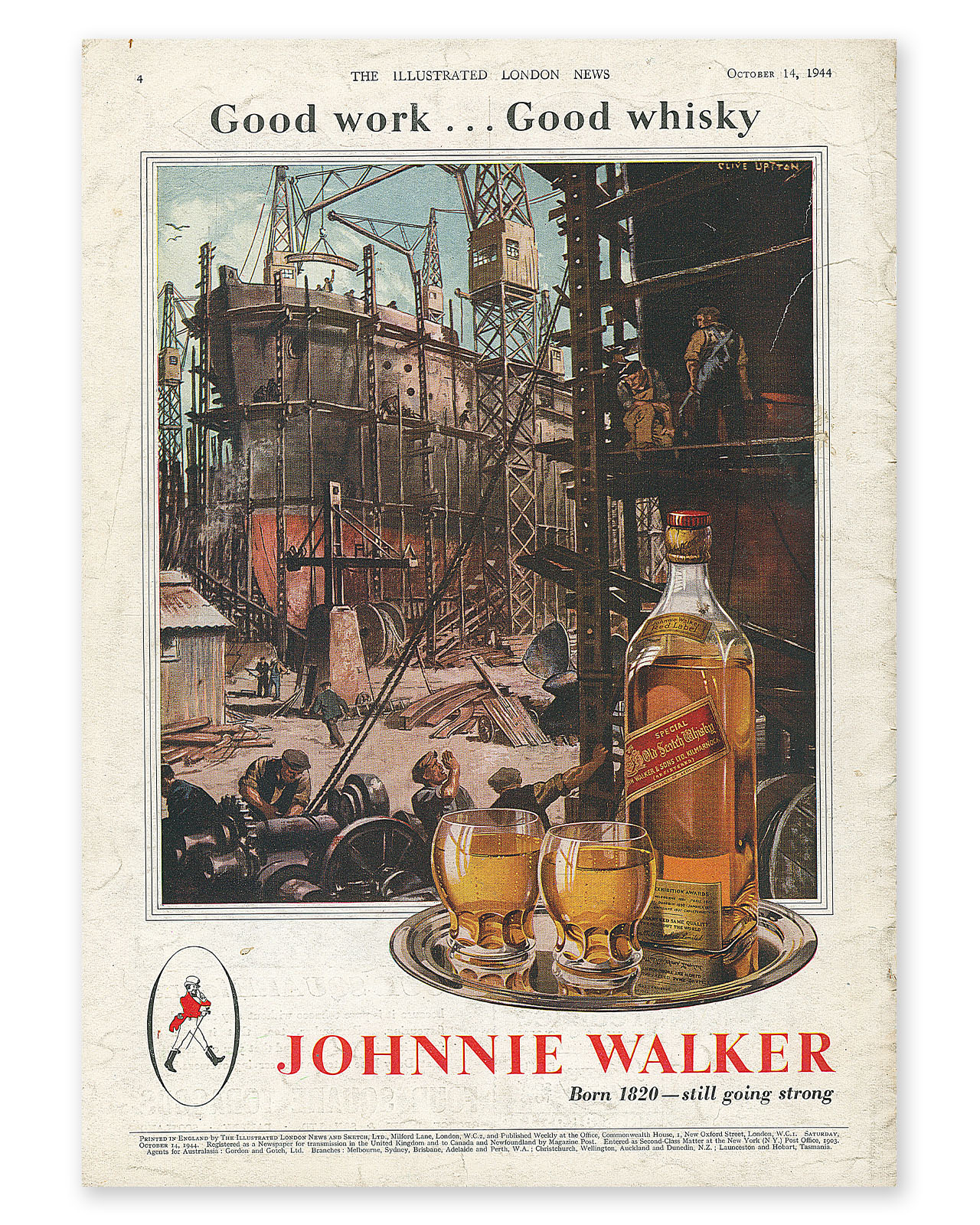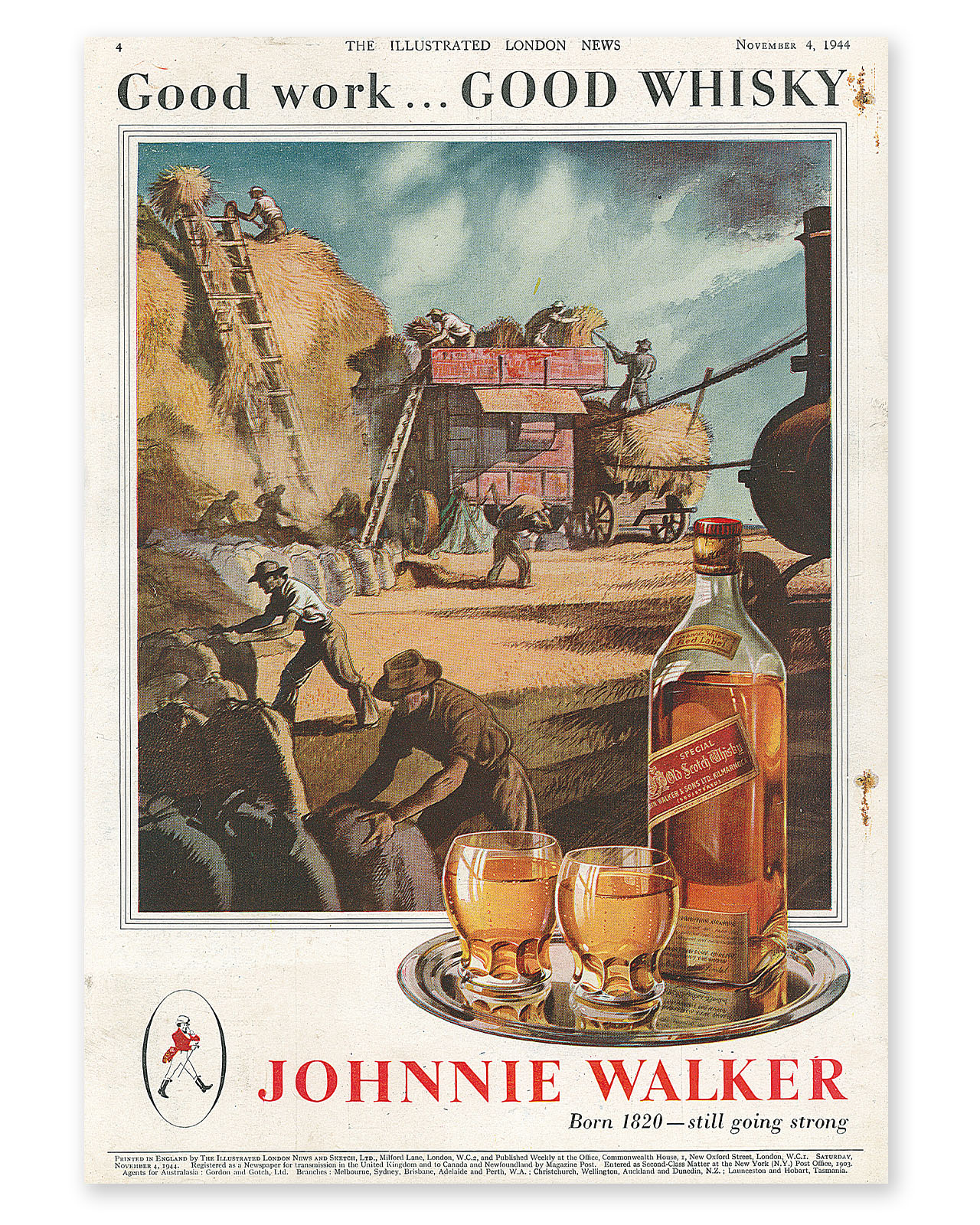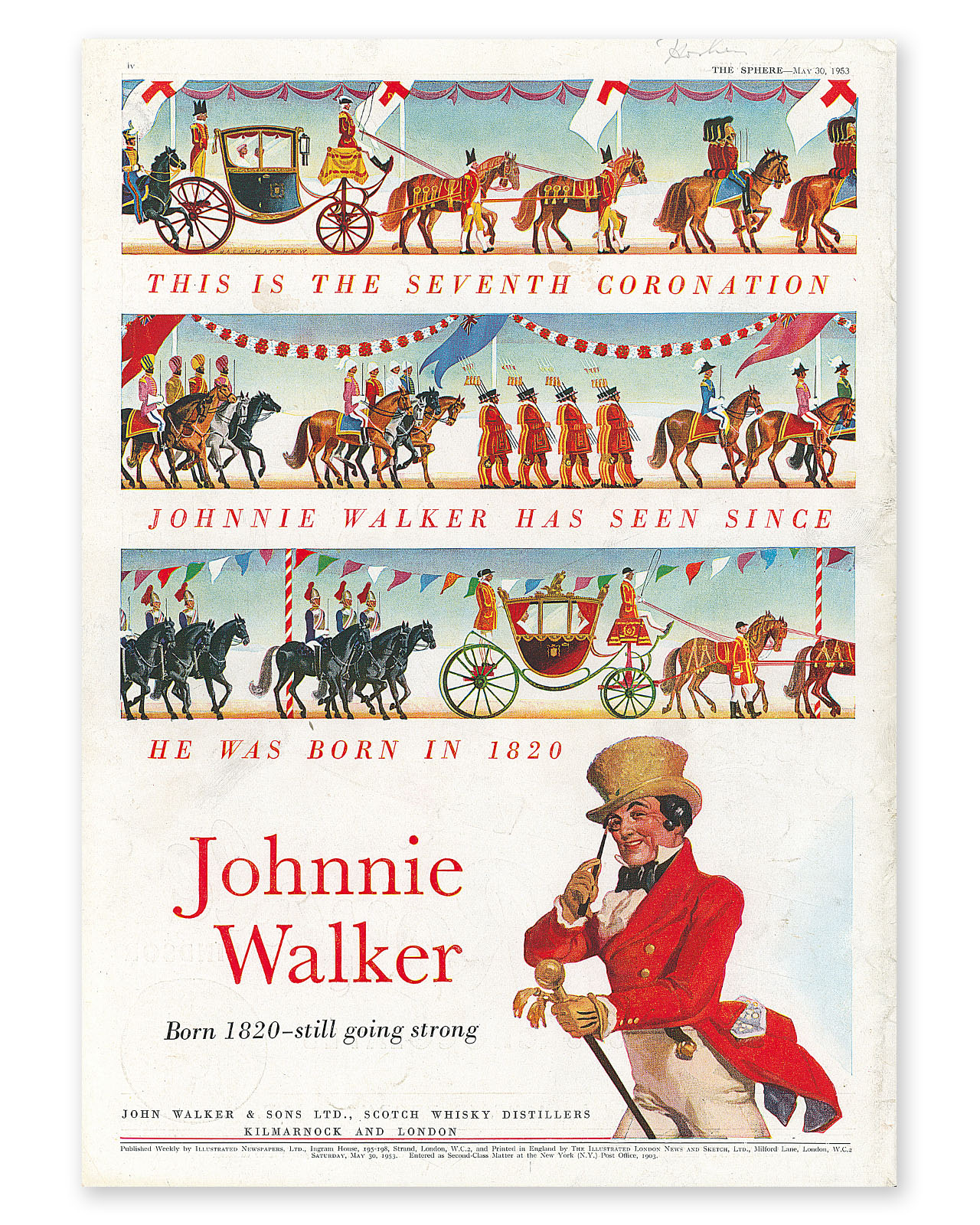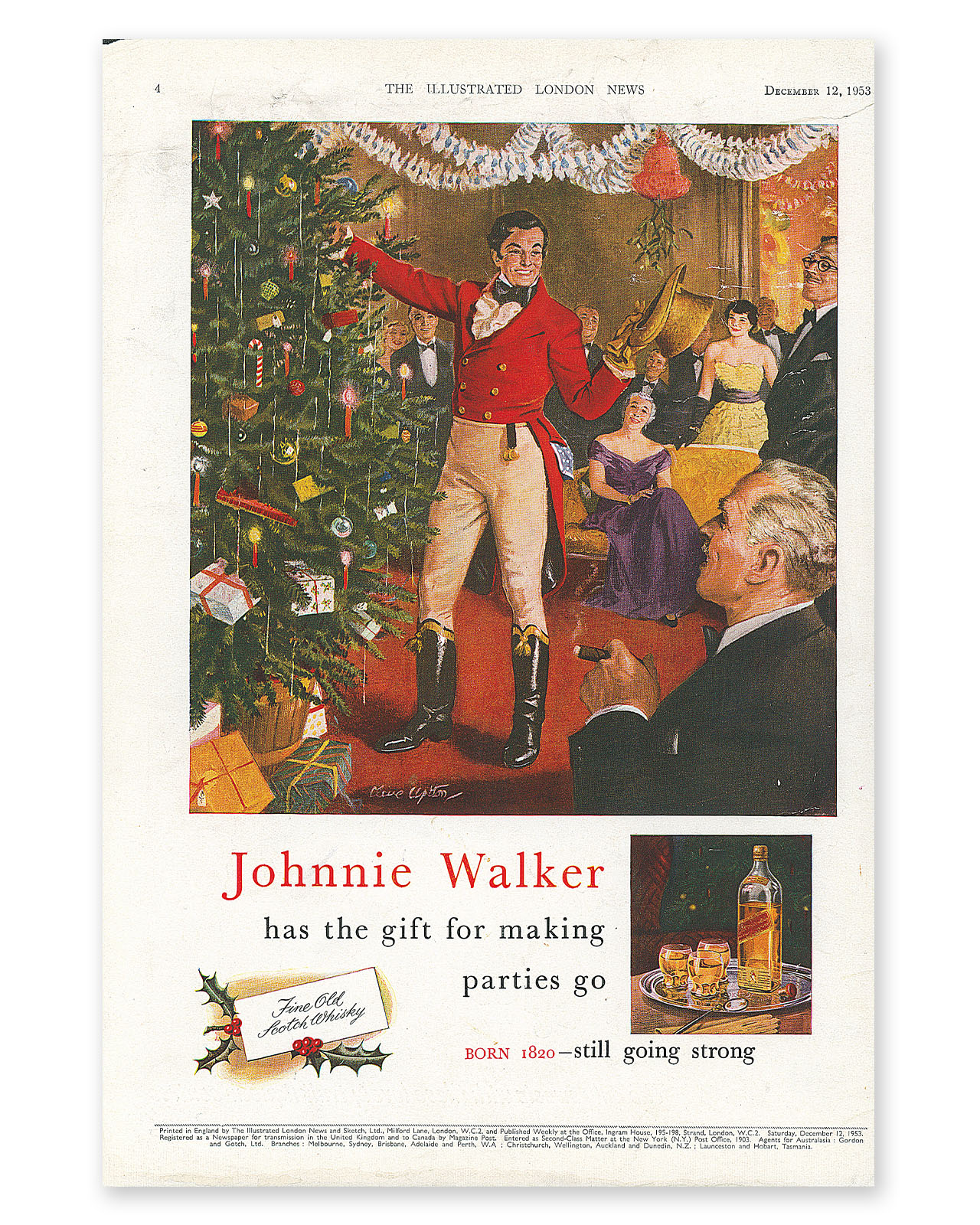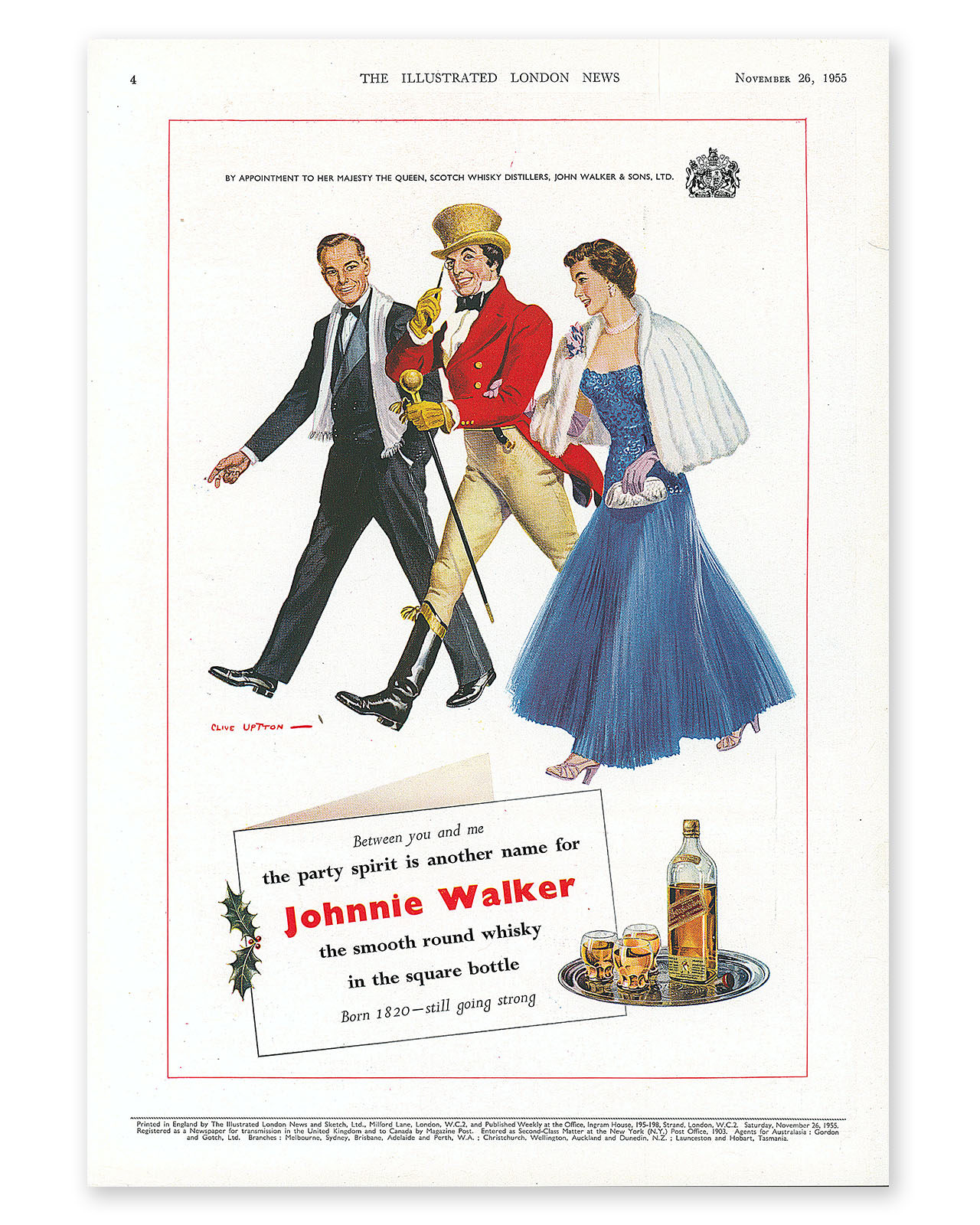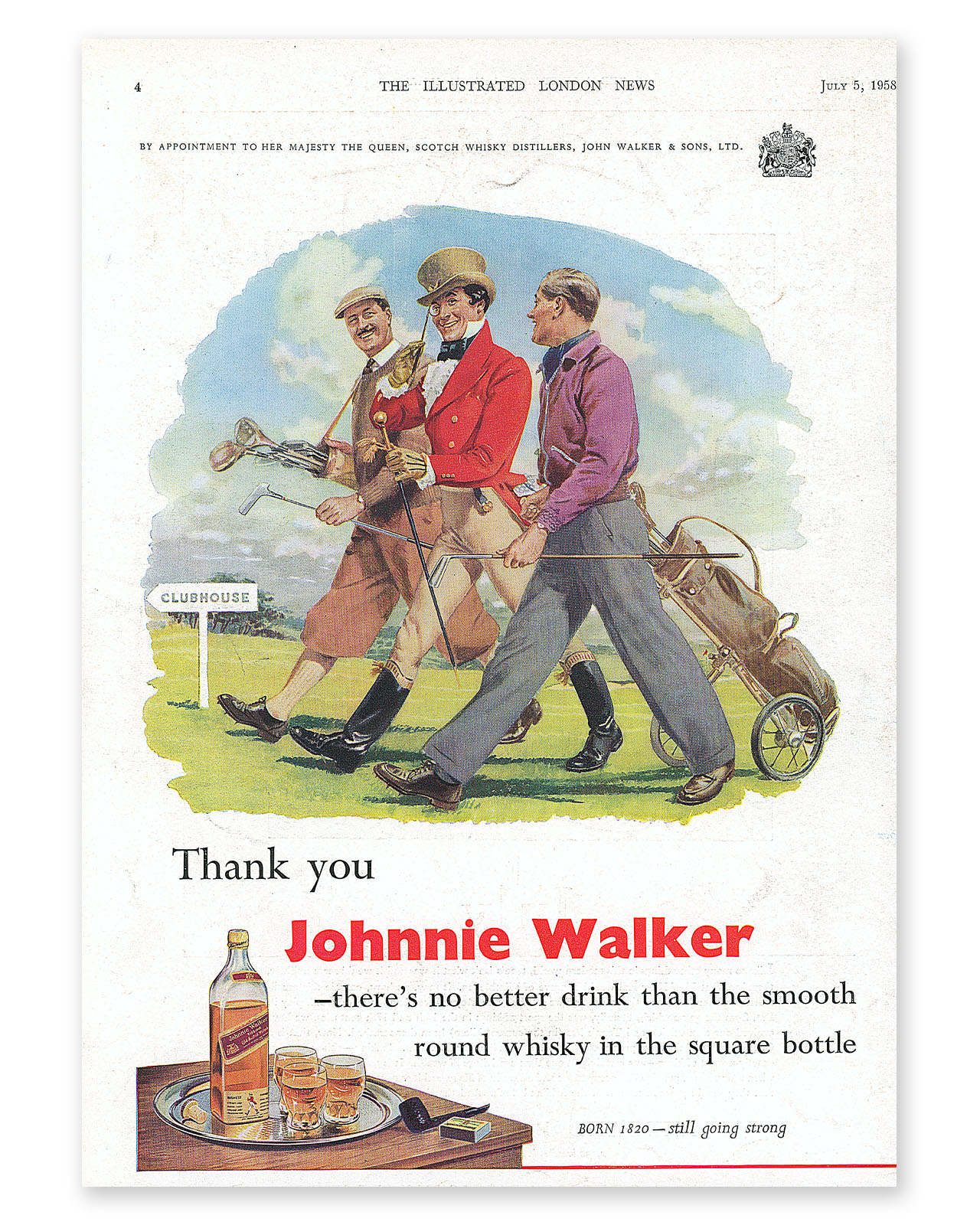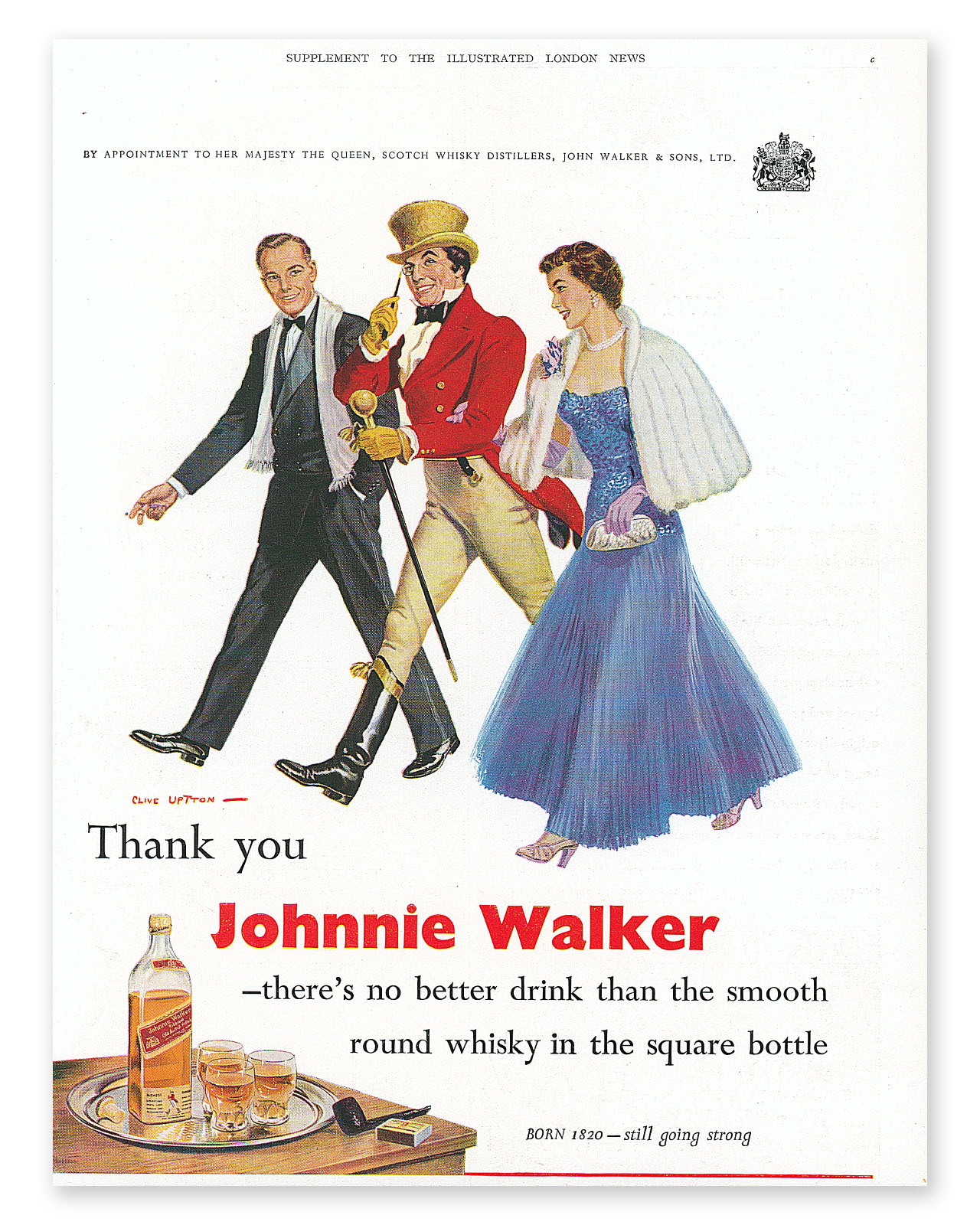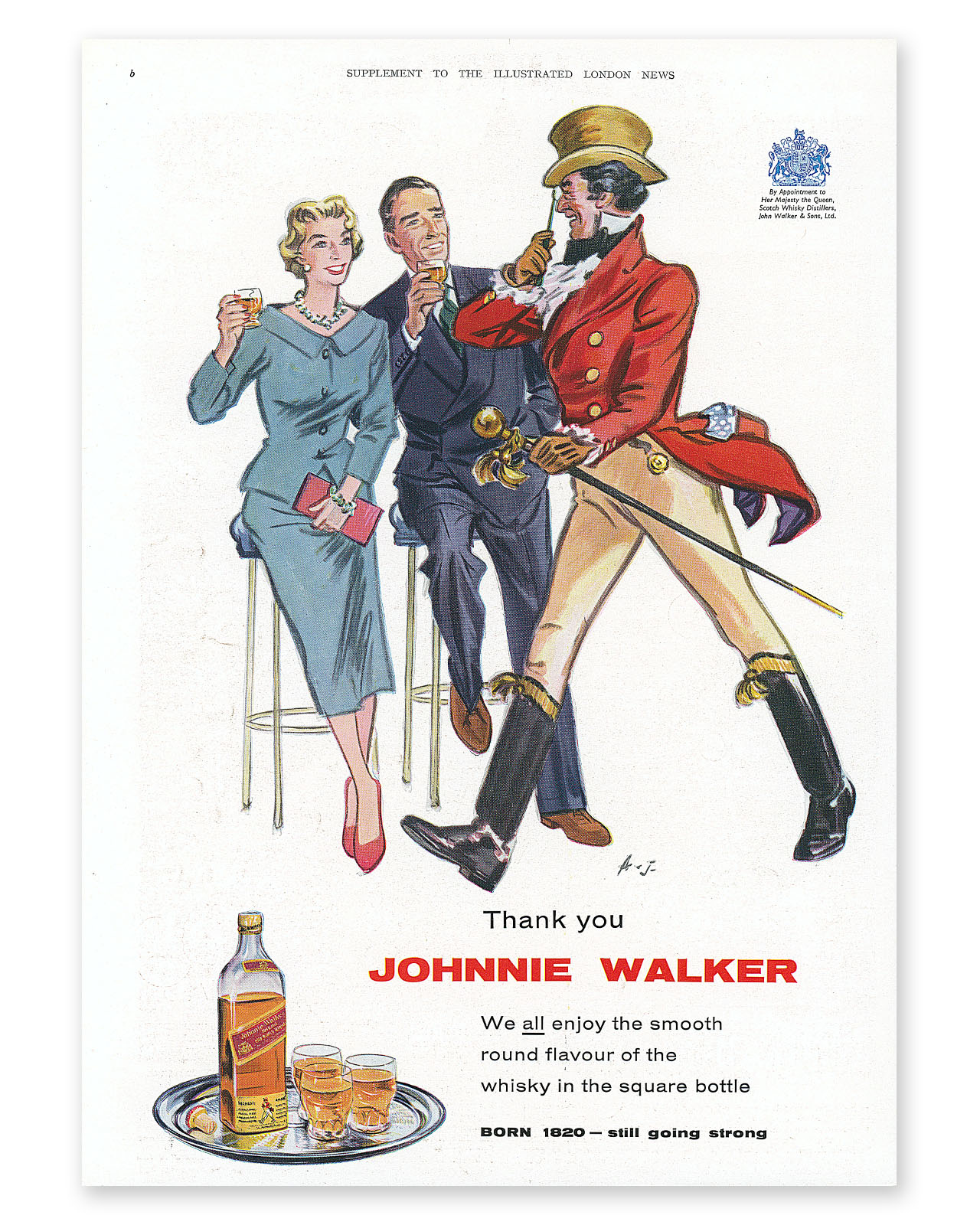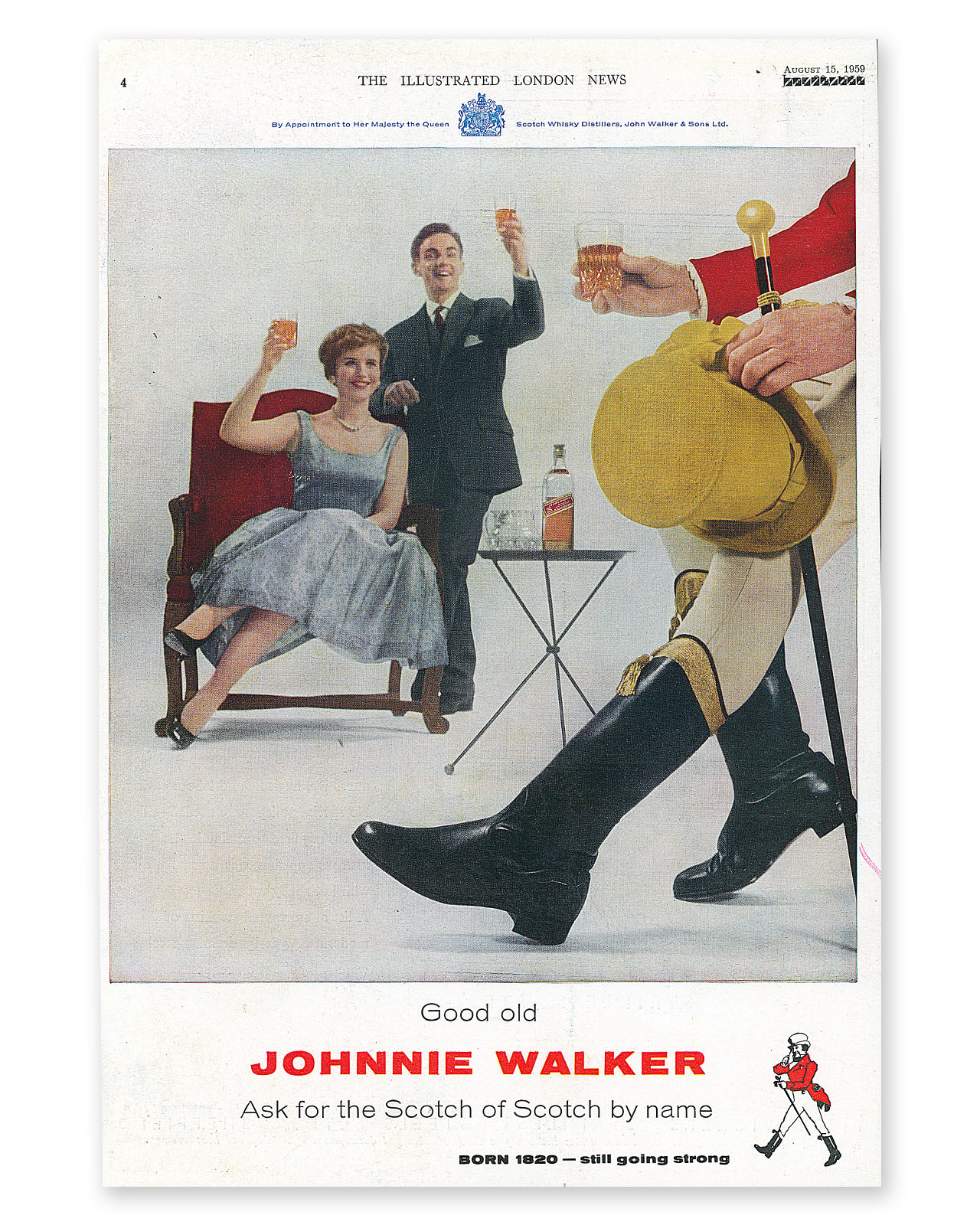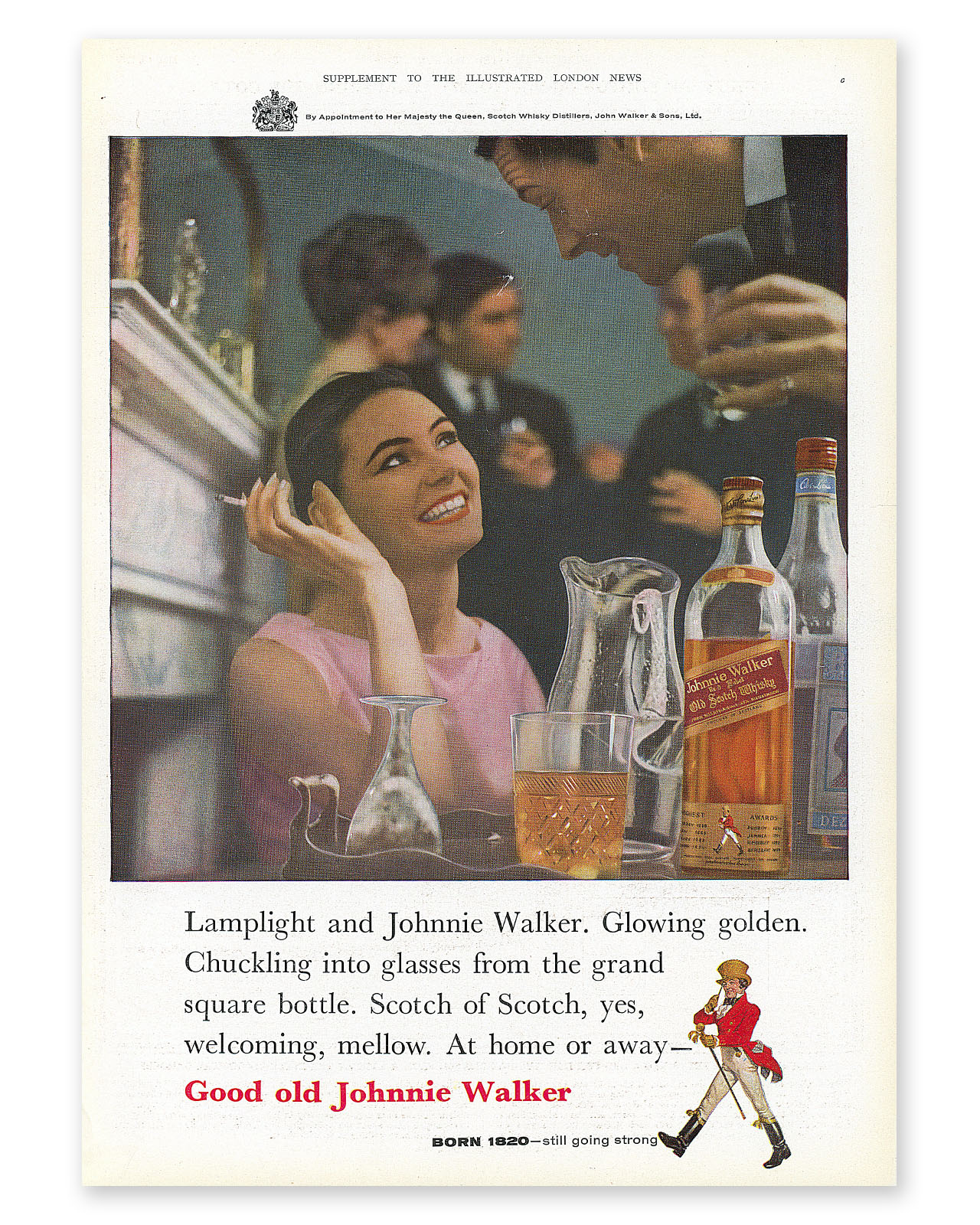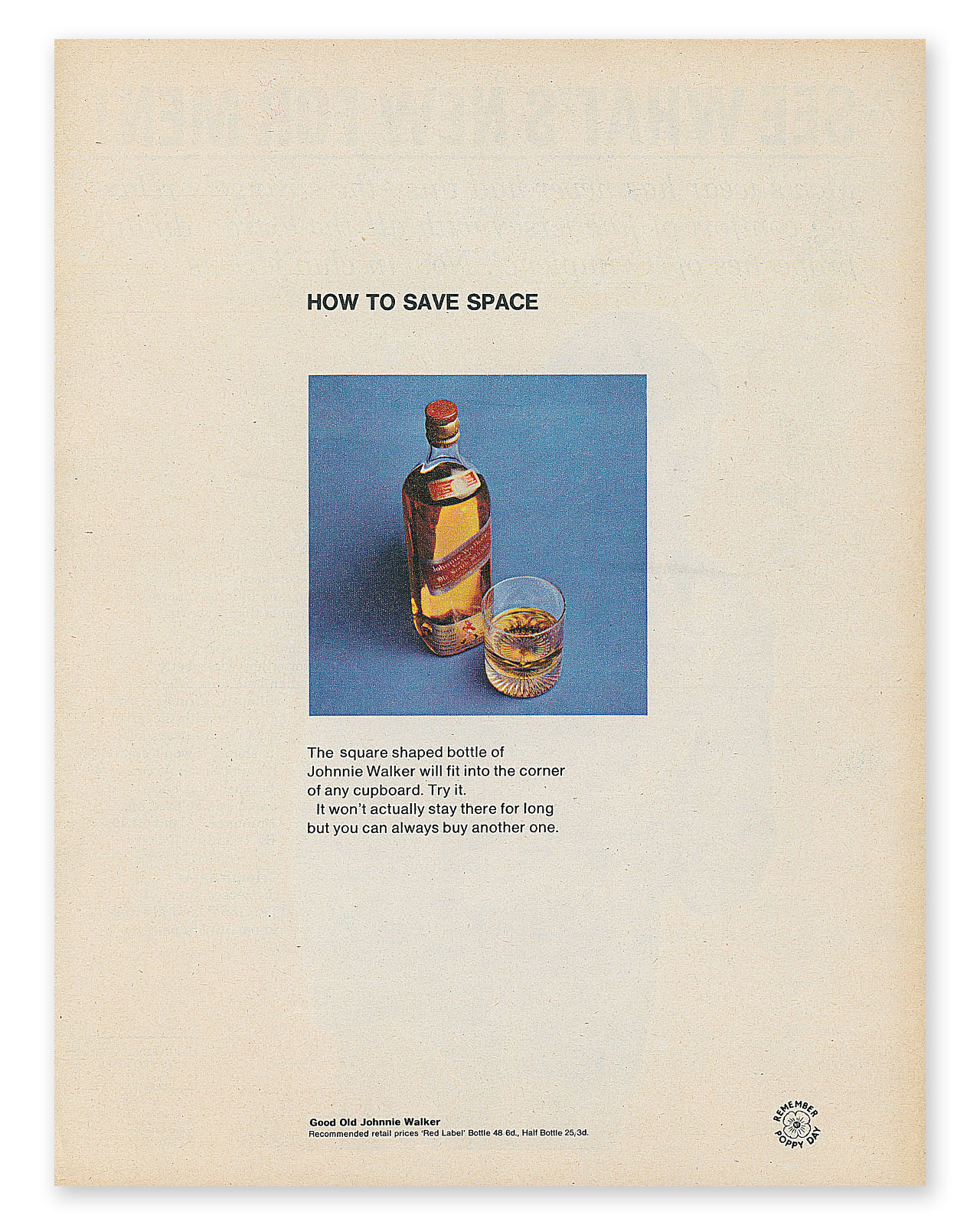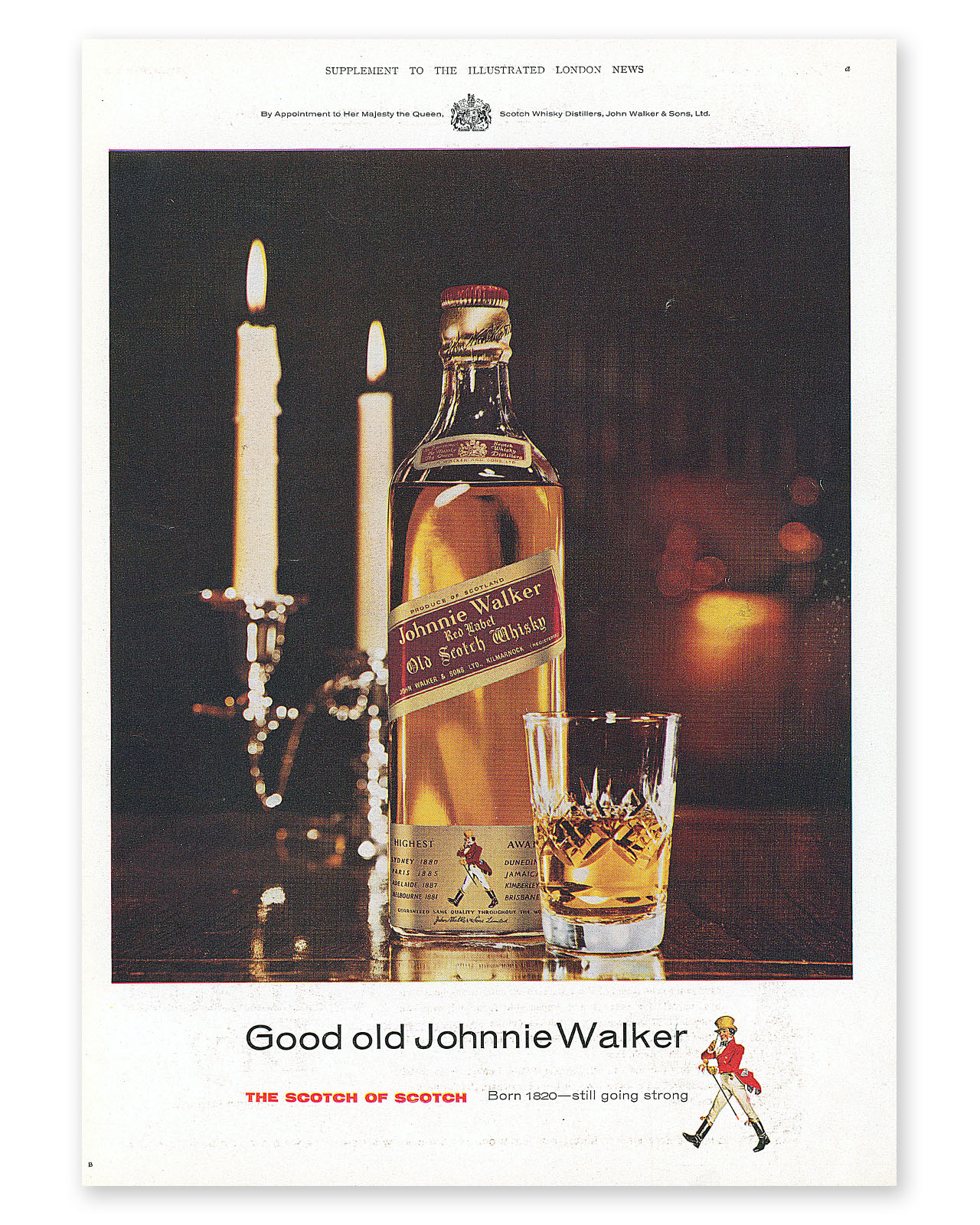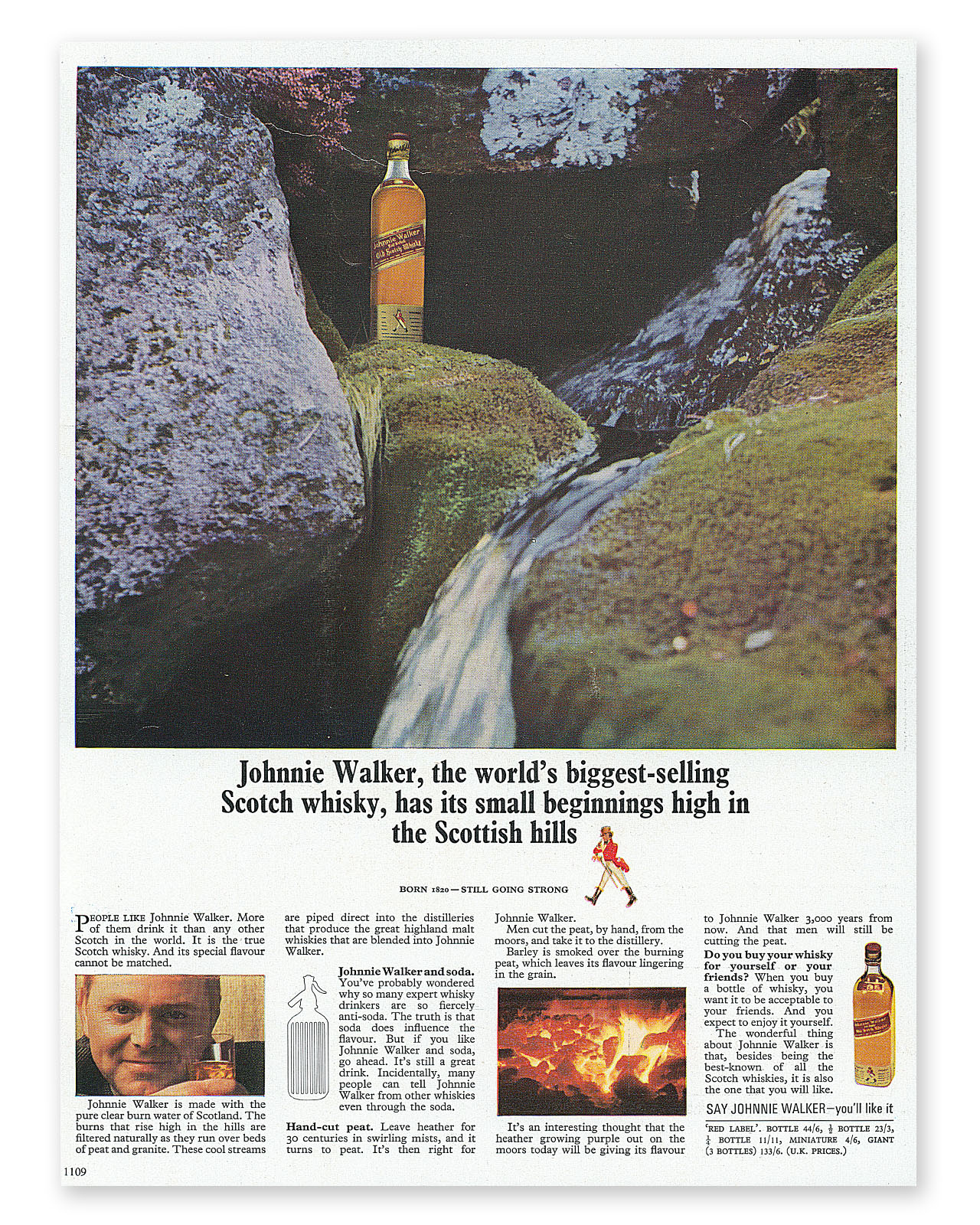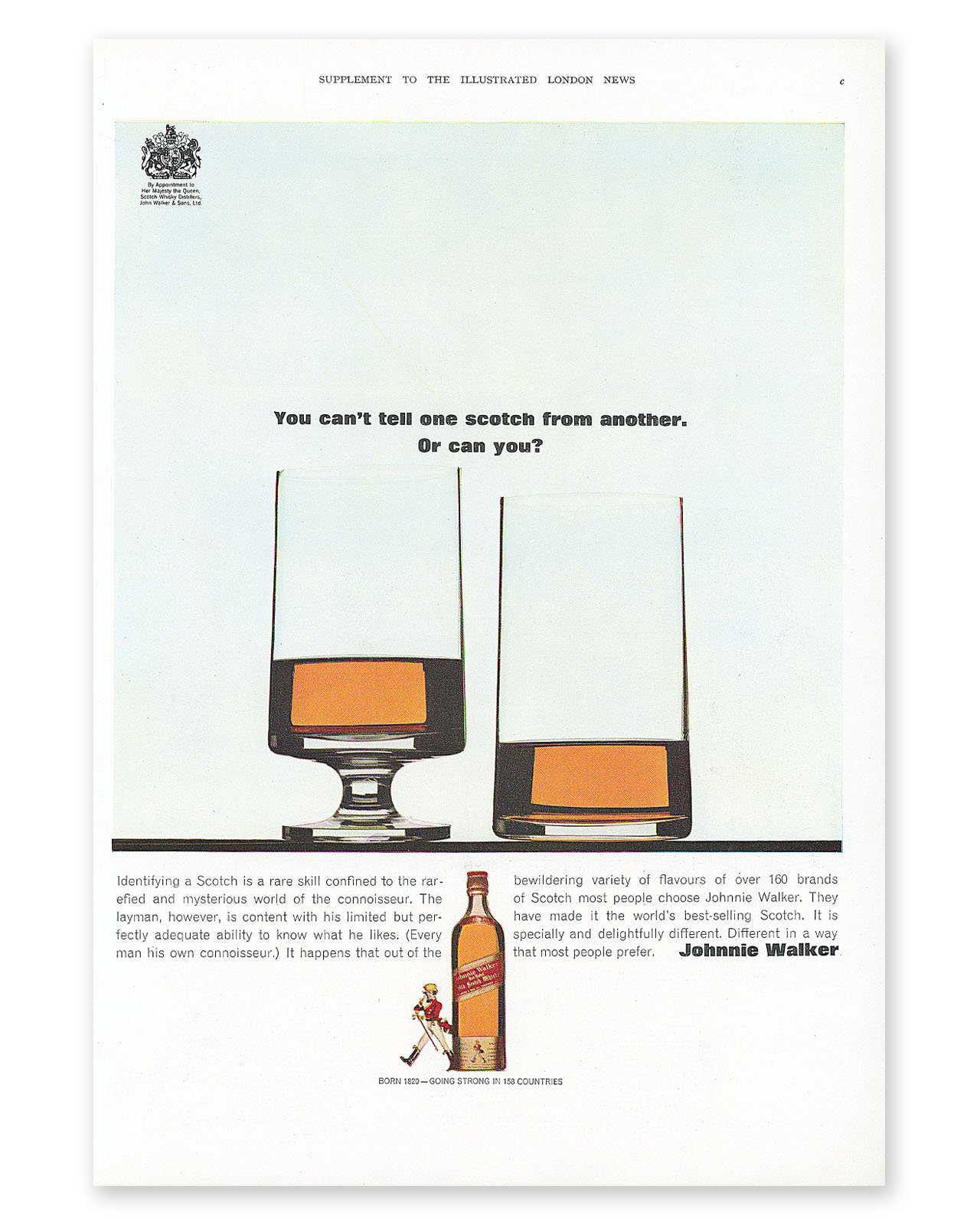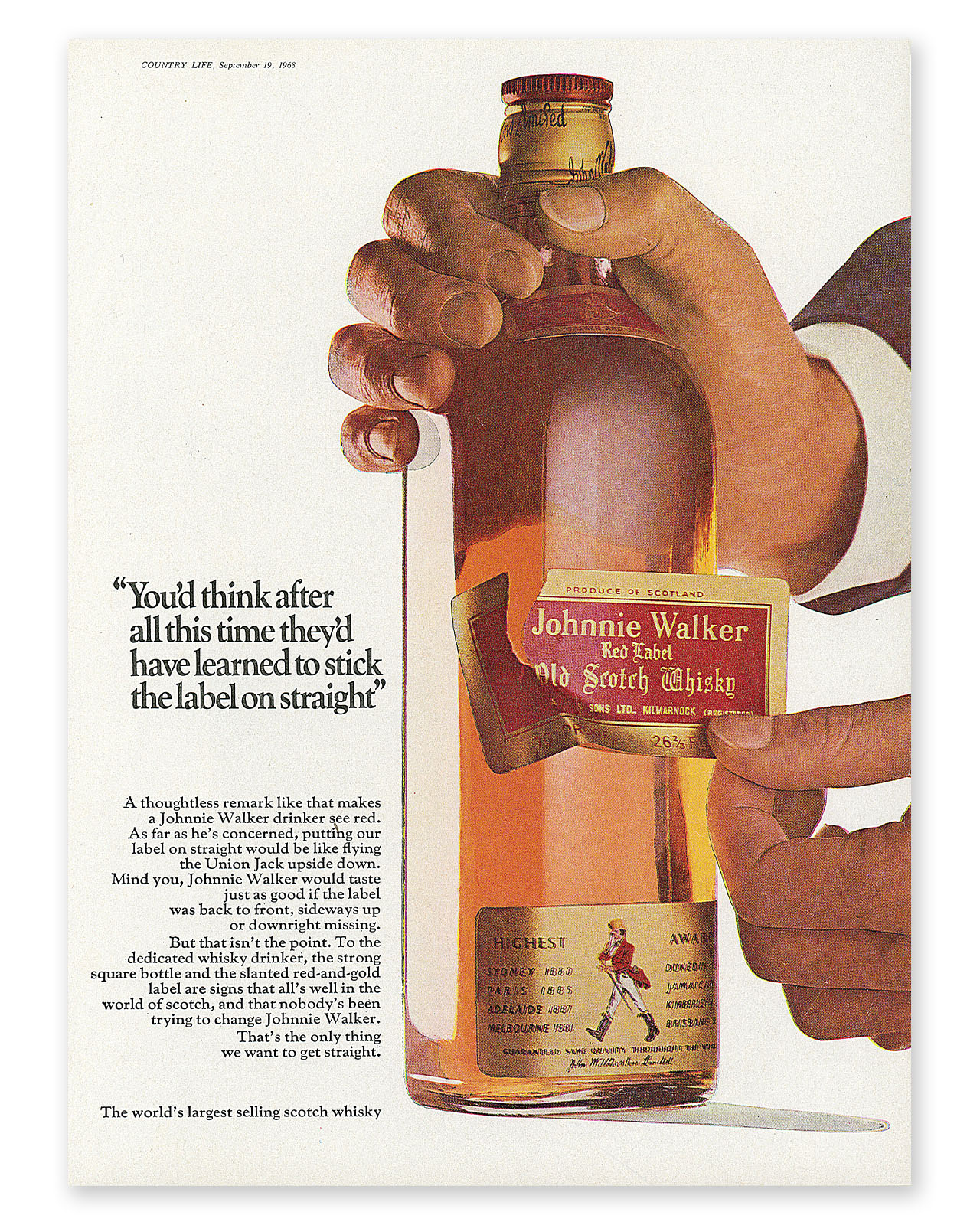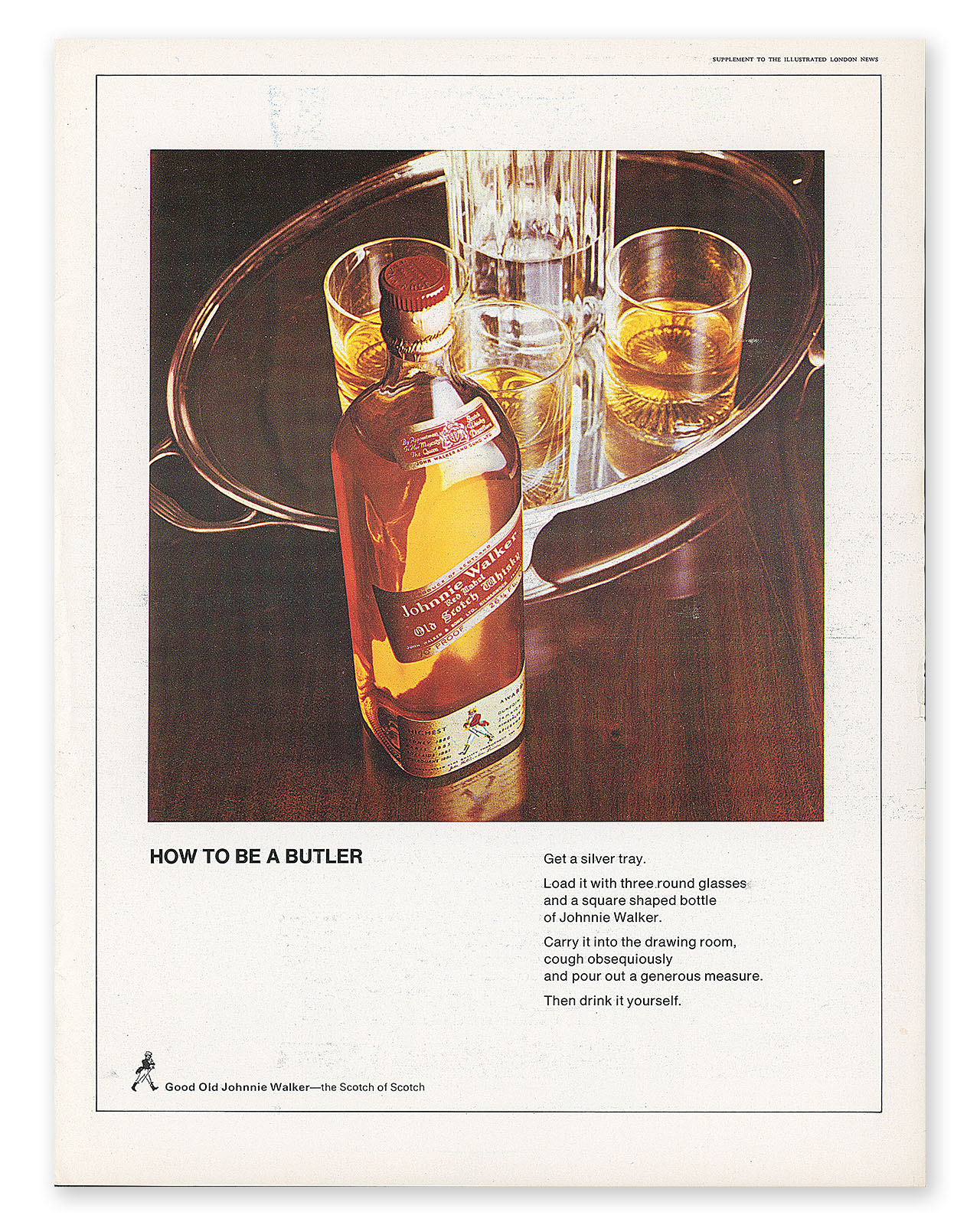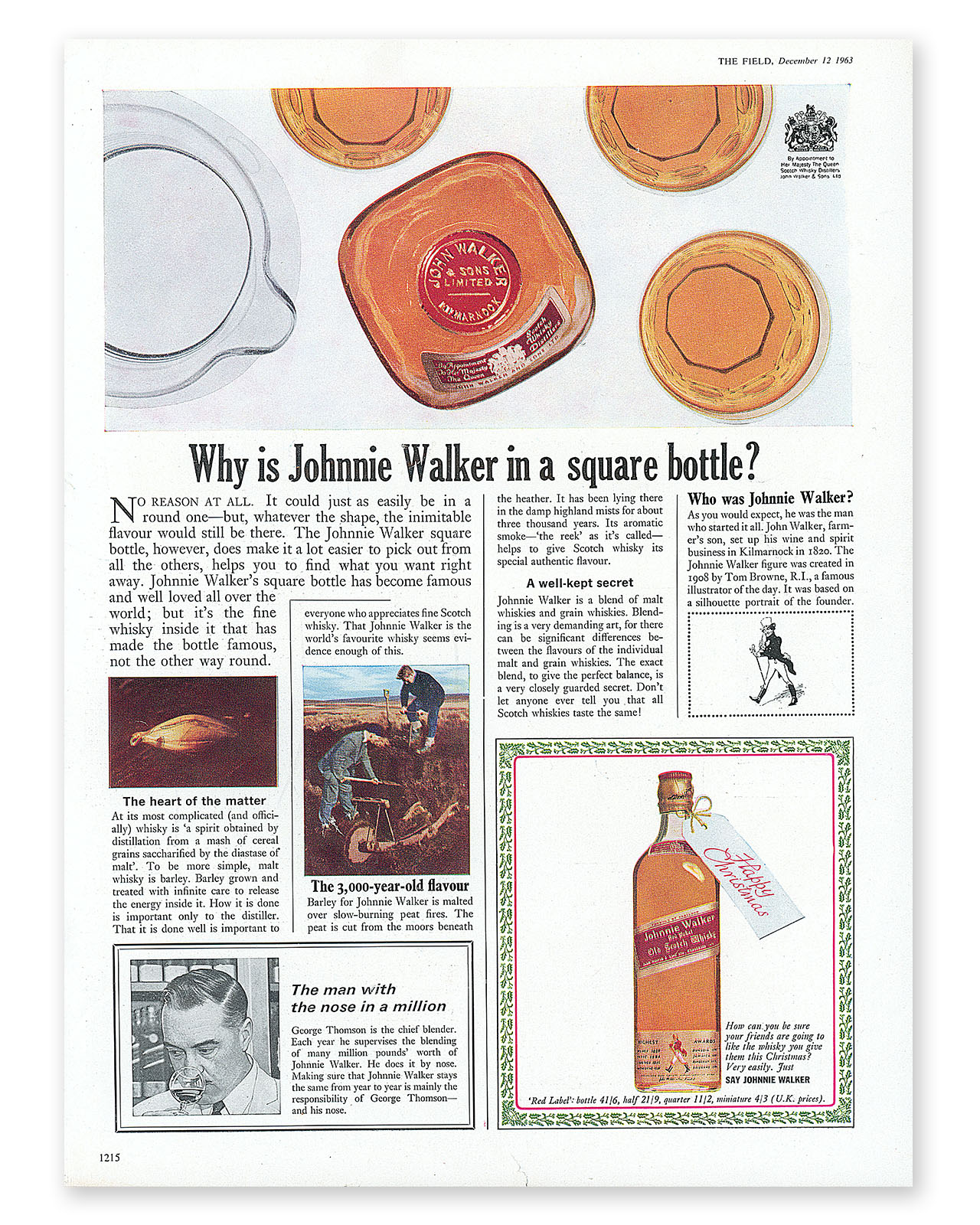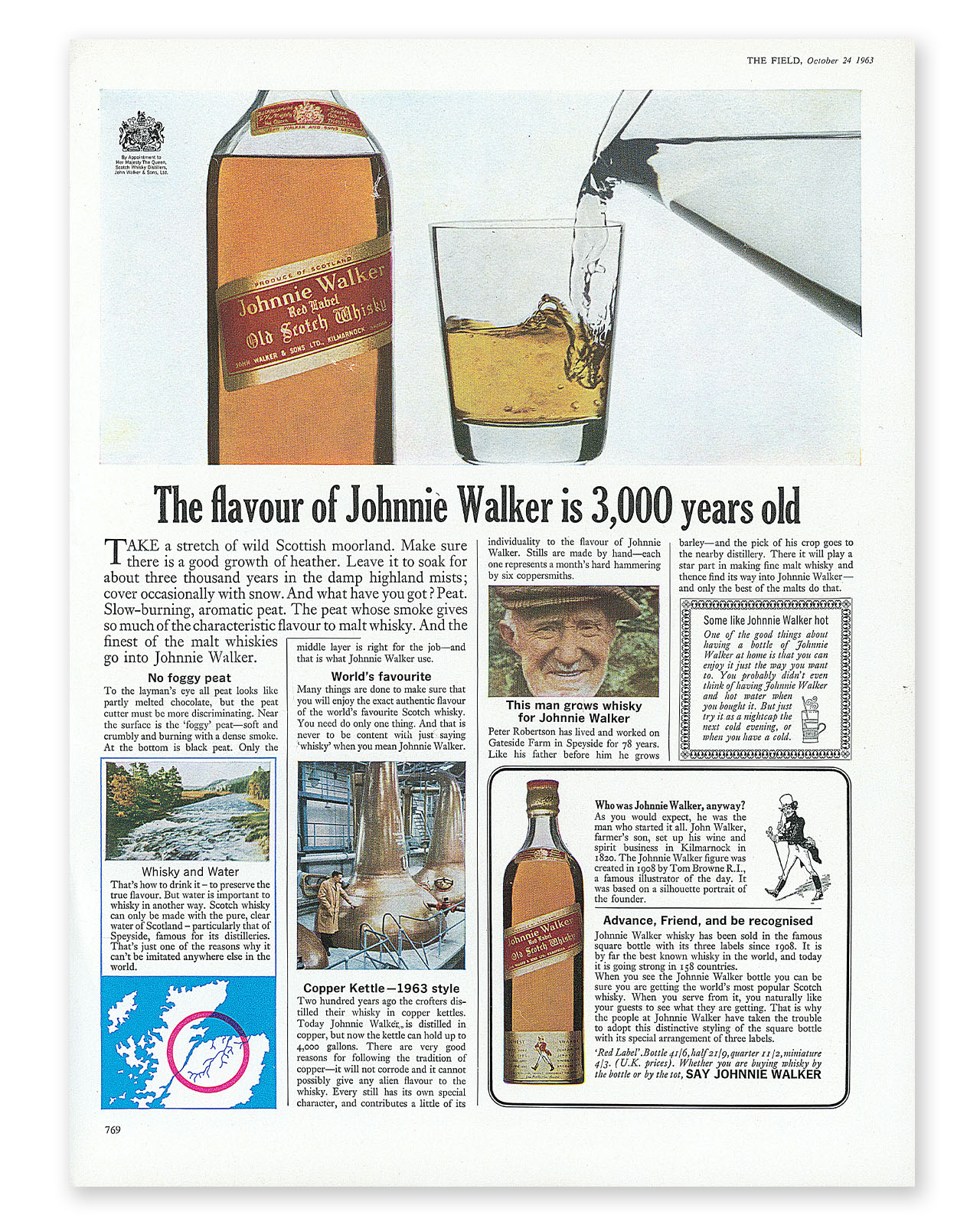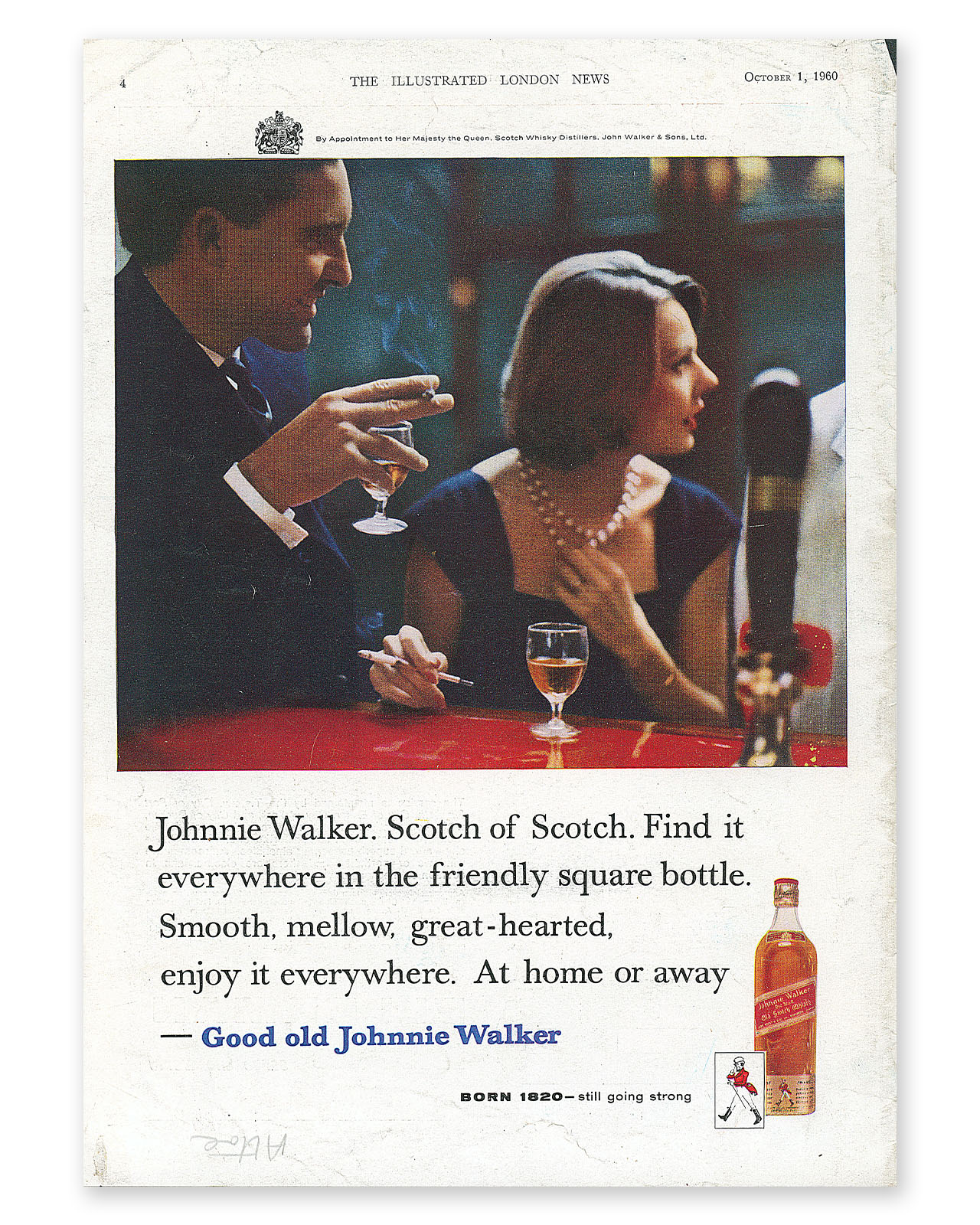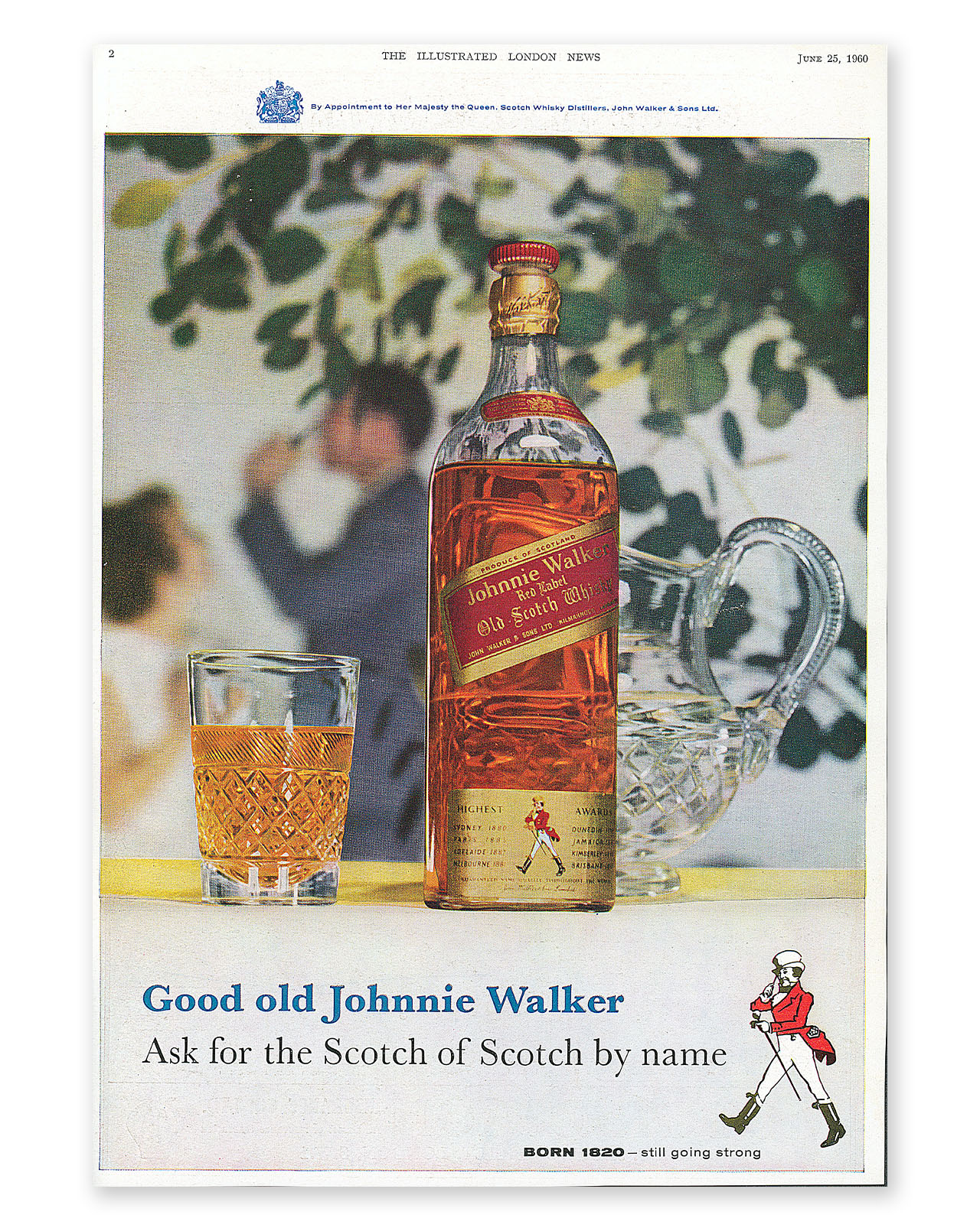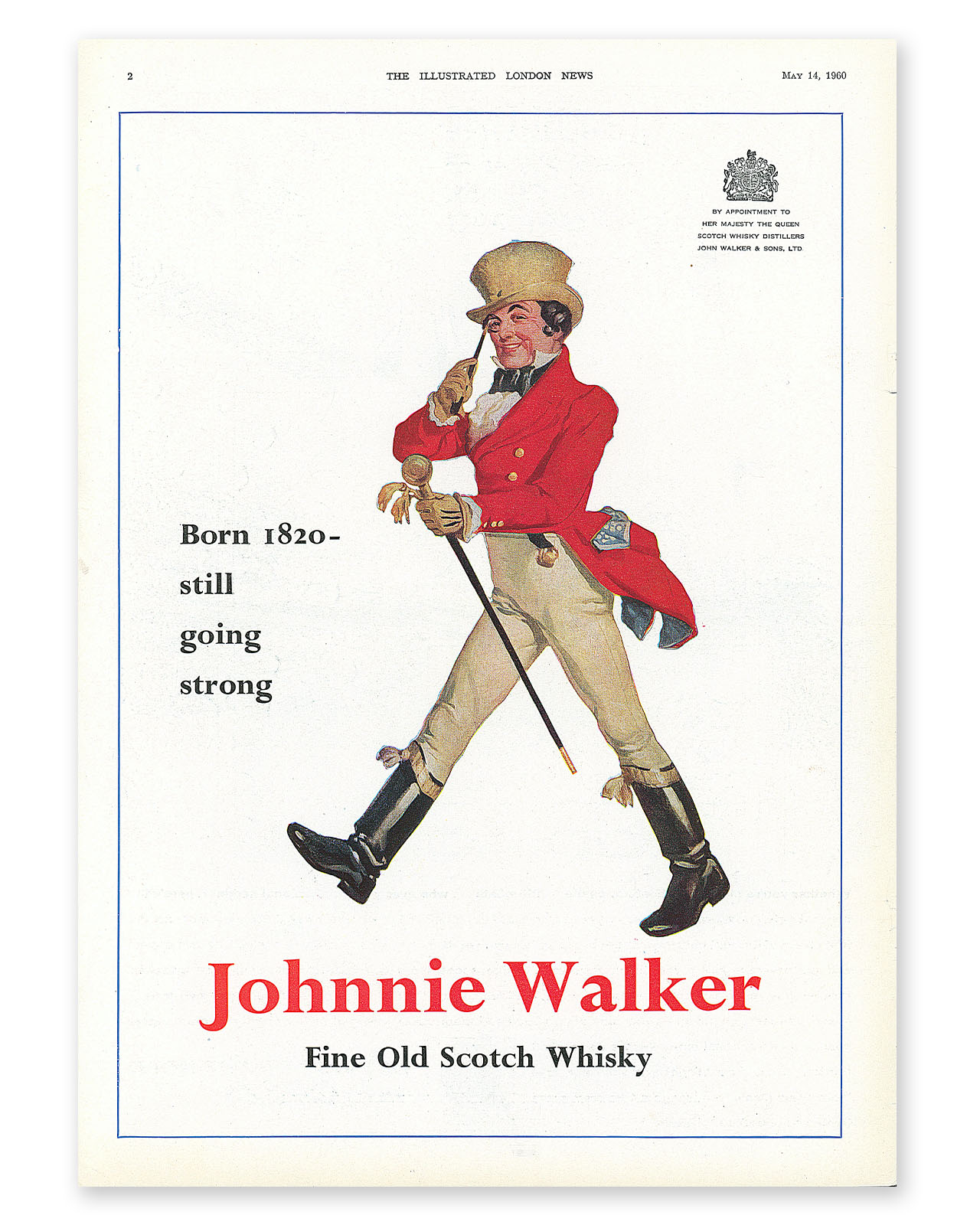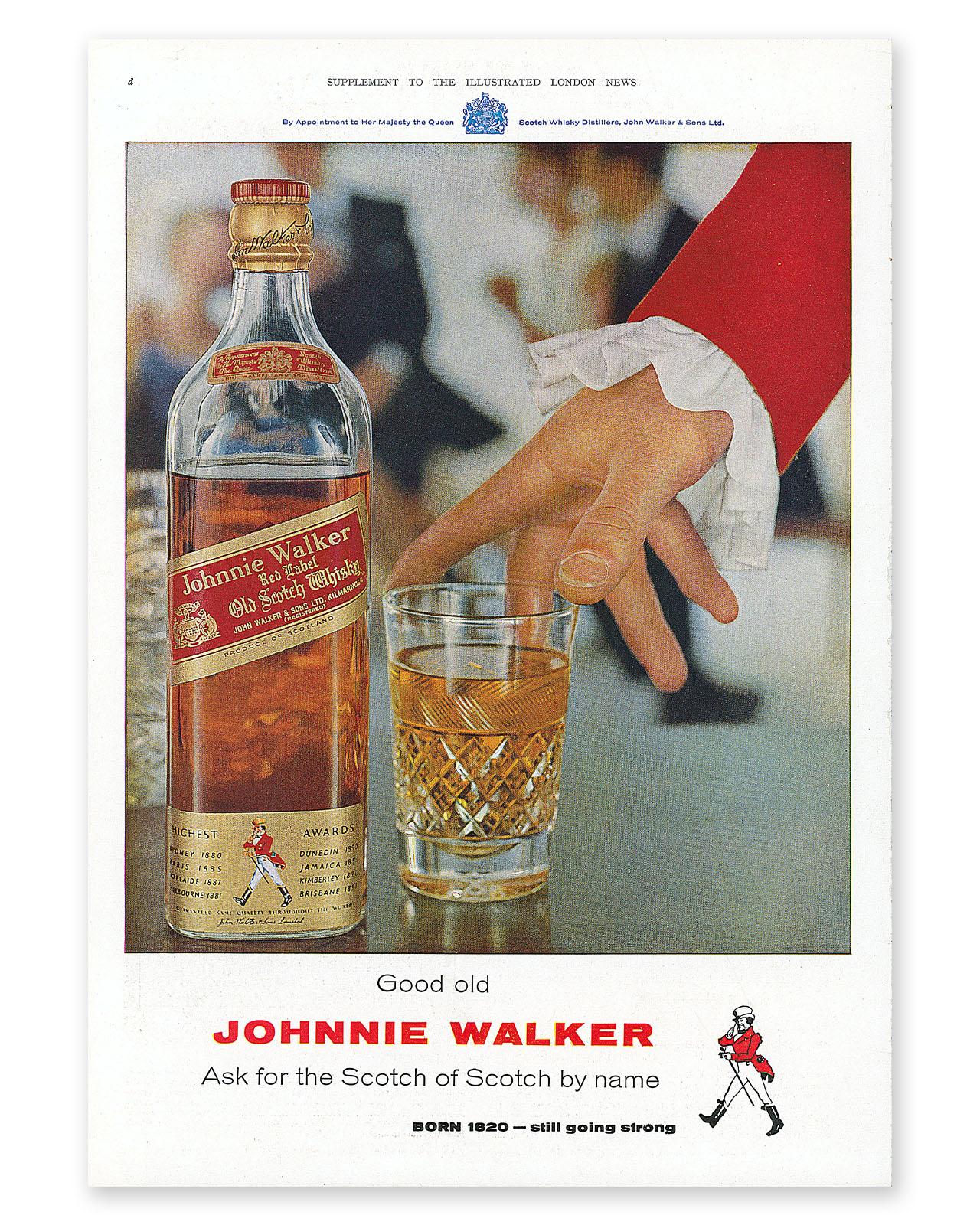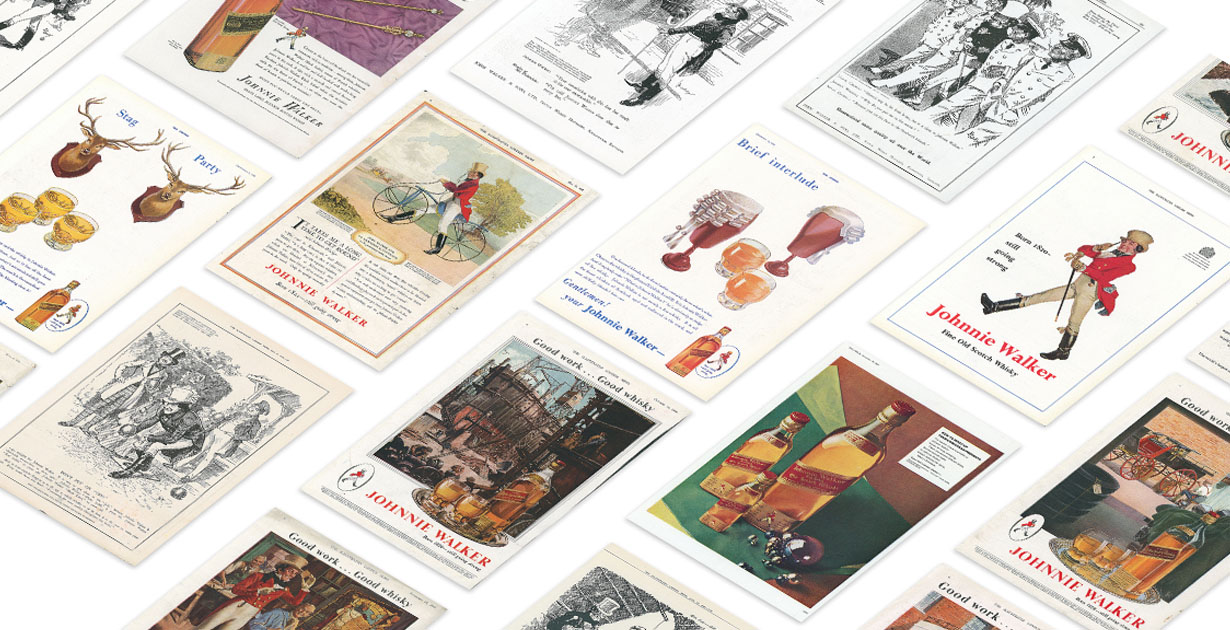
Welcome To The Whiskey Wash Johnnie Walker Advert Archive
Welcome to The Whiskey Wash’s Johnnie Walker Advert Archive, an extensive collection of nearly 100 print advertisements from one of the most iconic whisky brands in the world. Spanning over five decades from 1911 to 1963, this archive offers a unique glimpse into the creative evolution of Johnnie Walker’s advertising strategies and their pivotal role in the whisky market.
This collection is made freely available under the CC0 1.0 Universal license to serve as a resource for the creative industries. Designers, marketers, historians, and whisky enthusiasts can delve into these adverts to understand more about the art of persuasion, the intricacies of print advertising, and the dynamic landscape of the whisky market through the decades.
In showcasing these advertisements, The Whiskey Wash hopes to inspire and inform current and future generations, highlighting the enduring power of creative advertising in the ever-evolving world of whisky.
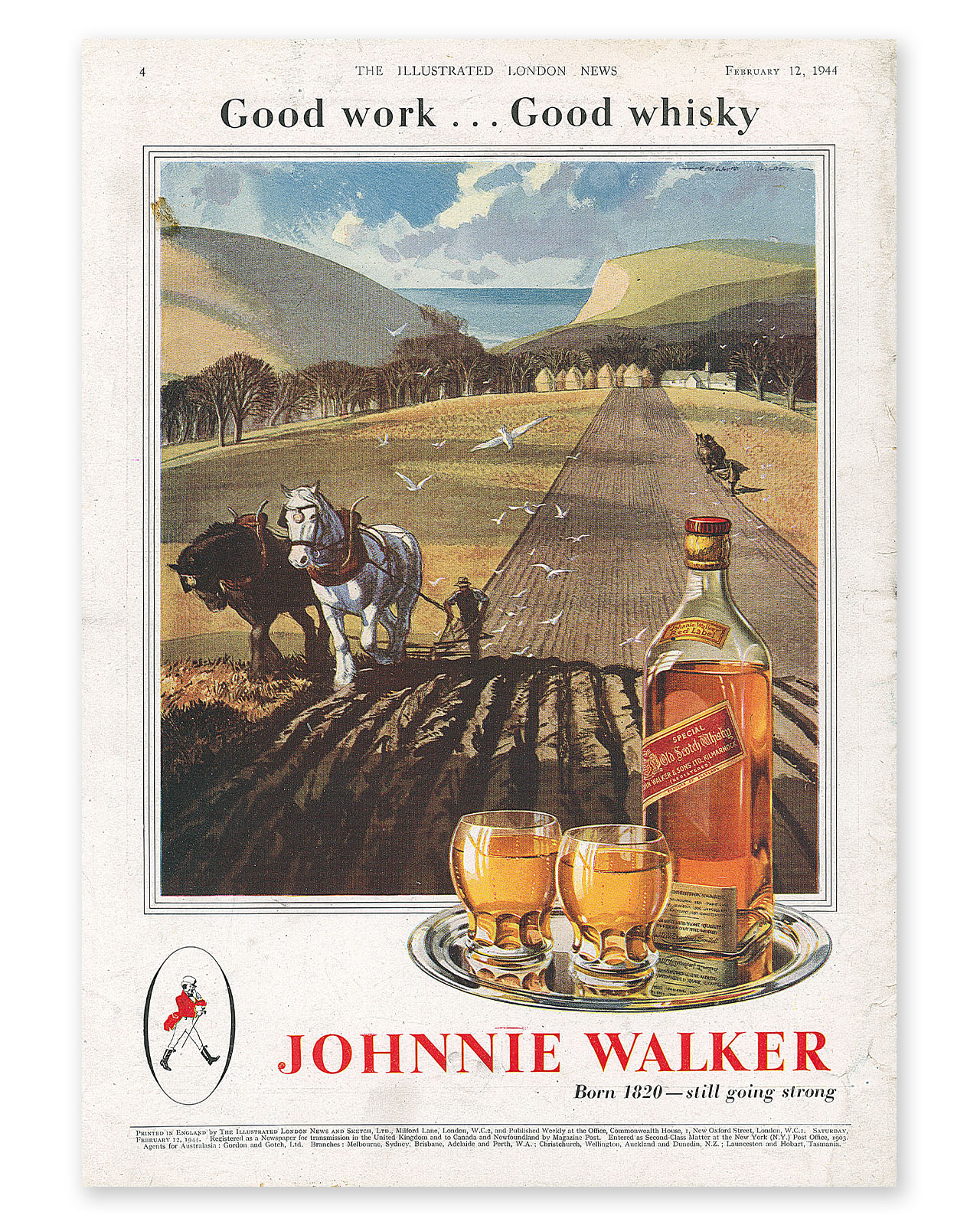
In the 1910s, the world was significantly shaped by World War I, which lasted from 1914 to 1918. The UK was one of the Entente Powers fighting against the Central Powers, and the war effort deeply impacted its society, economy, and politics. Rationing, military conscription, and large-scale industrial and workforce shifts were common. In 1918, the Representation of the People Act significantly expanded the British electorate, including giving women over the age of 30 the right to vote.
In the US, the decade was marked by progressive era reforms aimed at tackling issues like monopolies, corruption, and social injustices. The US initially maintained neutrality in World War I under President Woodrow Wilson, but eventually entered the conflict in 1917, citing German submarine attacks on American vessels and the Zimmermann Telegram. Domestically, the decade ended with the start of Prohibition following the 1919 ratification of the Eighteenth Amendment, which outlawed the manufacture, sale, and transport of alcohol.
Art and Advertising Movements:
Artistically, the 1910s were a period of significant innovation and change. In Europe, movements such as Cubism and Futurism, which had begun slightly earlier, continued to develop and influence the visual arts, pushing boundaries away from traditional forms and experimenting with abstraction and fragmentation of forms. Dada emerged towards the middle of the decade as a form of artistic anarchy, a reaction against the horrors of war and the perceived pretentiousness and rigidity of traditional art forms.
In advertising, the 1910s saw a continuation of the trend towards more professional and scientific approaches to advertising, exemplified by the growing influence of advertising agencies. The use of persuasive copy became more sophisticated, employing direct language and emotional appeals. The war itself also influenced advertising; products were often marketed with patriotic appeals or tied to wartime support. In terms of design, Art Nouveau was giving way to the simpler and more geometric lines of Art Deco, which began to emerge in the latter part of the decade.
The 1920s, often referred to as the “Roaring Twenties,” was a period of profound social, economic, and political change in both the UK and the US. In the UK, the decade was marked by economic difficulties in the post-World War I period, including the 1926 General Strike where millions of workers protested against wage reductions and deteriorating conditions. This decade also saw the expansion of the franchise to women aged 21 and over, achieving voting equality with men through the Representation of the People (Equal Franchise) Act of 1928.
In the US, the decade was characterized by significant economic growth and cultural dynamism, but also by Prohibition, which lasted from 1920 to 1933 and led to a rise in organized crime. The 1920s were also the era of the Harlem Renaissance, a flourishing of African-American culture and artistic expression. Politically, the US was dominated by the Republican Party, which held the presidency throughout the decade, promoting business and a laissez-faire economy.
Art and Advertising Movements:
Artistically, the 1920s were a golden age for modernist movements across both the US and Europe. Art Deco, which began in the previous decade, flourished and became the defining style of the era, influencing architecture, interior design, and visual arts with its emphasis on symmetry, streamlined forms, and the use of modern materials such as chrome and glass. Surrealism also emerged in this decade, challenging the conventional boundaries of art with its dream-like scenes and complex symbolism, drawing heavily on the theories of Sigmund Freud.
Advertising in the 1920s saw a boom due to mass production and the proliferation of consumer goods. The industry became more sophisticated with the integration of psychology and a deeper understanding of mass market dynamics. Advertisements from this era often featured bold typography and lavish illustrations that mirrored the Art Deco style. The advent of radio also transformed advertising, allowing marketers to reach a broader audience through this new and exciting medium, making it an essential tool for brand communication.
The 1930s were defined by the Great Depression, which had a profound impact on the global economy and society following the Wall Street Crash of 1929. In the UK, economic hardship led to high unemployment and social unrest, with the National Government formed in 1931 to address the crisis. This coalition government, predominantly made up of Conservatives, introduced measures such as the abandonment of the gold standard to mitigate the economic downturn. The decade also witnessed the rise of fascism in Europe, influencing British politics through figures like Oswald Mosley and the British Union of Fascists.
In the US, President Franklin D. Roosevelt implemented the New Deal, a series of programs and policies designed to foster economic recovery, provide relief to the unemployed, and reform the financial system. This era also saw significant legislative changes including the introduction of Social Security and regulations to stabilize banking. Internationally, the US grappled with its isolationist policies while global tensions rose with the expansion of Nazi Germany and Imperial Japan.
Art and Advertising Movements:
Artistically, the 1930s were dominated by two contrasting trends: the continuation of the modernist movement and the rise of social realism. In response to the economic hardships and political upheavals, art movements such as Social Realism became prominent in the US, focusing on the struggles of the working class and the poor. This was supported by the Federal Art Project, part of the New Deal, which funded public murals and artworks.
Surrealism continued to gain traction, influencing both visual arts and literature, with artists like Salvador Dalí and photographers like Man Ray pushing the boundaries of reality and artistic expression.
In advertising, the 1930s saw a shift towards more emotionally appealing and escapist content as a response to the Depression-era realities. Advertisers began using more photography and radio became a dominant medium, with serialized dramas sponsored by companies becoming a key method for reaching American households. In both the US and UK, advertising started to harness the influence of film stars and celebrities to endorse products, tapping into the public’s desire for glamour and luxury during hard times.
The 1940s were largely dominated by World War II until 1945. The UK, under the leadership of Winston Churchill, played a central role in the Allied Powers, enduring severe hardships including the Blitz—intense bombing campaigns by Germany. Post-war, the UK saw significant political and social change with the election of Clement Attlee’s Labour government in 1945, which established the welfare state, including the National Health Service.
In the US, the 1940s began with neutrality in World War II under President Franklin D. Roosevelt, but the attack on Pearl Harbor in 1941 led to US entry into the war. Post-war, the US emerged as a global superpower and entered the Cold War era against the Soviet Union. Domestically, the G.I. Bill was significant in supporting returning soldiers and transforming the American middle class, while racially, the seeds of the Civil Rights Movement were being sown as African Americans, who had served in the war, began demanding equal rights.
Art and Advertising Movements:
Art in the 1940s was significantly influenced by the ongoing global conflict and the post-war environment. In Europe, art movements such as Art Informel and Abstract Expressionism began to gain prominence, reflecting the existential angst and disillusionment of the era. These movements emphasized spontaneous, automatic, or subconscious creation, moving away from direct representation to abstraction.
In the realm of advertising, the 1940s marked a pivotal transition due to the war. Wartime propaganda dominated early 1940s advertising, with posters and films commissioned by governments to boost morale, encourage rationing, and recruit soldiers. Post-war, advertising experienced a boom alongside the economy, particularly in the US with a burgeoning consumer culture. Advertisers capitalized on television’s emerging popularity, a trend that would dominate the advertising world for decades to come. This period also saw the beginning of more psychological and research-based advertising approaches, aiming to tap into the subconscious desires of consumers.
The 1950s in the UK were marked by a period of relative stability and economic recovery after the devastation of World War II. The Conservative Party, led by Winston Churchill, regained power in 1951 and focused on rebuilding the British economy, maintaining a commitment to the welfare state established by the previous Labour government. The decade also saw significant social changes, including the beginning of mass immigration from the Commonwealth, notably with the arrival of the Windrush generation. Internationally, Britain faced challenges like the Suez Crisis in 1956, which marked a turning point in its global influence, highlighting its declining status as a world power and its dependence on the United States.
In the US, the 1950s were characterized by economic prosperity and the rise of the middle class. The era of “the American Dream” was marked by significant suburban expansion, facilitated by the widespread adoption of automobiles and the interstate highway system. Politically, this era was dominated by the Cold War and anti-communist sentiment, epitomized by the Red Scare and McCarthyism. The Civil Rights Movement began to gather momentum towards the end of the decade, challenging racial segregation and discrimination, notably through landmark events such as the Montgomery Bus Boycott.
Art and Advertising Movements:
The 1950s saw the dominance of Abstract Expressionism, particularly in the US, where artists like Jackson Pollock and Mark Rothko moved away from representational art to focus on spontaneity, dynamic brushstrokes, and large canvases designed to evoke emotional responses. This movement solidified New York City as a new center of the art world, previously centered in Paris.
In advertising, the 1950s are often considered the “Golden Age” of modern advertising, characterized by the dramatic expansion of television advertising. The use of TV allowed for more dynamic and narrative-driven adverts, which became an integral part of popular culture. Advertising agencies became more sophisticated in their use of market research and consumer psychology, techniques pioneered by figures like David Ogilvy. This period also saw the growth of celebrity endorsements and jingles that became cultural touchstones. Advertisements became more aspirational, reflecting and shaping the idealized lifestyle of post-war prosperity and consumerism.
Welcome to The Whiskey Wash’s Johnnie Walker Advert Archive, an extensive and carefully curated collection of nearly 100 print advertisements from one of the most iconic whisky brands in the world. Spanning over five decades from 1911 to 1963, this archive offers a unique glimpse into the creative evolution of Johnnie Walker’s advertising strategies and their pivotal role in the whisky market.

